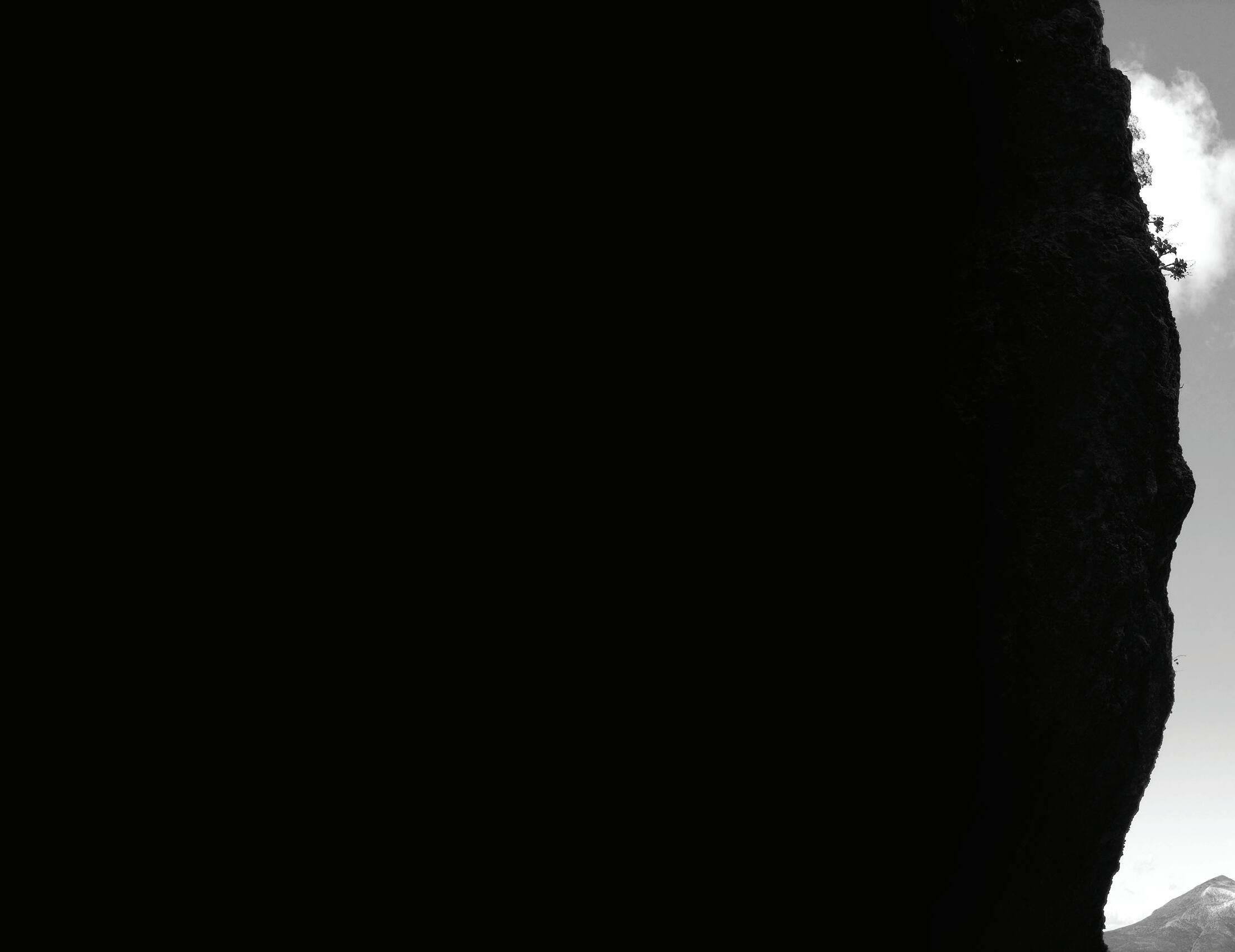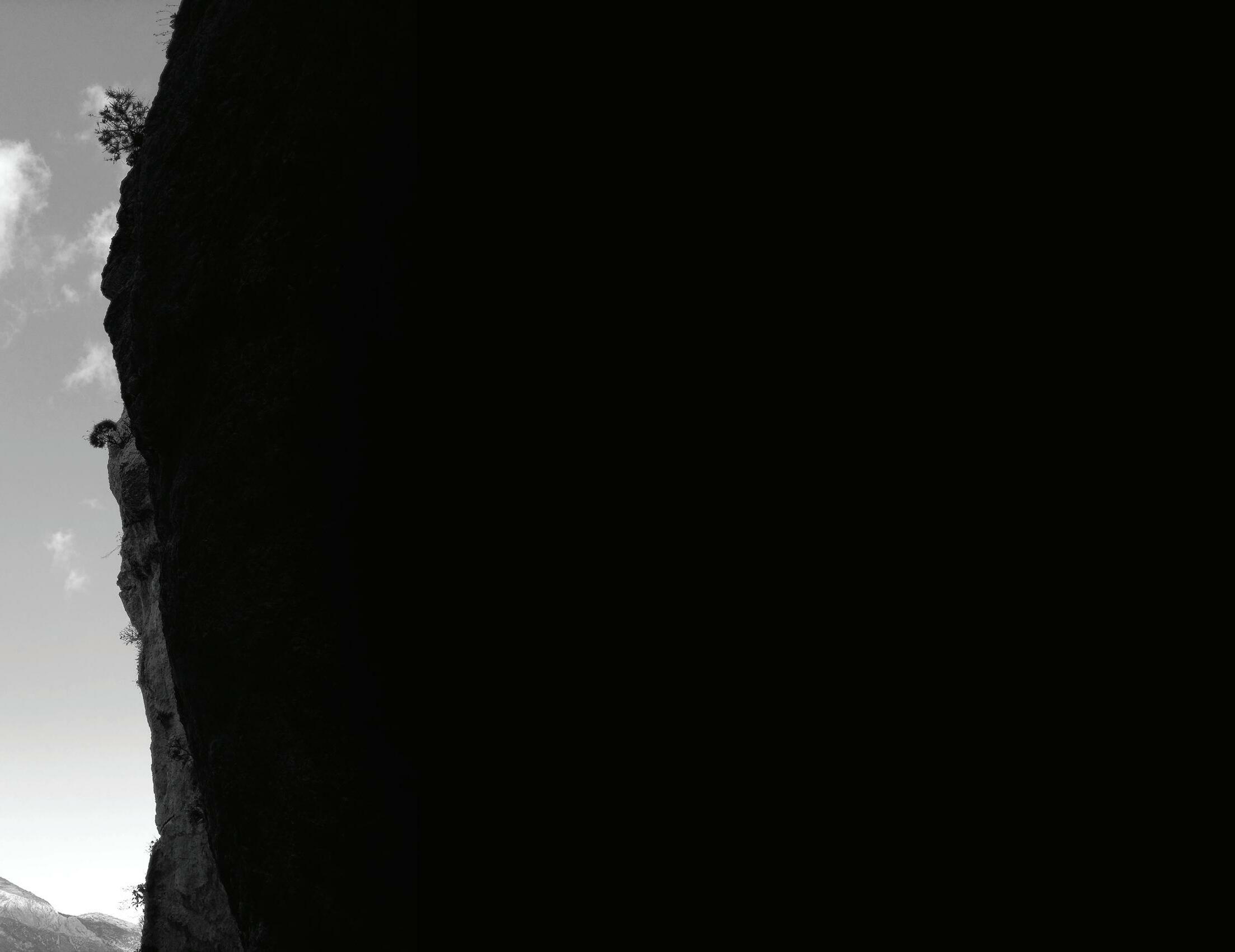 Michail Pikos - Select
Michail Pikos - Select
 Michail Pikos - Select
Michail Pikos - Select
ORDER OF CONTENTS
STUDIO WORK
BELMONT PRISON HART ISLAND - SACRED SPACE CHAPEL OF THE EARTH
COMPETITIONS
PROFESSIONAL WORK
PHOTOGRAPHY
Stigsgaard
Haritos
Volkmann
Collins
Askarinejad
Gonzalez
DESERT GALLERY
EXTENSION STRUCTURE THROUGH LIGHT LIGHT AS STRUCTURE CUENCA PIAZZA
BELMONT PRISON
The justice system in the United States is largely organized around profit and partakes in the vicious cycle of incarceration. The goal of this project is to design a prison on Belmont Island, a small islet between Queens and Manhattan directly south of Roosevelt Island, that addresses the basic question of how we collectively treat those among us that go astray.
1- Punishment in terms of prison, involves isolation from greater society as a way of imposing generally agreed upon values. Ideally punishment and reform work hand in hand to enforce moral structure, keep people safe, and hopefully improve the character of the offender.
2- This duality of punishment and reform should express itself architecturally. There should be a clear distinction between spaces of isolation and spaces of reform.
3- There is a gradient of offenses people commit against society, and thus should be reflected in programmatic organization and spatial hierarchy where prisoners are organized in accordance with their offenses.
4- Punishment and reform should correlate with isolated and open space. This should also speak to the relationship of the ‘interior; of the prison to the city around it.
5- While the prison should be removed from profit motive, prisoners should be productive to maintain and build their character. This can involve general or specific education, training, and therapy. This will allow prisoners to be positively reformed and positively contribute to a greater society once they are free.
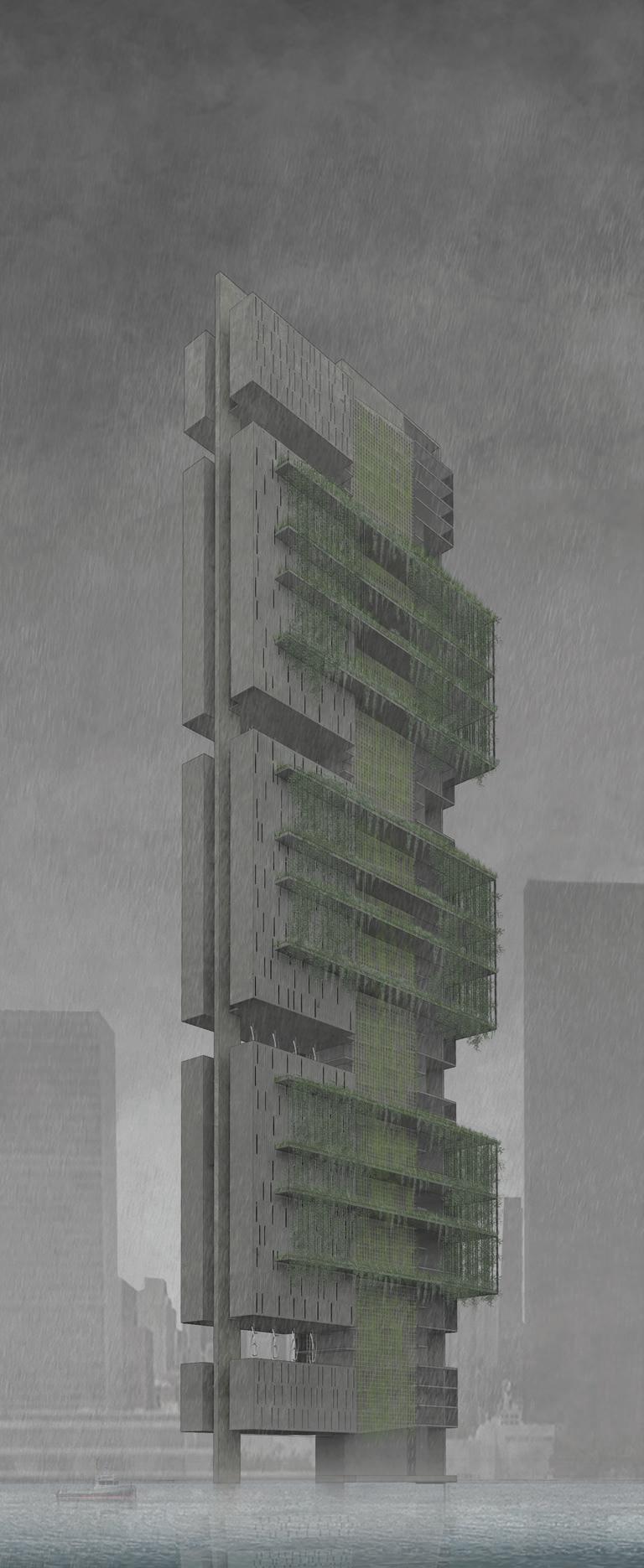
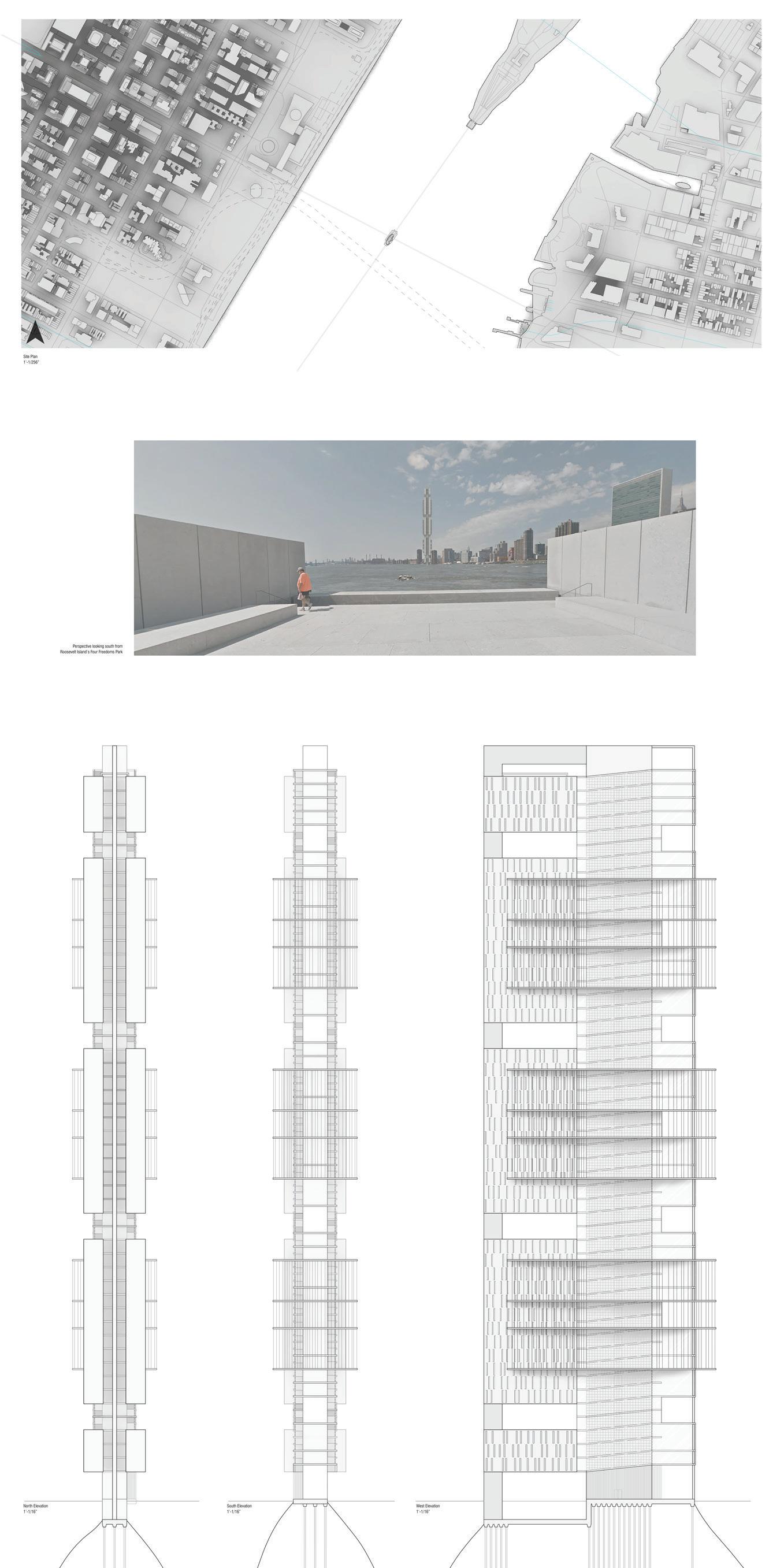
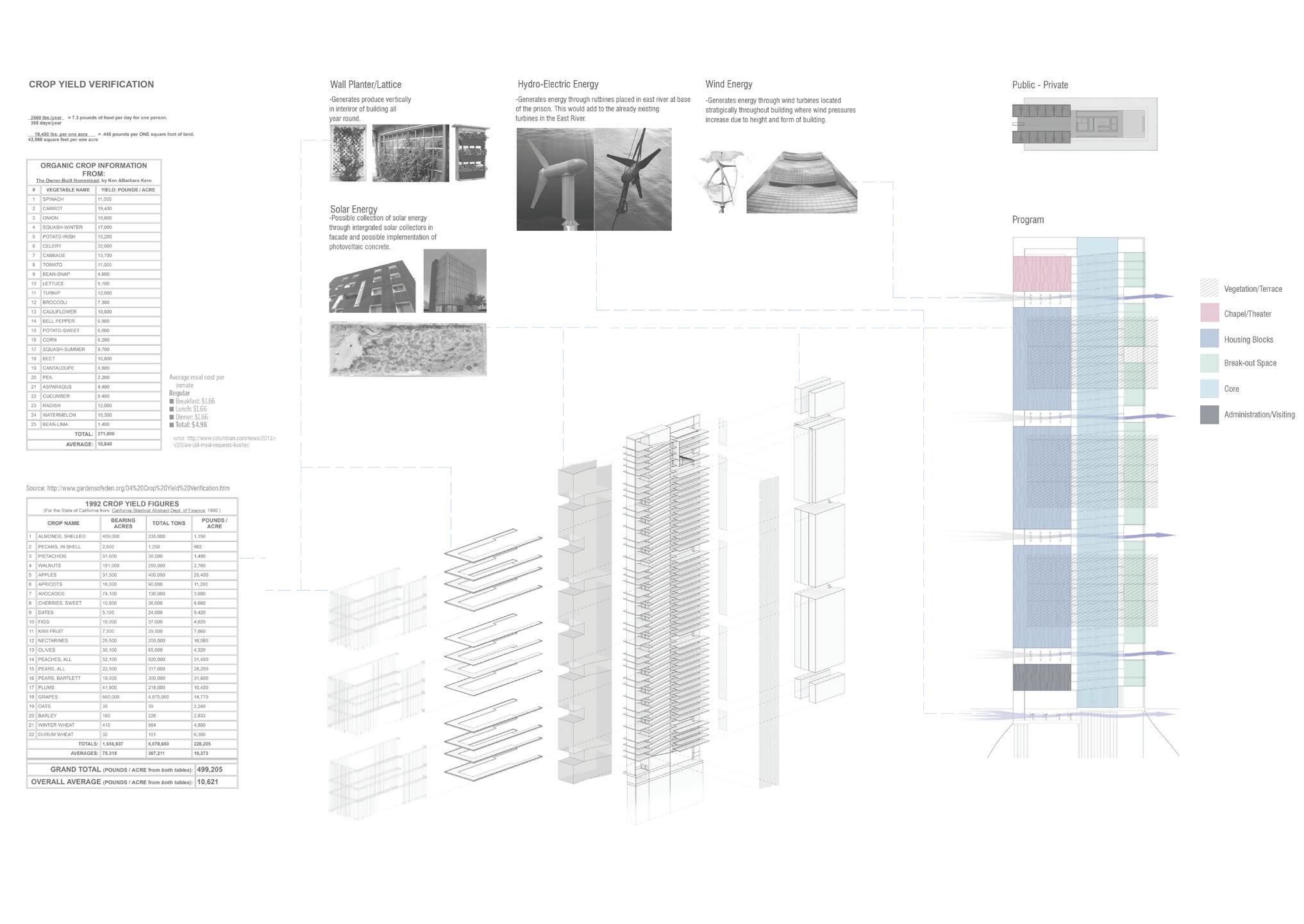
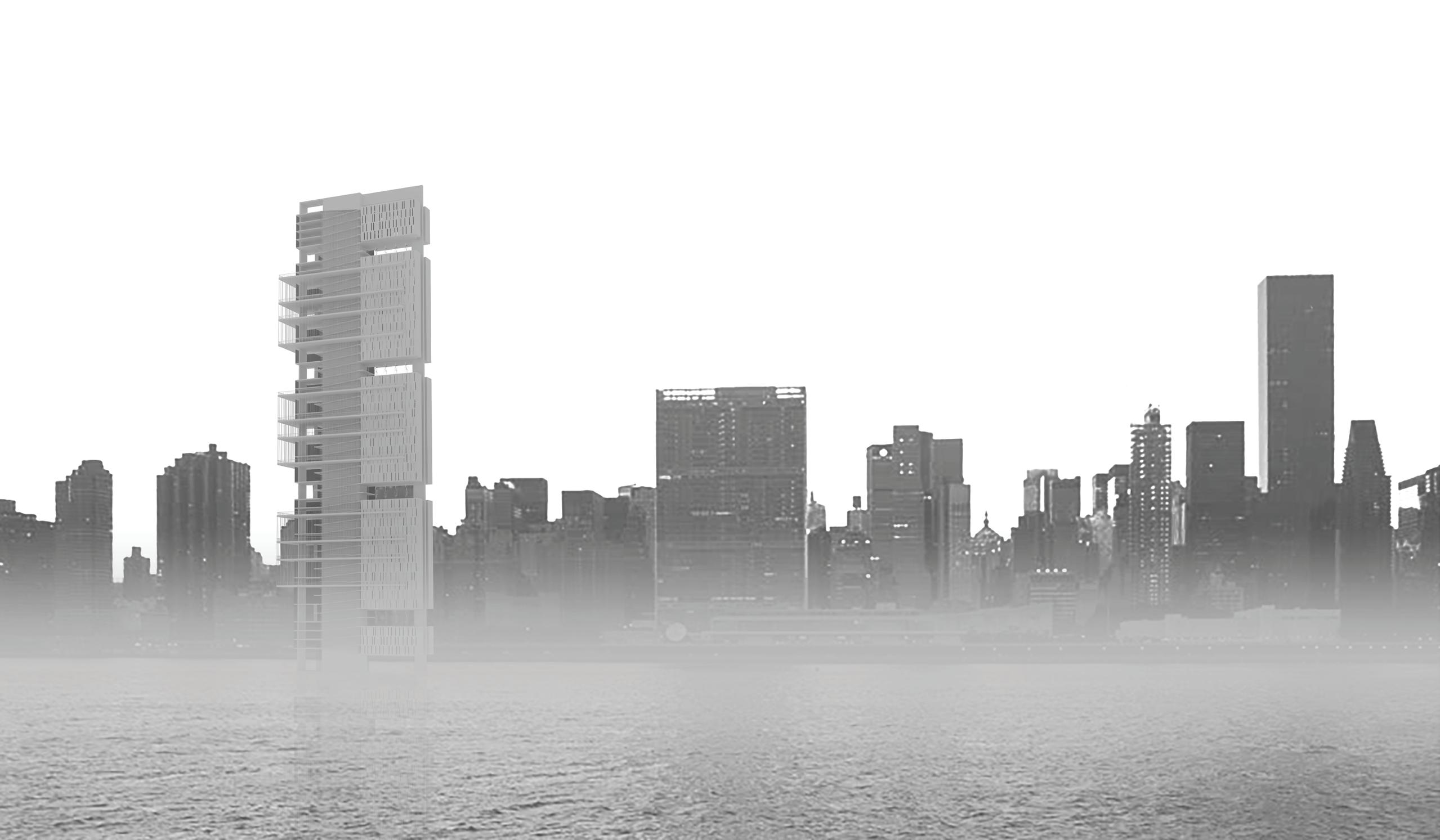
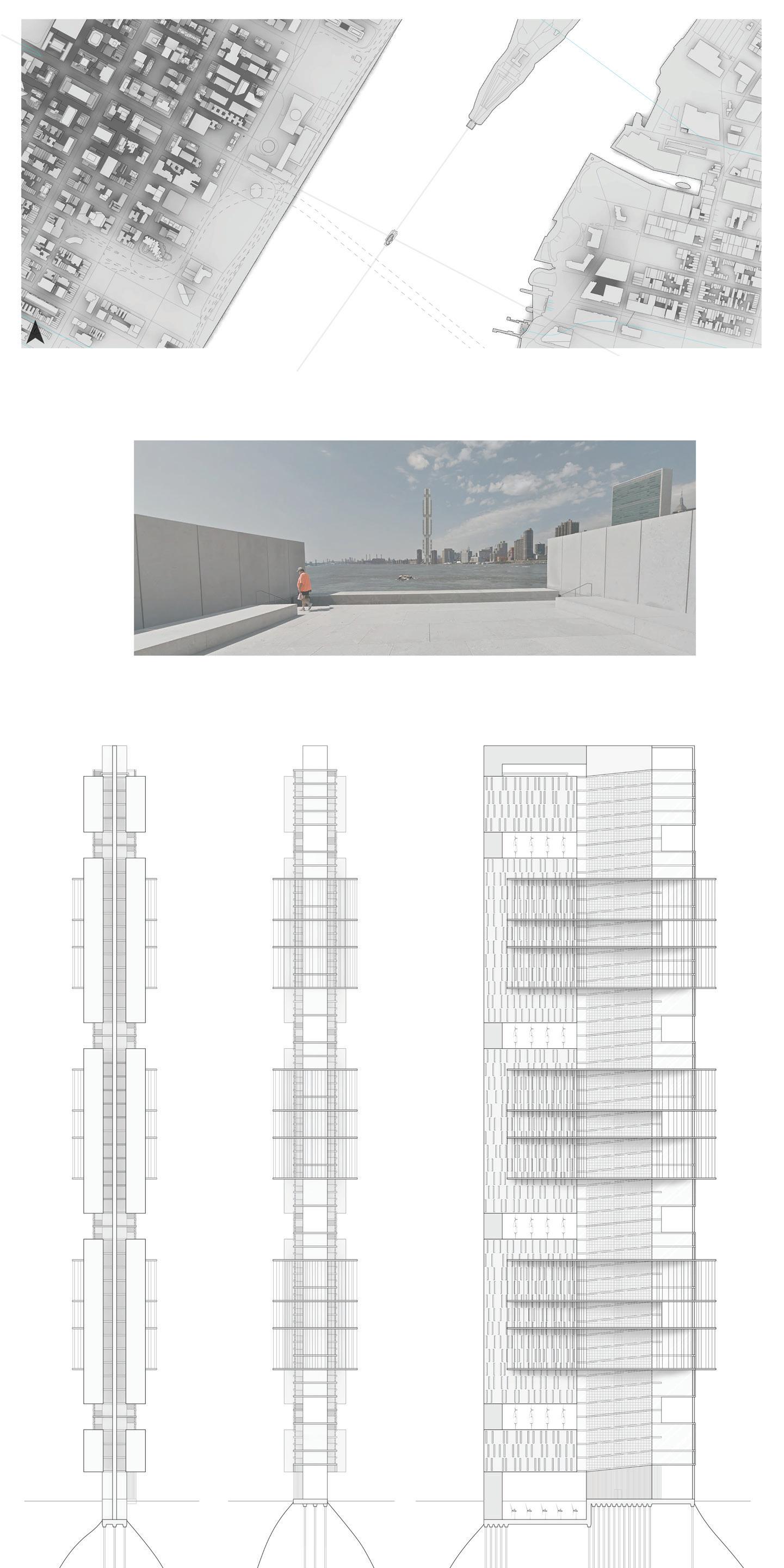

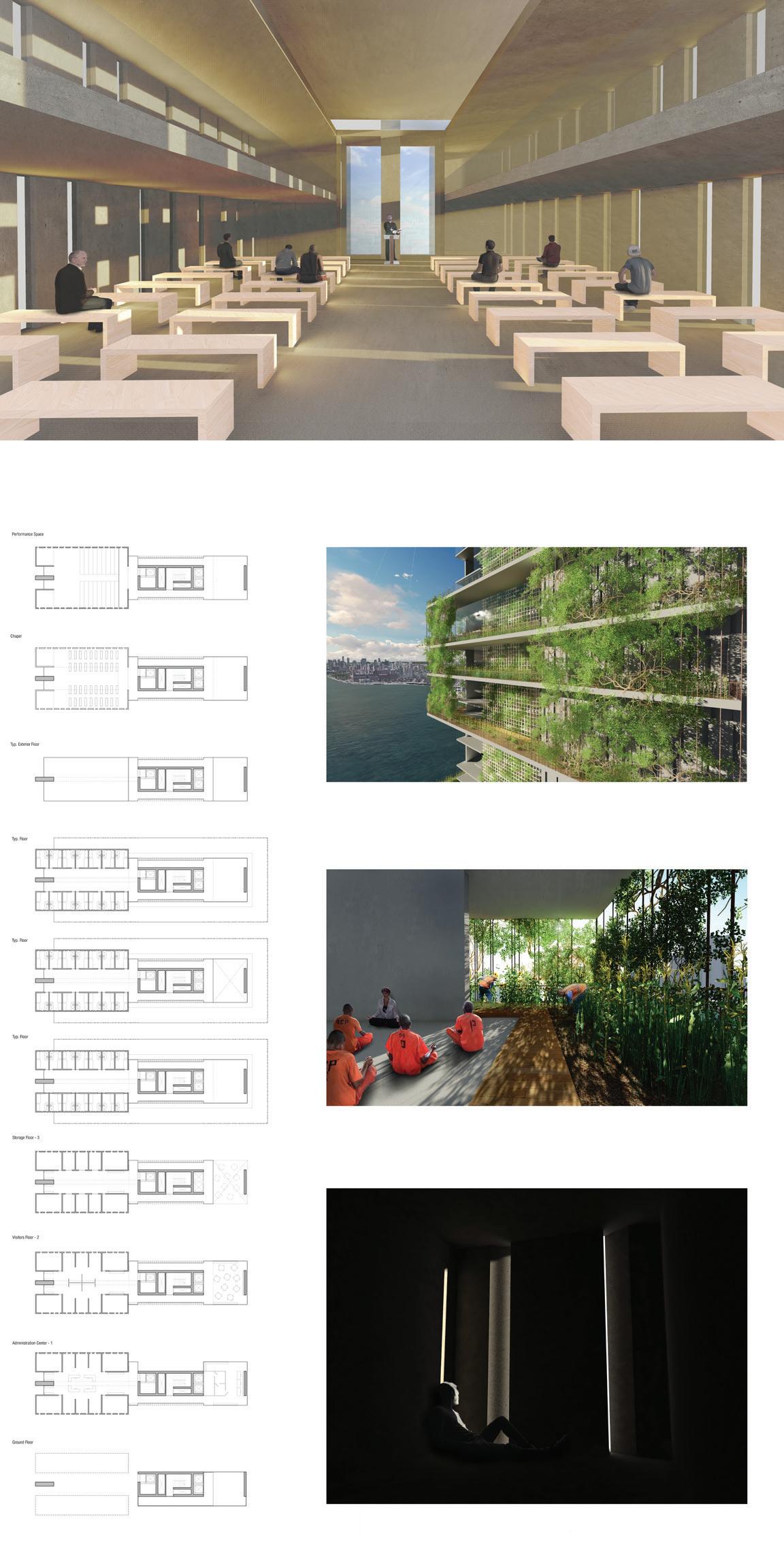
PRISON EXTERIOR
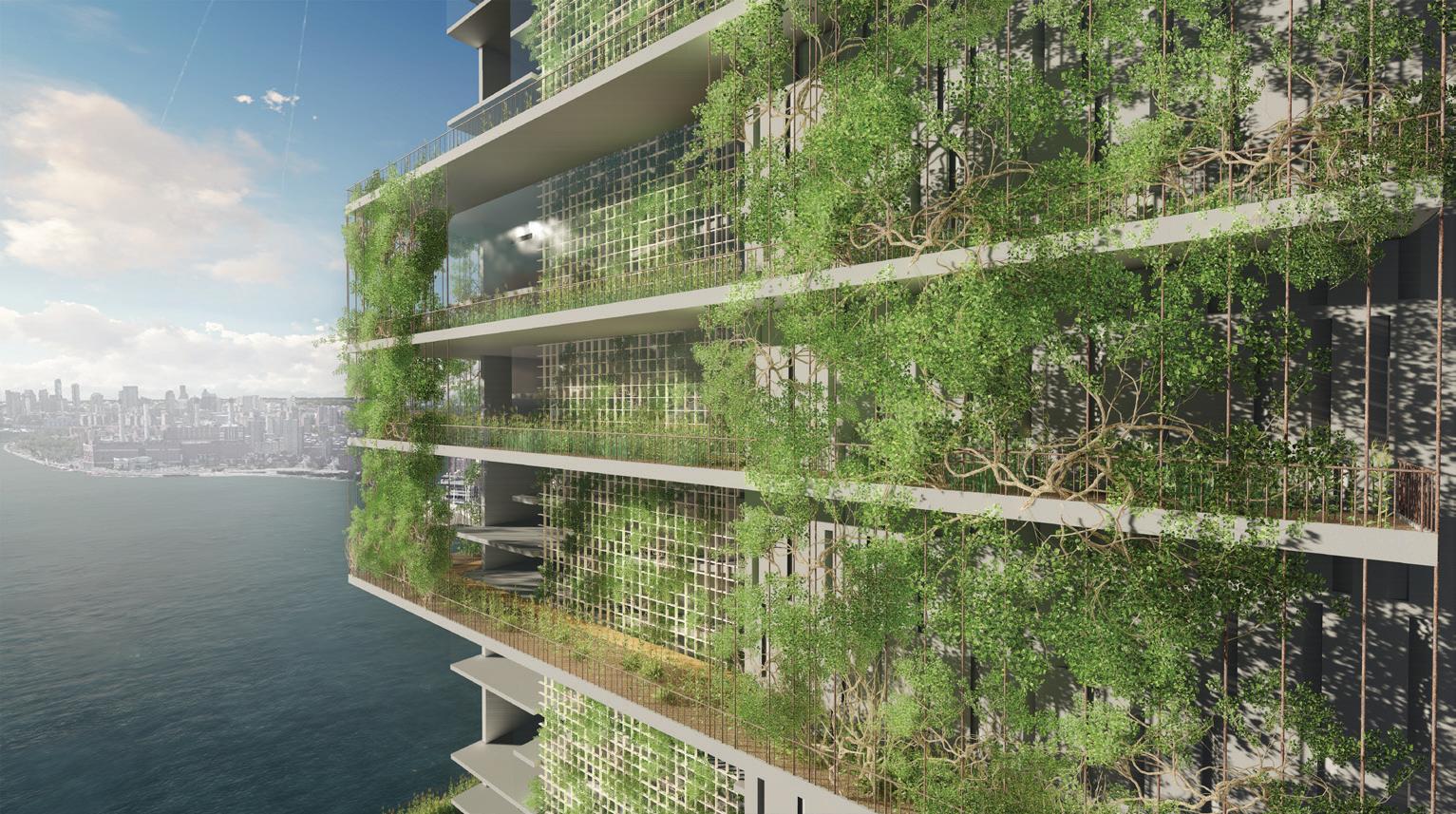
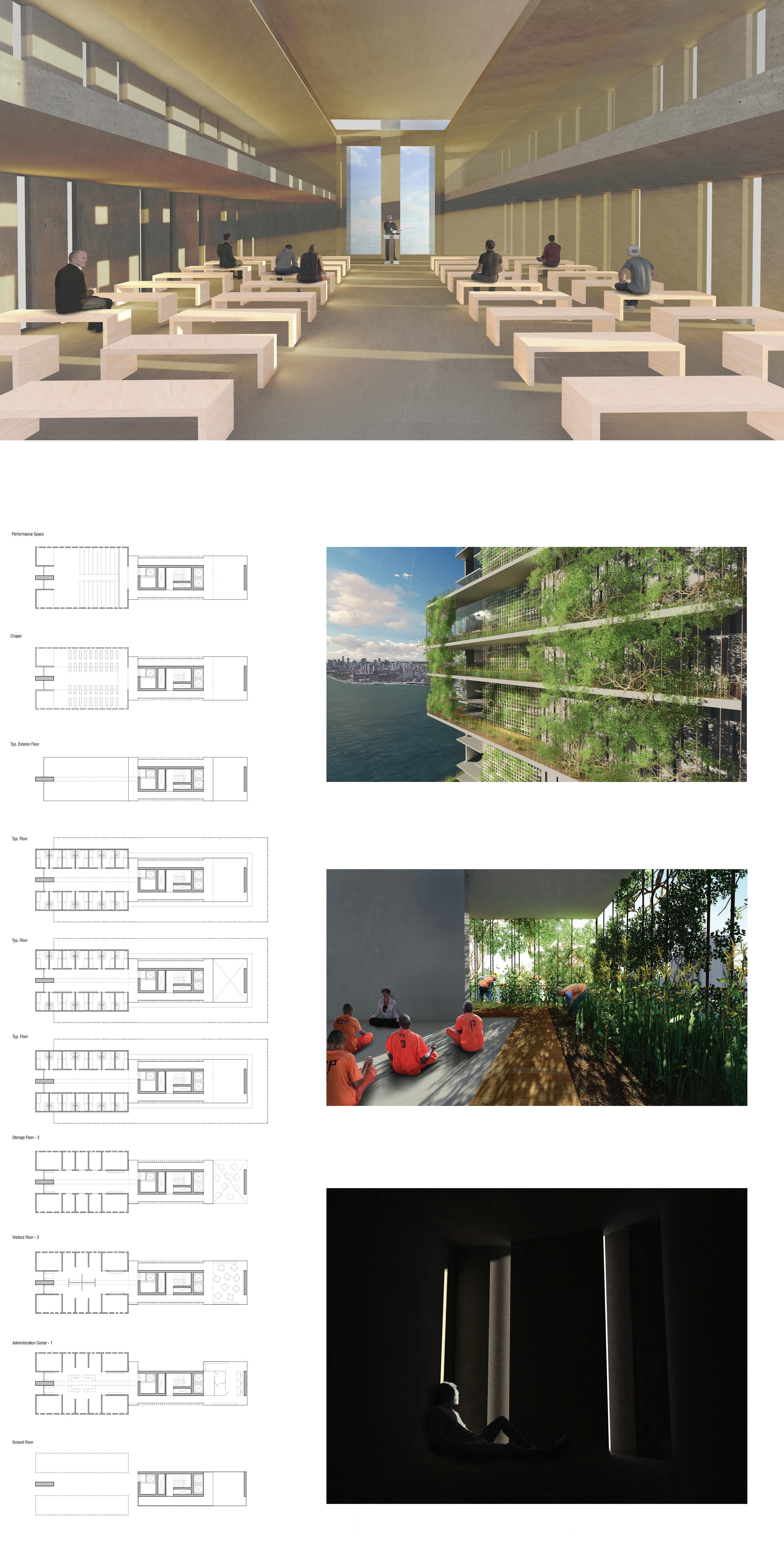
CELL INTERIOR
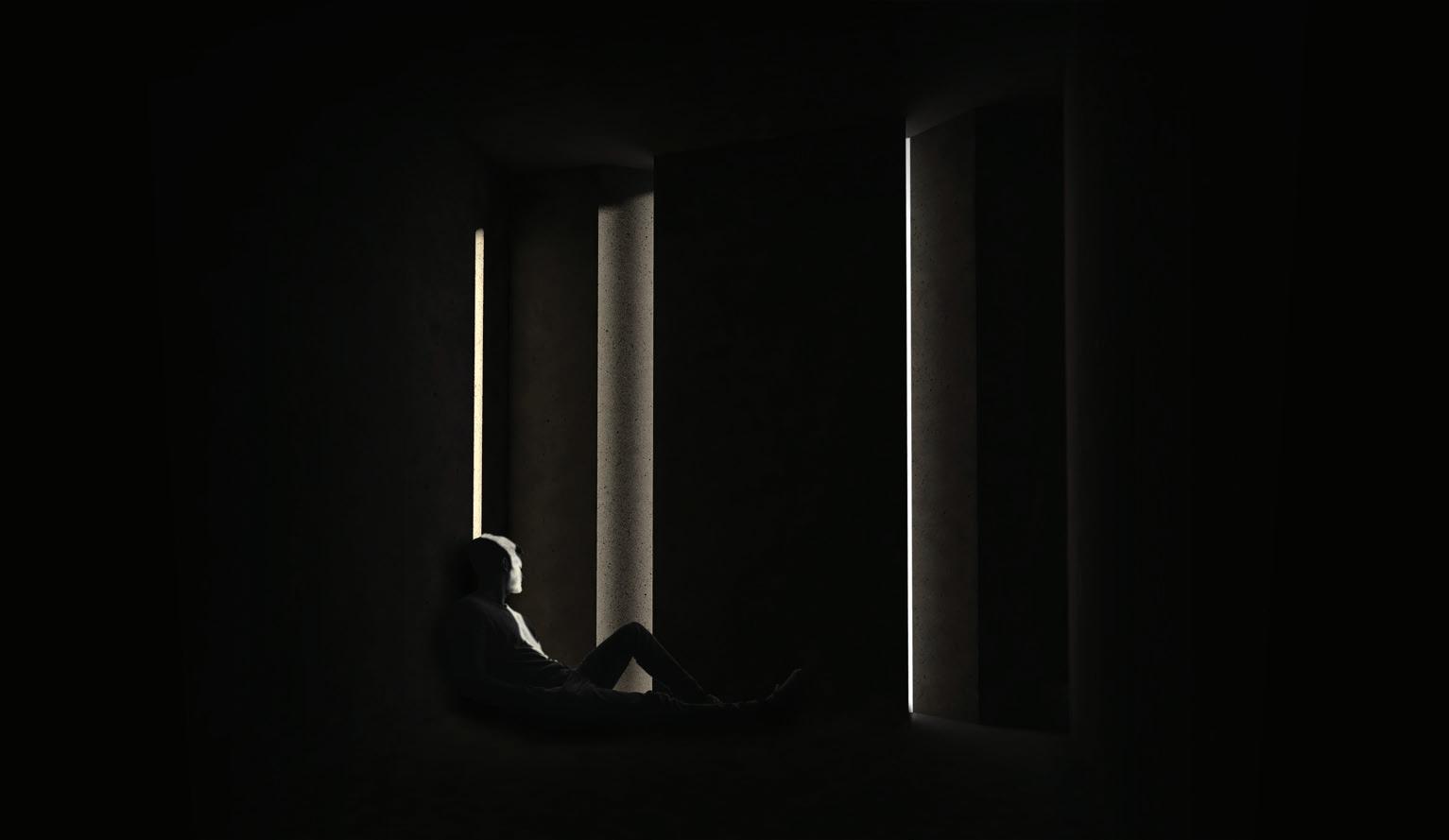
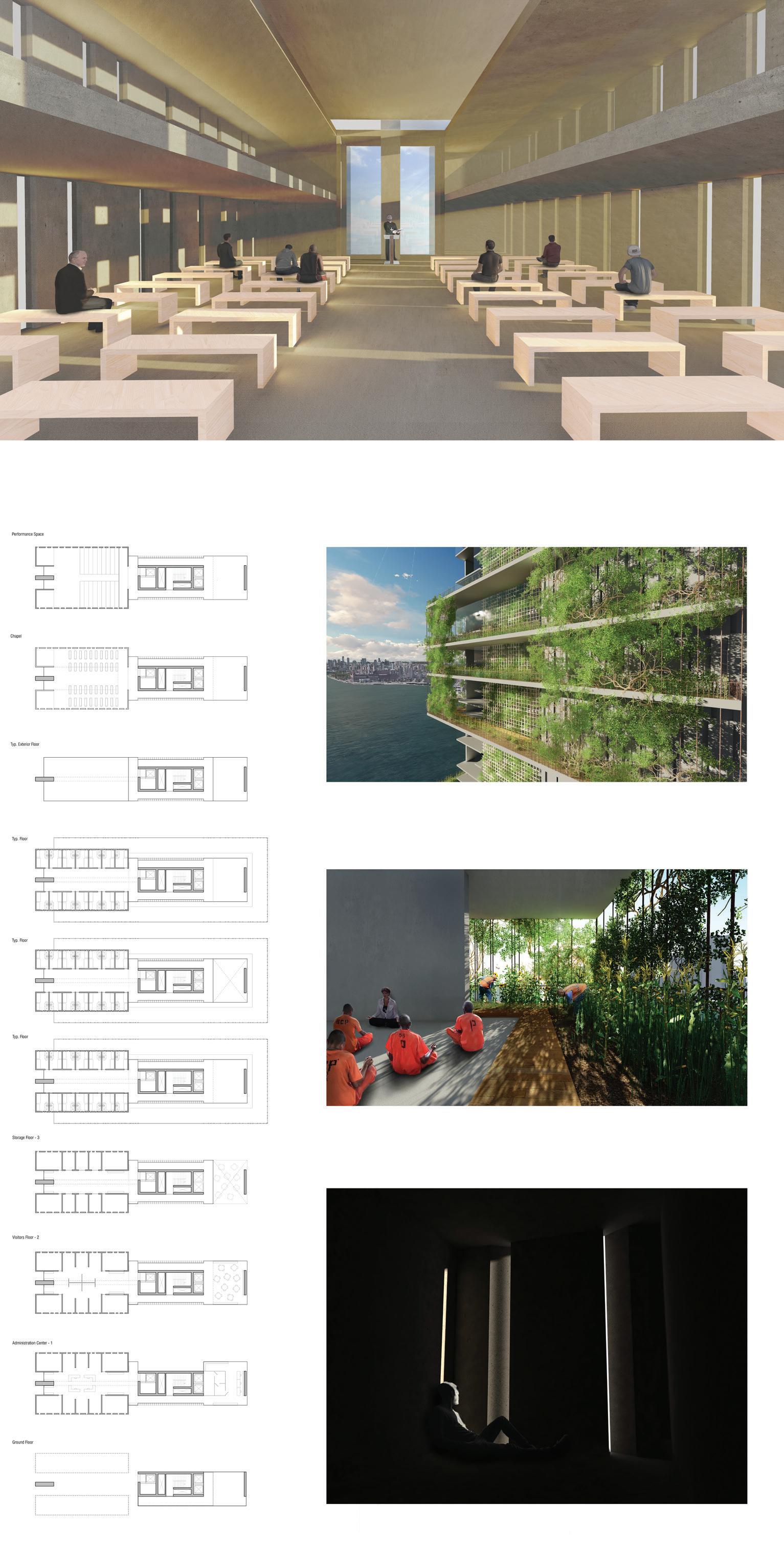
HART ISLAND - SACRED SPACE
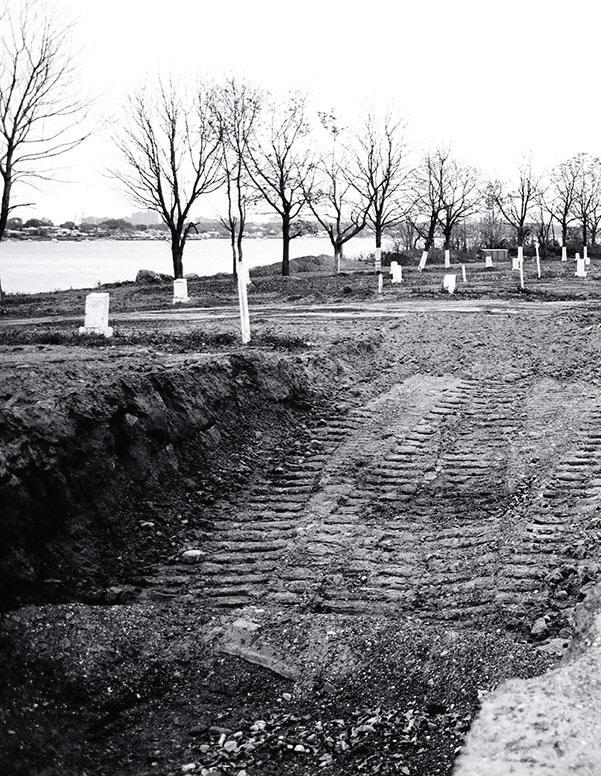
Hart Island is a one mile long Island located on the east river on the northern edge of New York City. The island first was used as a place for war prisoners during the civil war. Over time, a host of institutions were placed on the Island such as a workhouse, a hospital, prisons, a reformatory, and even a Nike missile base during the cold war. Today however, most of these structures are abandoned and in ruin. The most critical and lesser known aspect of the island cannot be seen by the naked eye. Throughout much of the last century to this today, the City of New York buried the unclaimed bodies of people that have passed away on Hart Island. In total, there have been around one million burials here, most of which are unmarked. The city recycles the soil with new burials every 25 years as the old bodies decompose and are replaced and is currently managed by the Department of Corrections. The objective of this project is to create a sacred space and visitor’s center for the deceased on Hart Island with proper respect to both the dead and the living.
To move is to narrate. This project narrates the human experience of life and death. Movement among different planes of existence translate to sectional and planar transformation within the project. The meditative element within this lies in its circulation system with important moments of stasis and recollection. The user occupies and moves through spaces with the express goal of simultaneously circulating “within and without” one’s own consciousness while doing so physically through plan and section. The scale and form of the building manifests the journey of mortality, where one experiences the concept of liminal space everywhere and therefore understands that both life, and death, consists of a journey to be actualized.
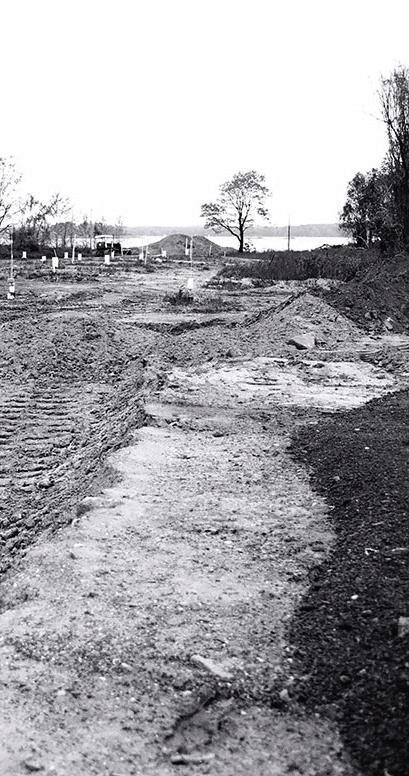
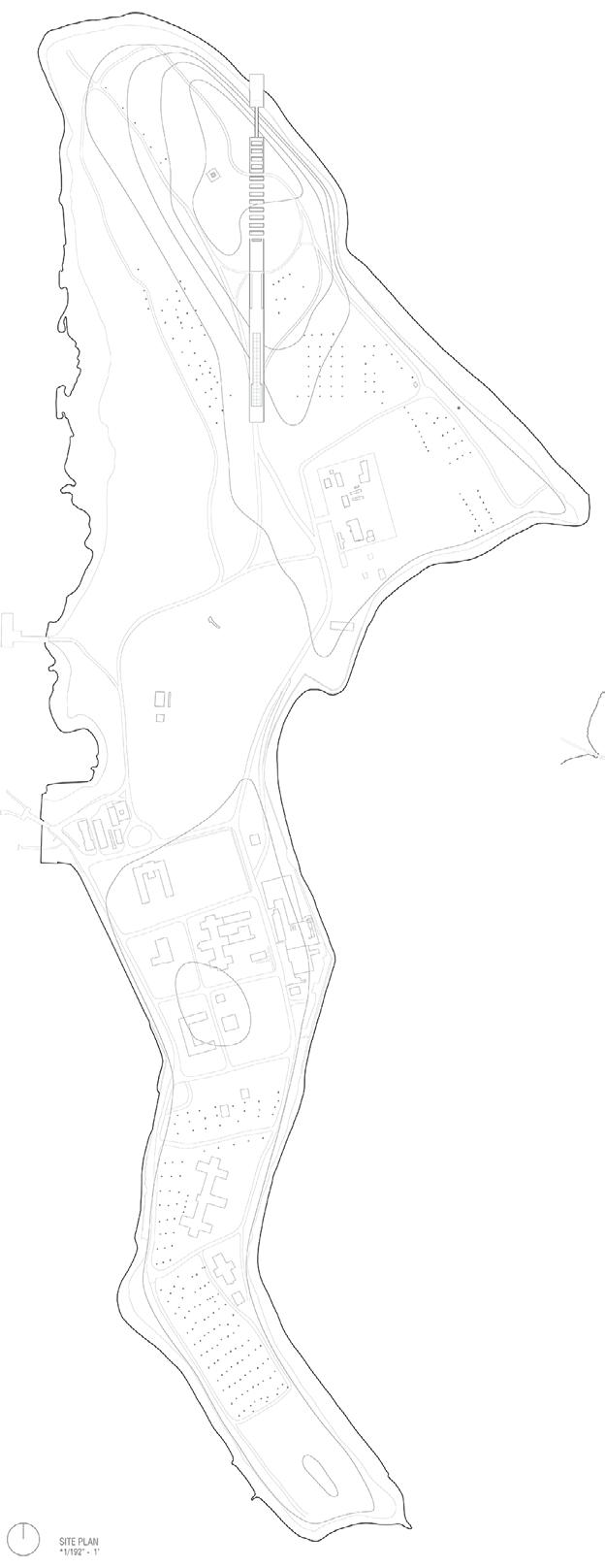
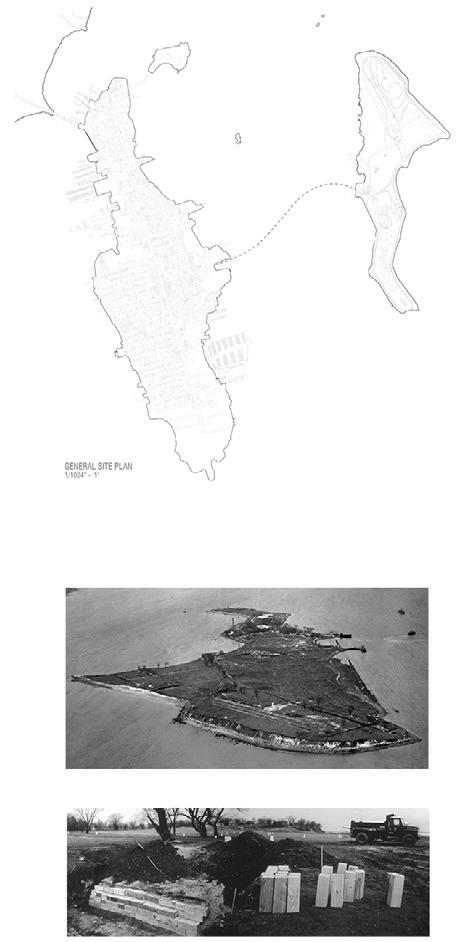
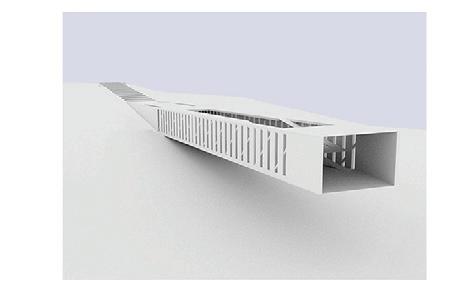


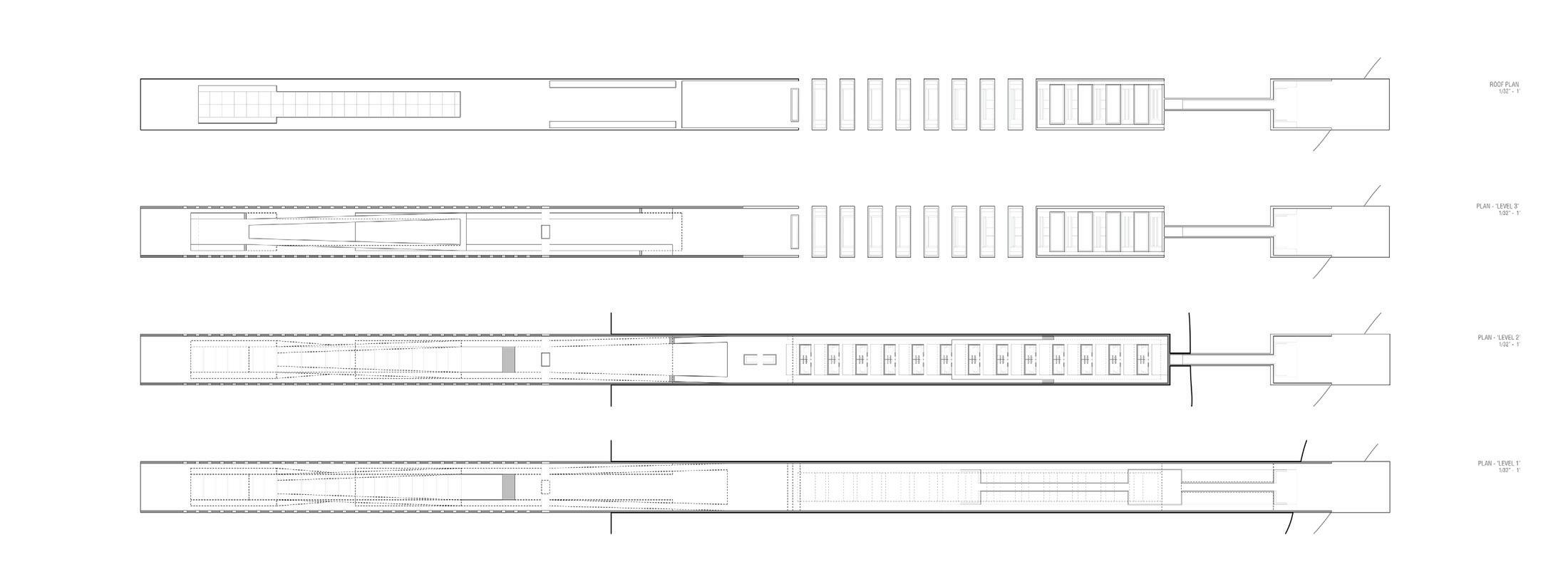

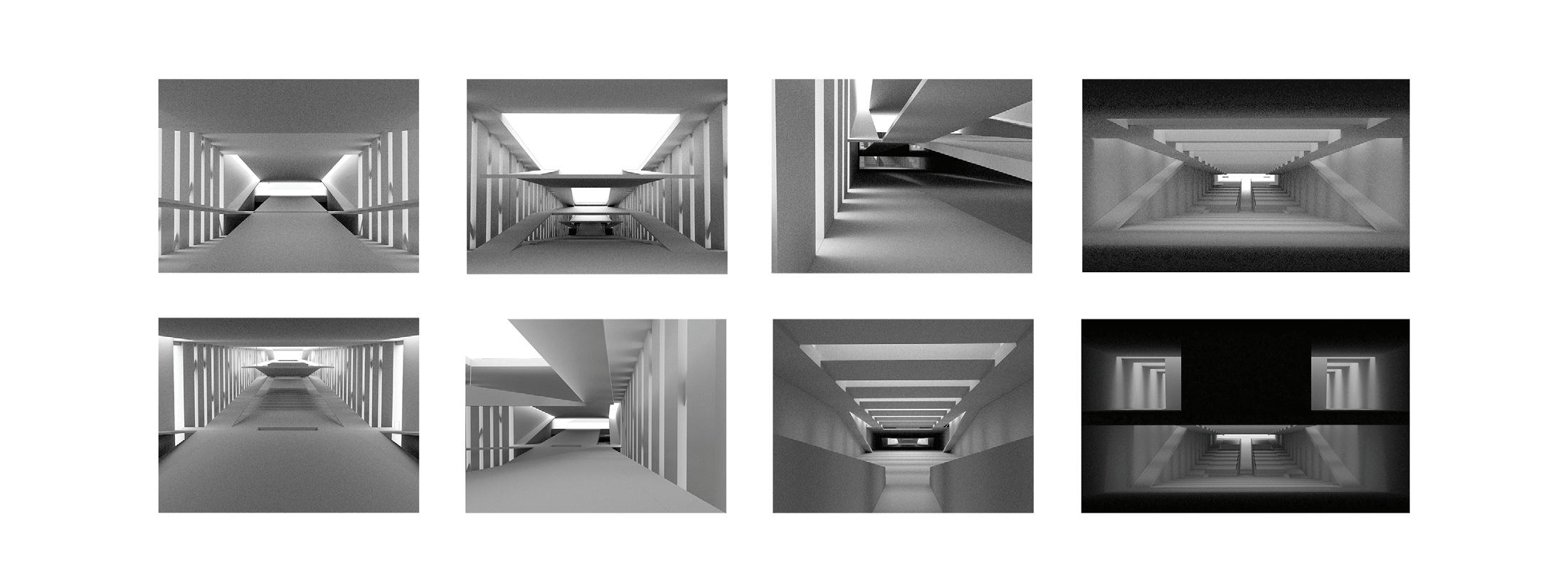
CIRCULATION DIAGRAM STRUCTURAL DIAGRAM



DETAILED PLAN
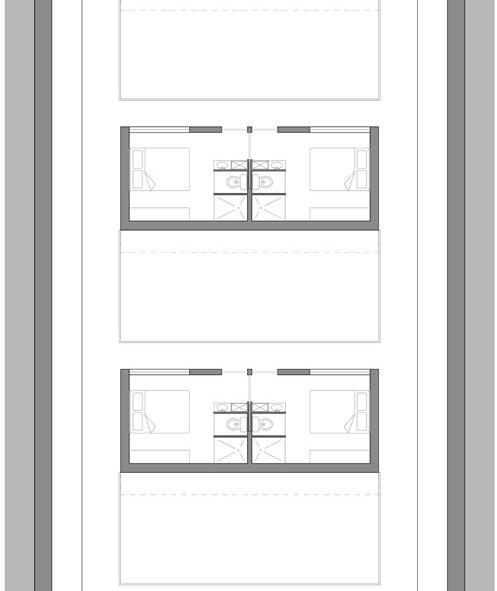


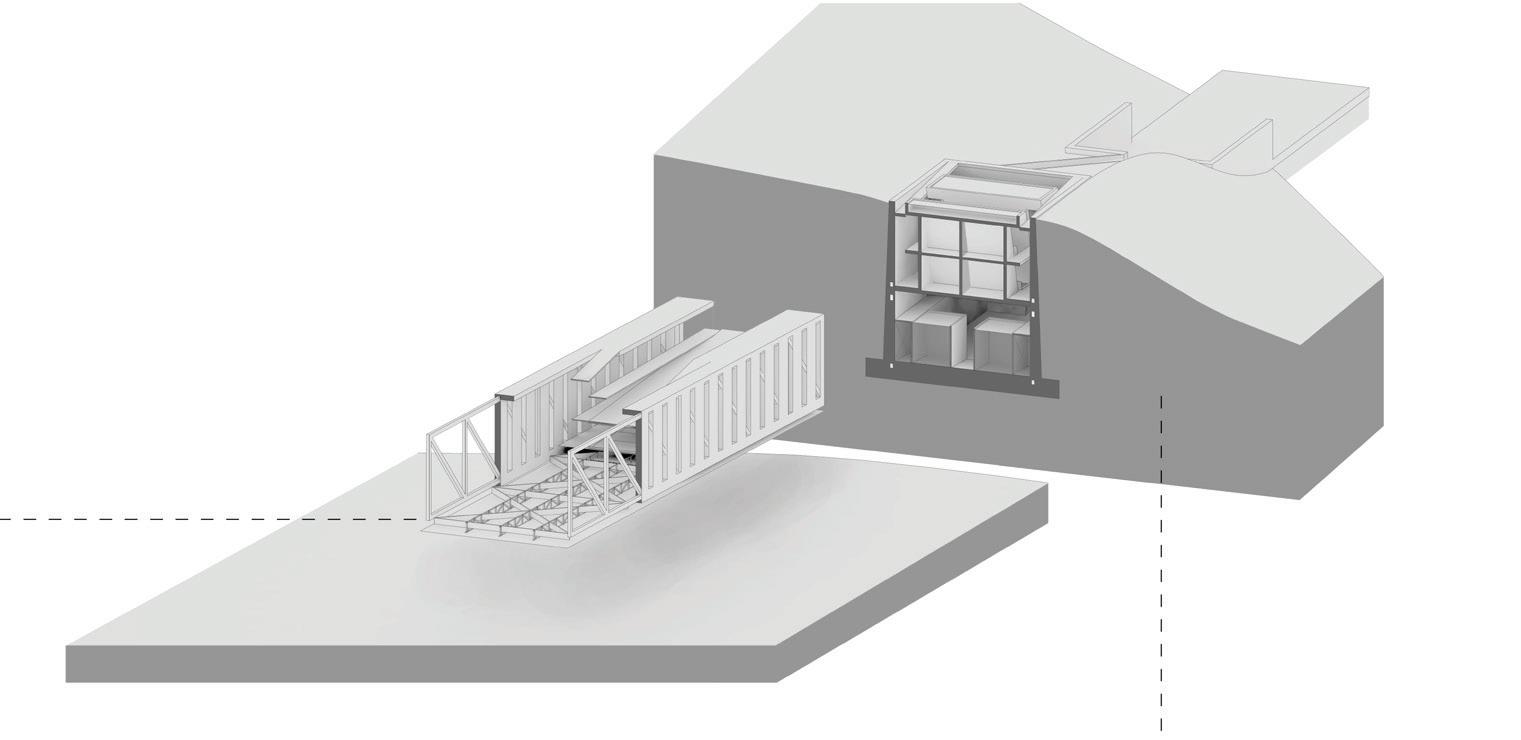
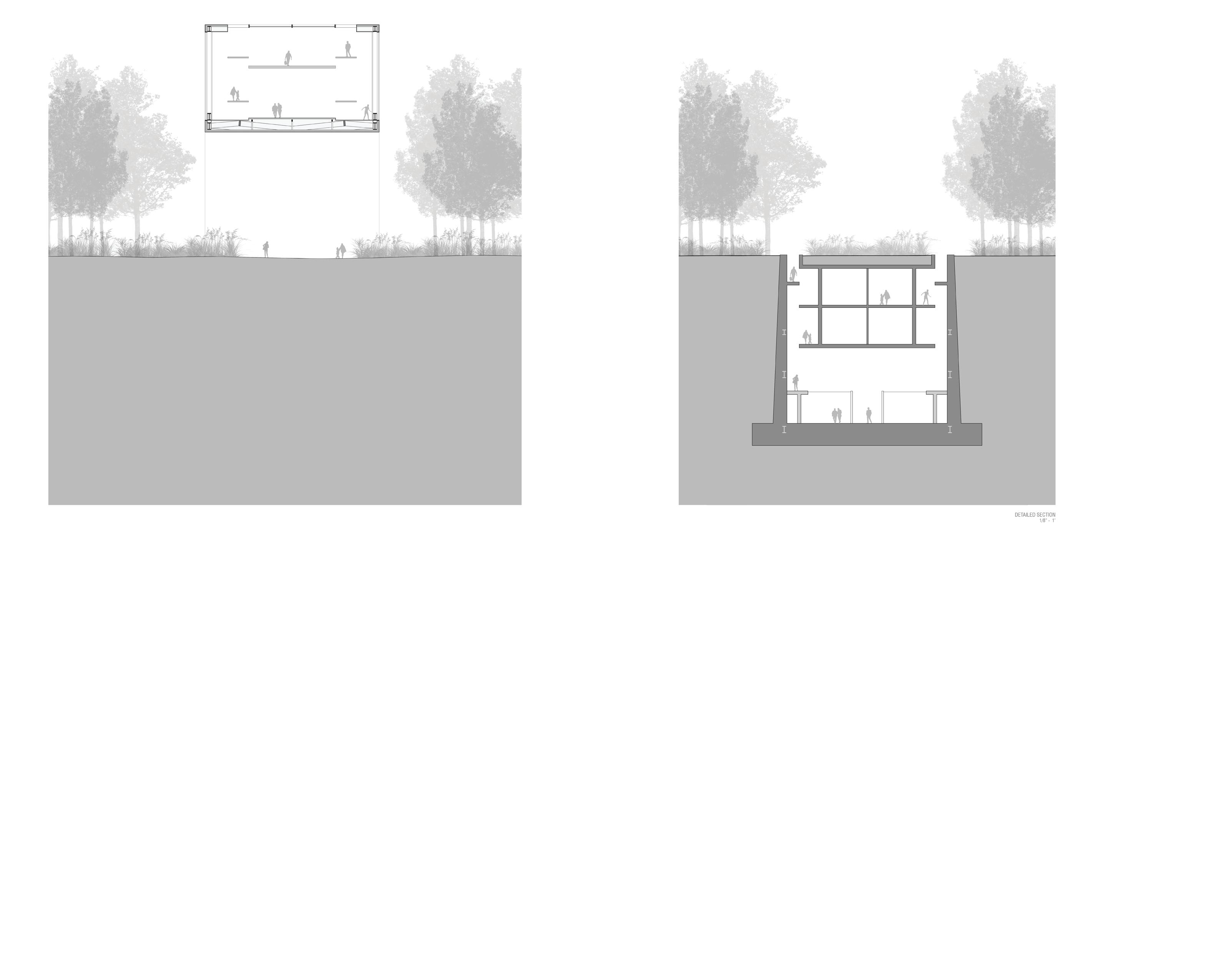





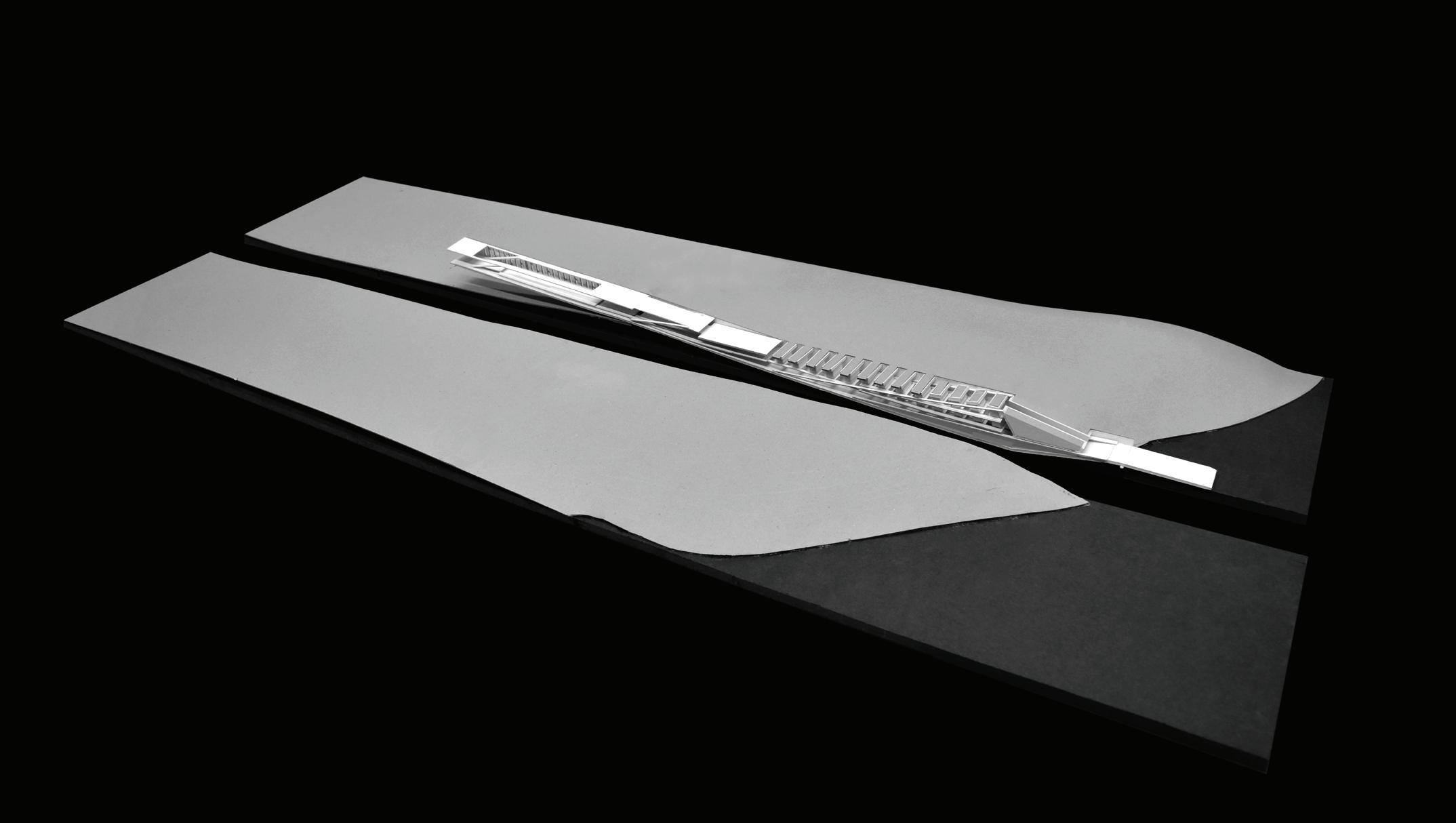


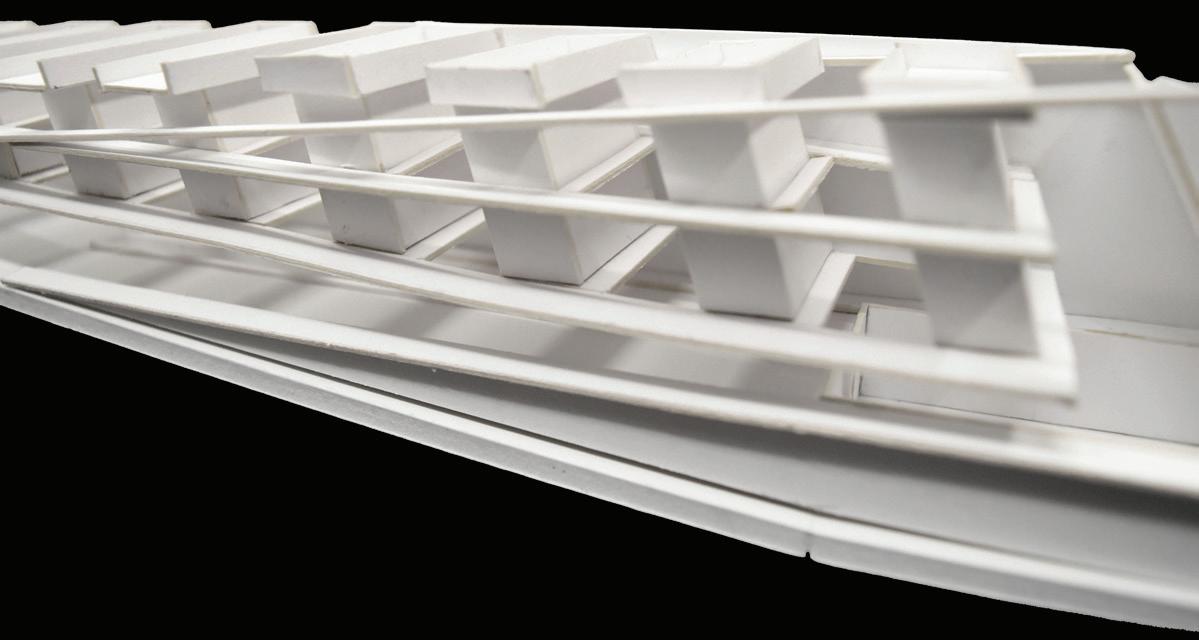
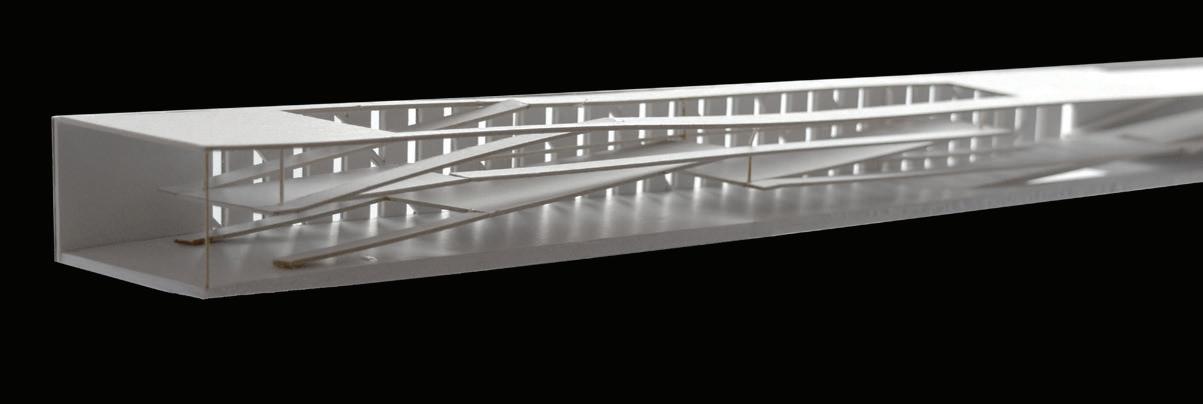
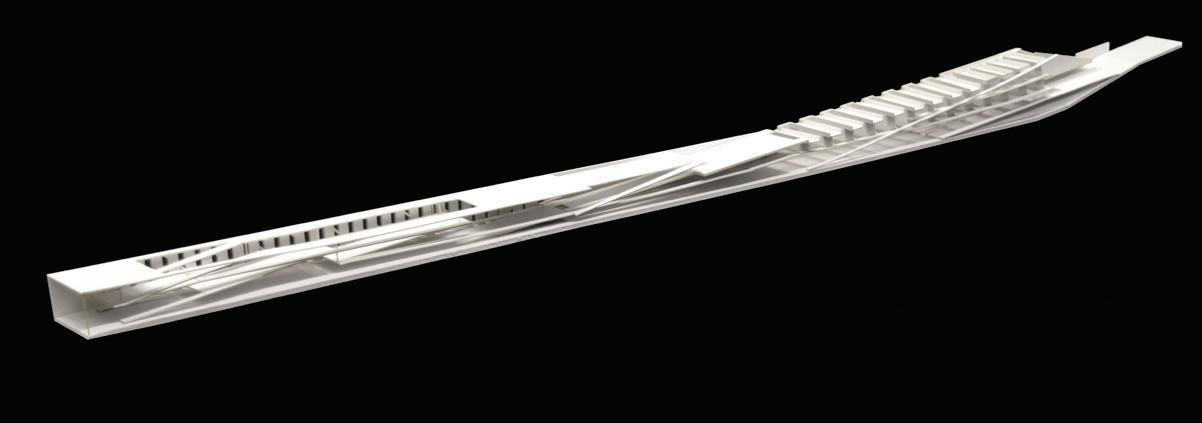
DESERT GALLERY
Montello Foundation Competition: Honorable Mention
Partner: Victoria GrazianoTraditionally, an exhibit space serves to frame presented works of art. Here the structure exhibits both the artwork ‘within’ produced by artists, and the artwork without produced by the natural world. As one approaches or passes by, the structure maintains a continuously changing opacity where the desert environment and the core materialize and dematerialize to the viewer. This renders the desert environment as an active participant in terms of exhibition, where it simultaneously frames the structure and is framed by it as a work of art.
Space and people filter through the field of timber elements towards the art that is nested within the rammed earth core of the structure. The timber elements touch the earth lightly and the rammed earth core of the space is made of the same soil of the desert itself. This does not only respond to the site in terms of building economy and sustainability, but it generates an osmosis of light and space that guide one through a procession to a nest of artwork in the desert.
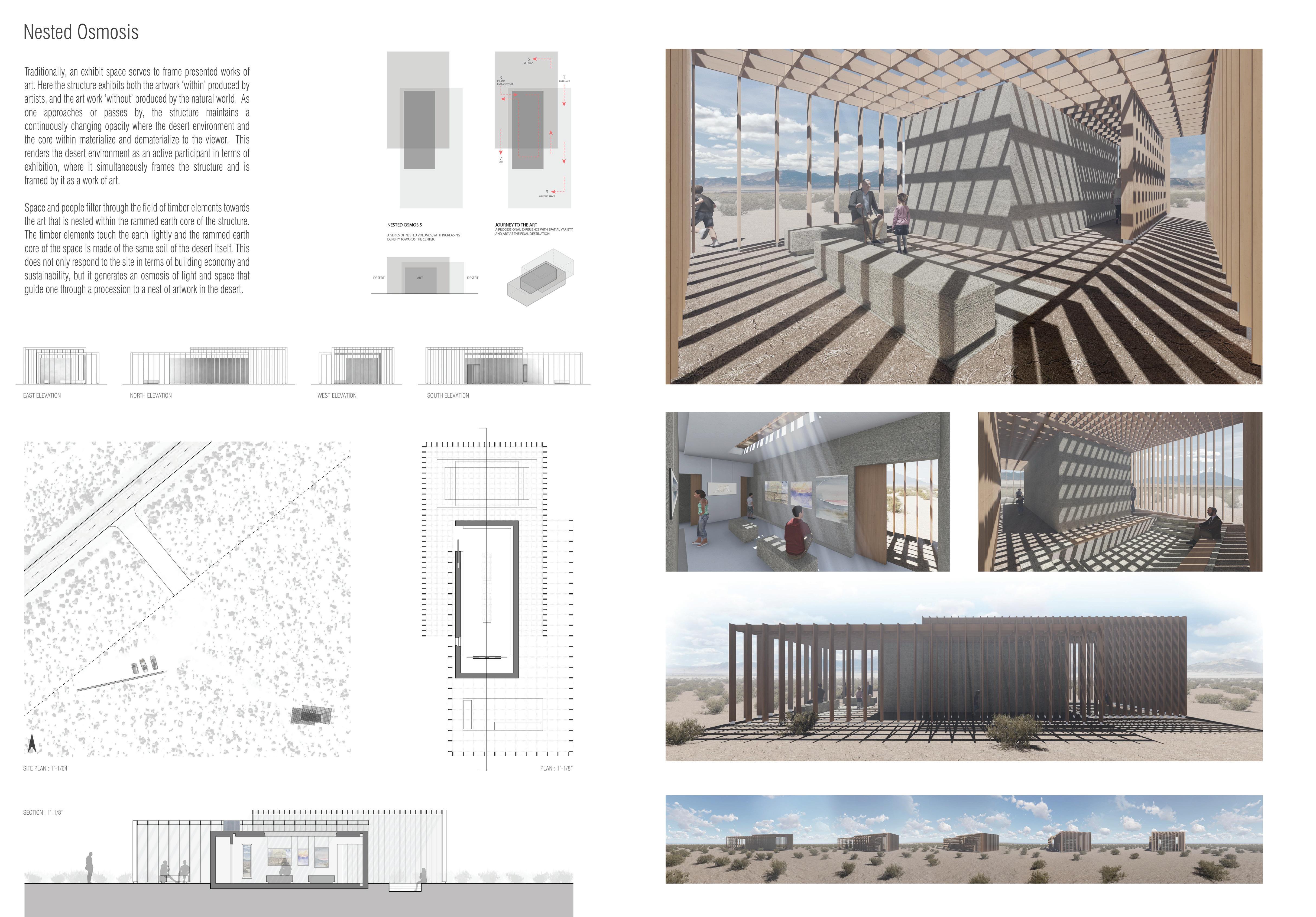

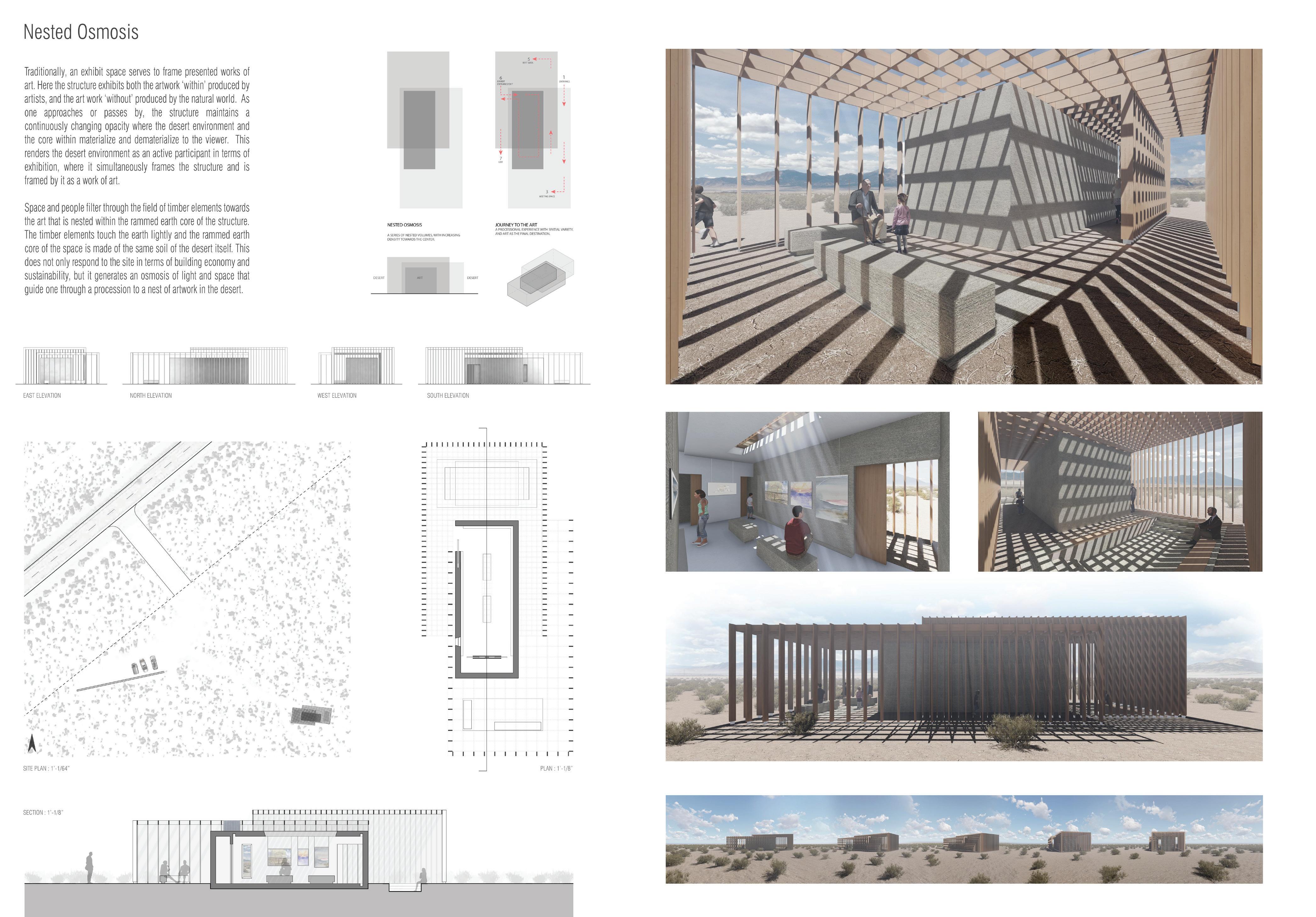
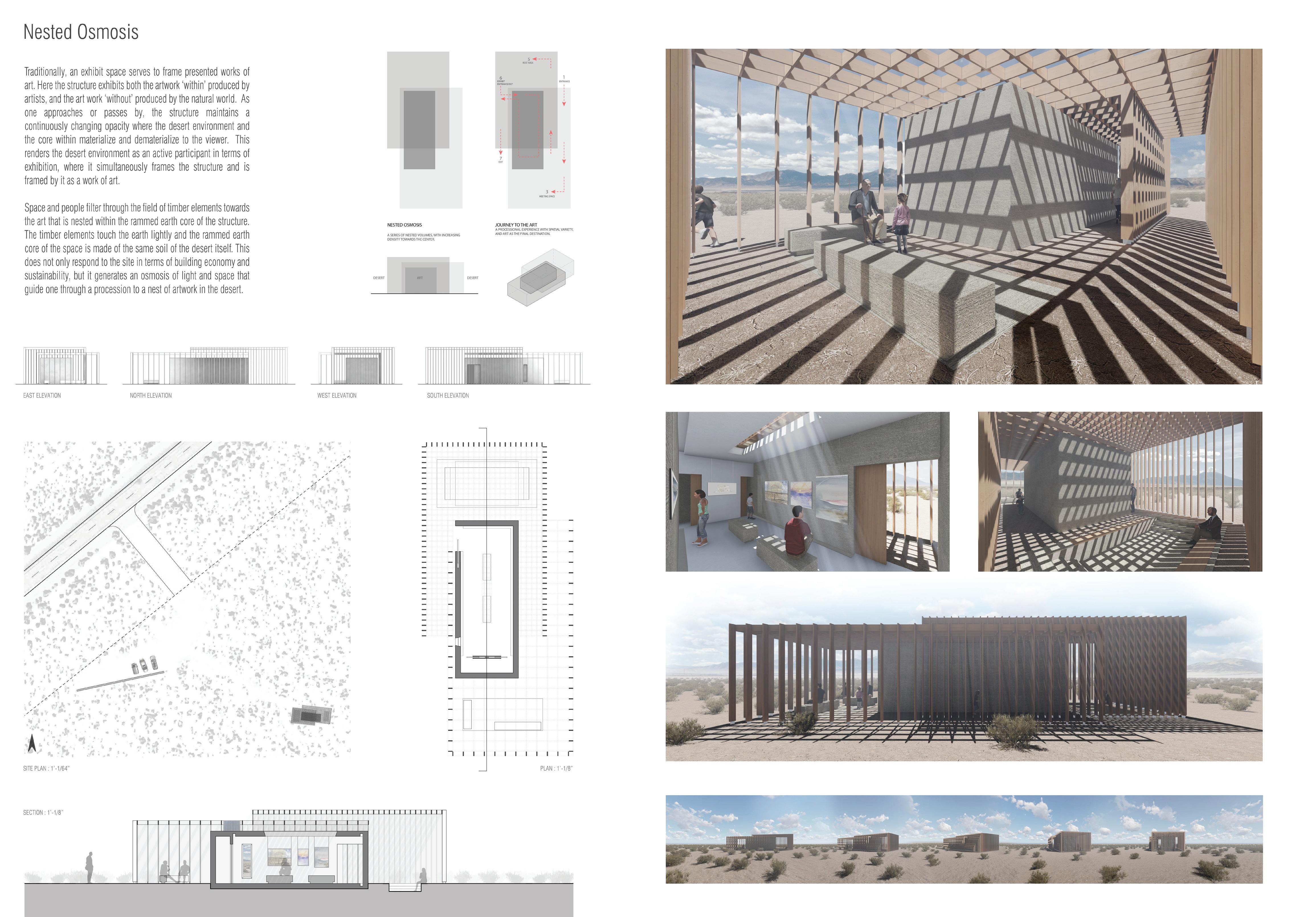
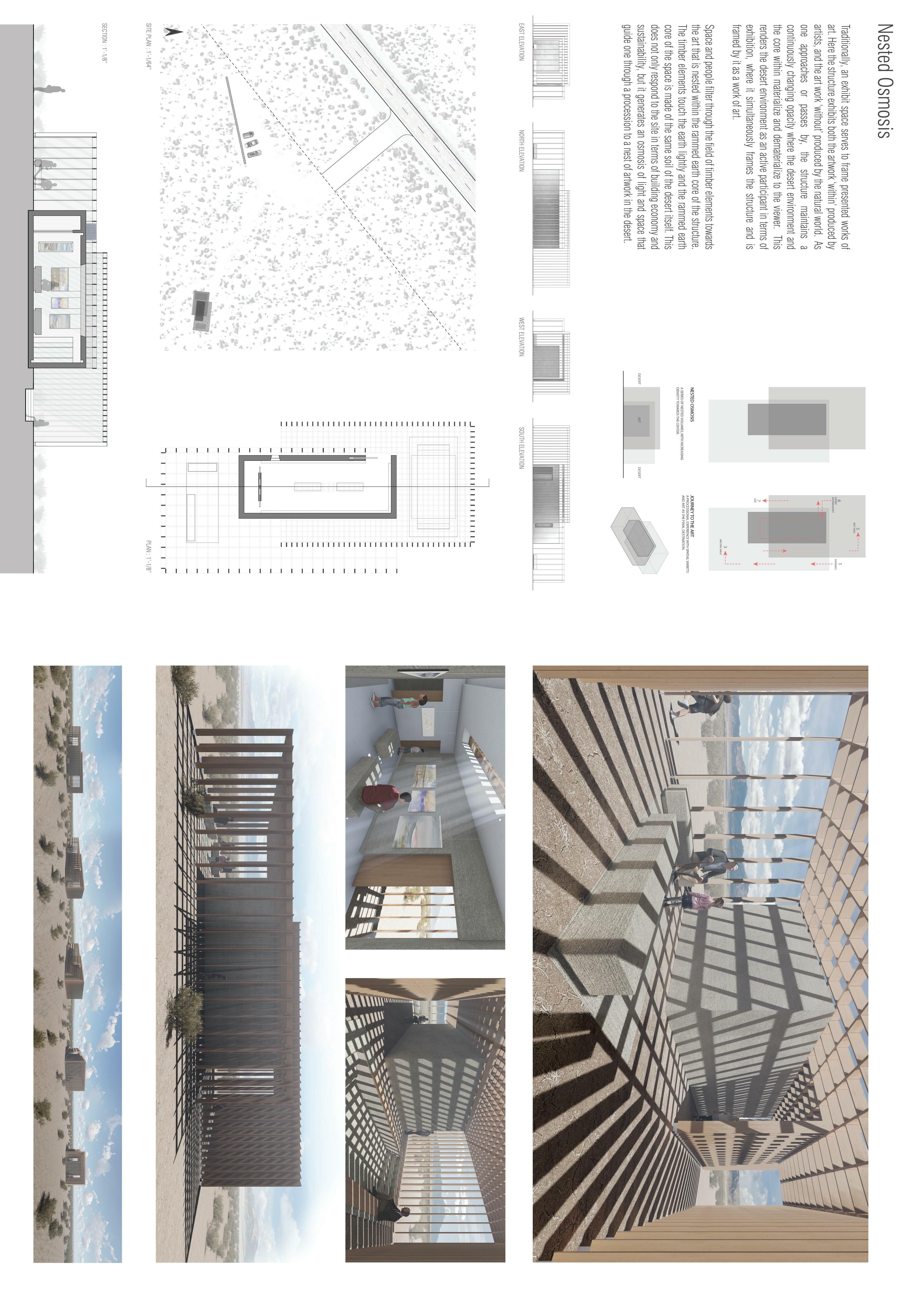
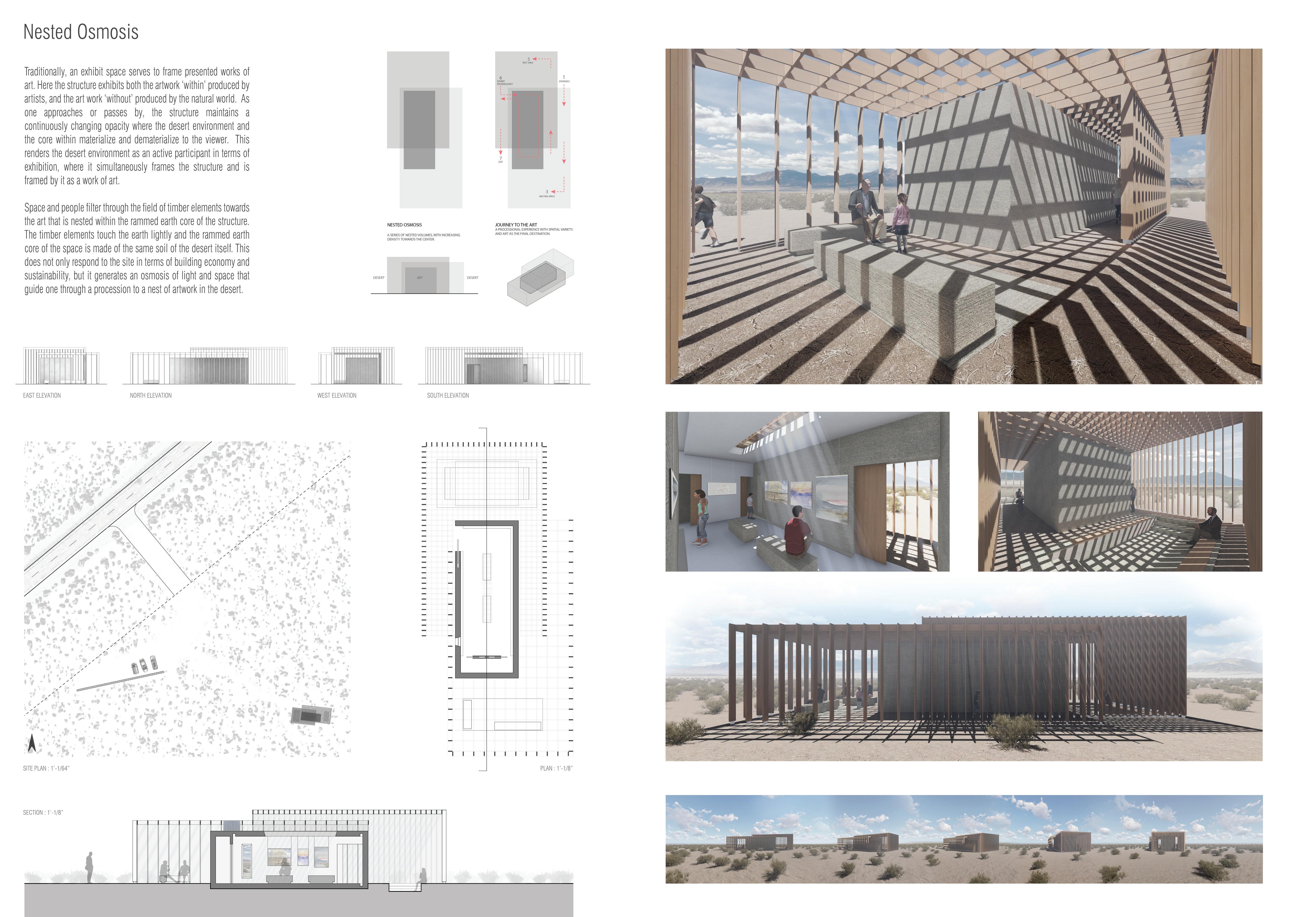
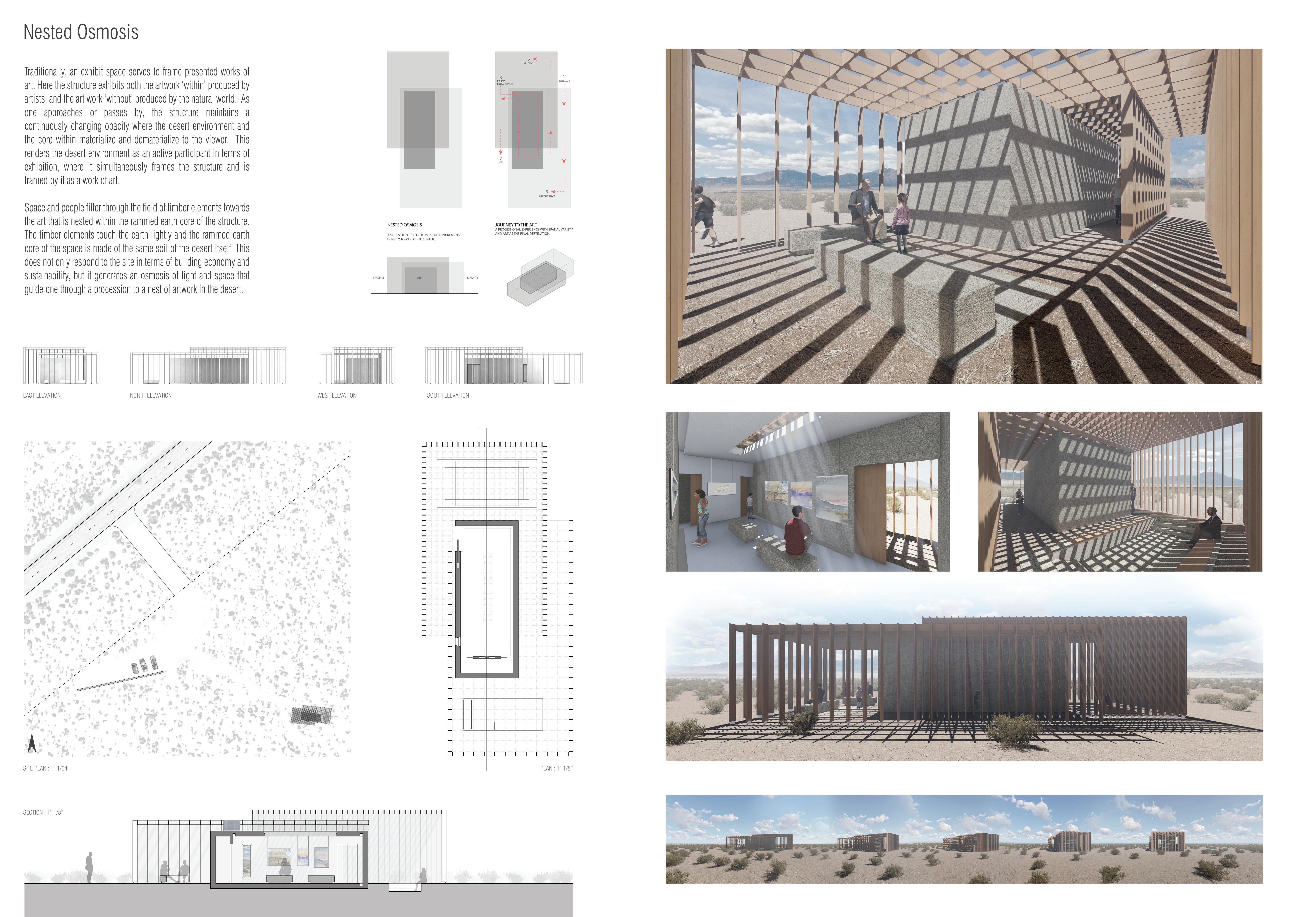
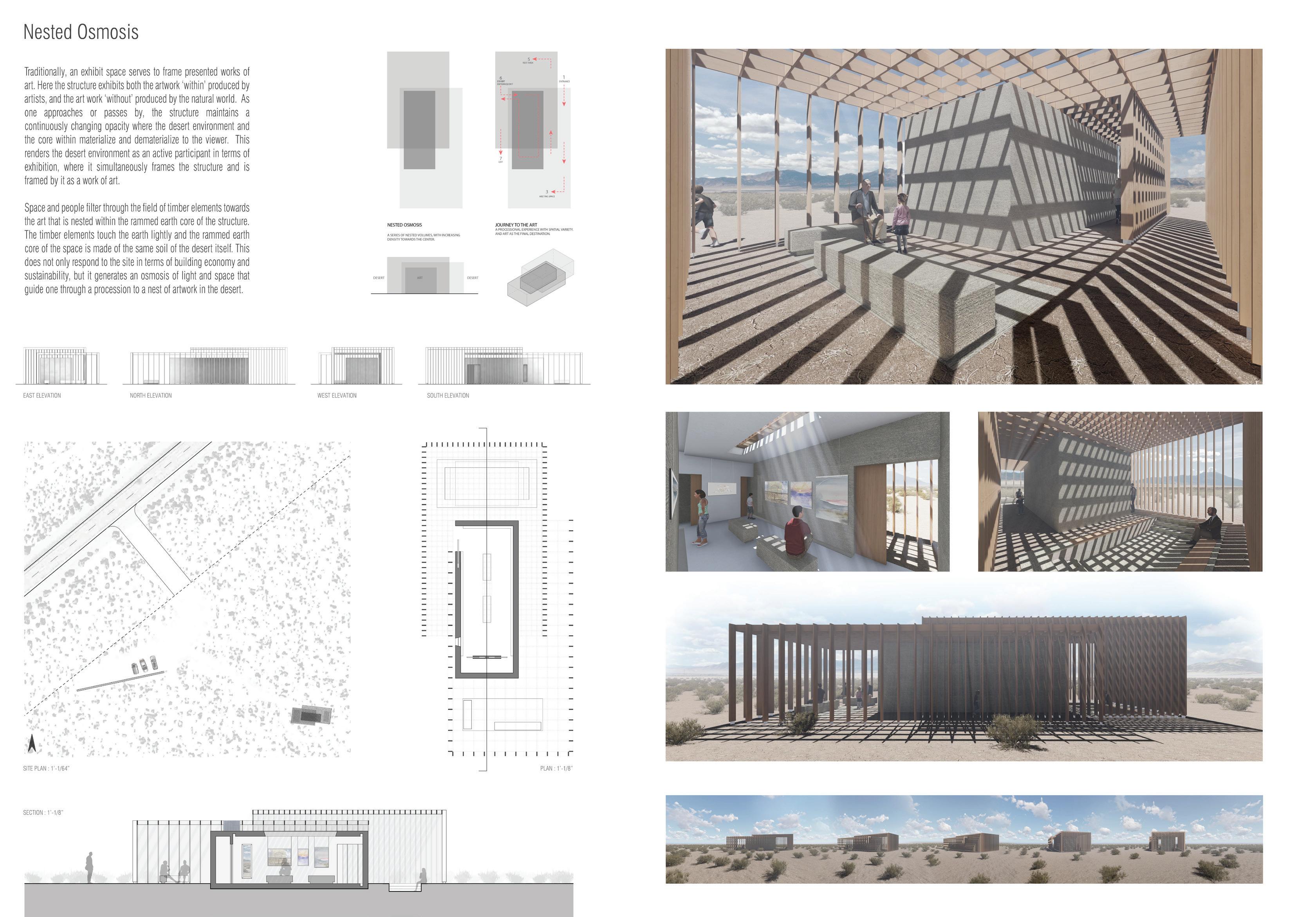
CHAPEL OF THE EARTH
Being a commuter school, City College generally lacks spaces of stasis and introspection. The built environment generally disengages students from any deeper forms of understanding. Students rush in and out, seemingly occupying the very surface of space and consciousness. As such, a spiritual space is in order to engage the spiritual sensibilities of the occupants of City College.
Here, a rammed earth structure is introduced within the yard of Randolph high school. Through a process of molding a perforated dome with the use of a sand mound, and excavating the bedrock beneath, students can then engage in a form of study that is deeper and more profound.
The space itself diagrams the human experience within the universal, the world of forms, and the particular, the natural world. It is in-between the articulated juxtaposition of platonic and natural geometry that space is woven for contemplation and meditation.
Site Plan
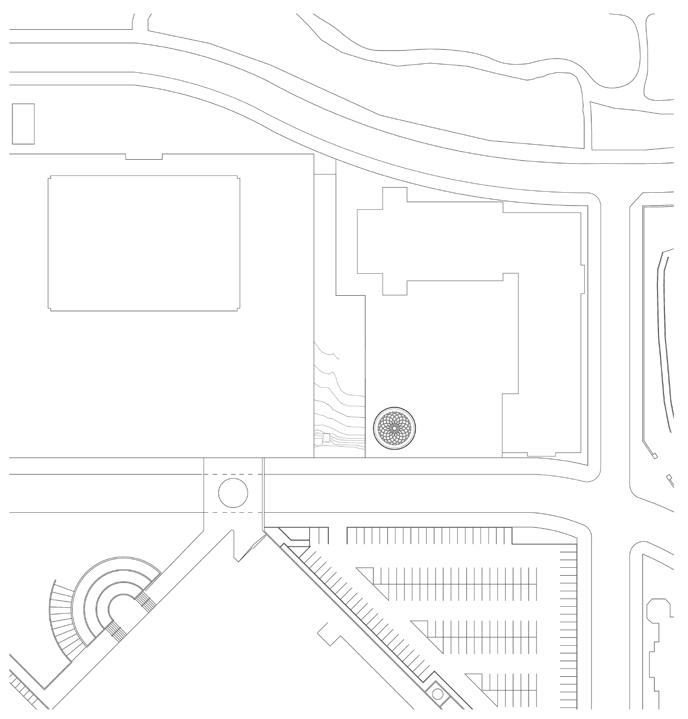
Ontological Plan
WORLD OF FORMS
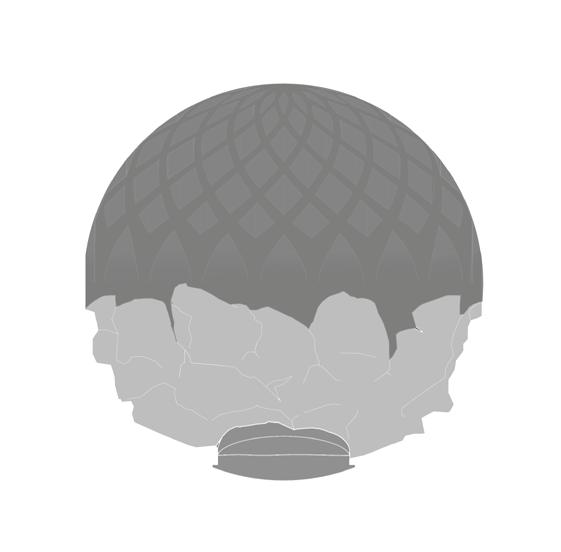
WORLD OF NATURE
HUMAN EXISTENCE
Molding Experiments



Chapel of Reconciliation Martin Rauch
Rammed Earth
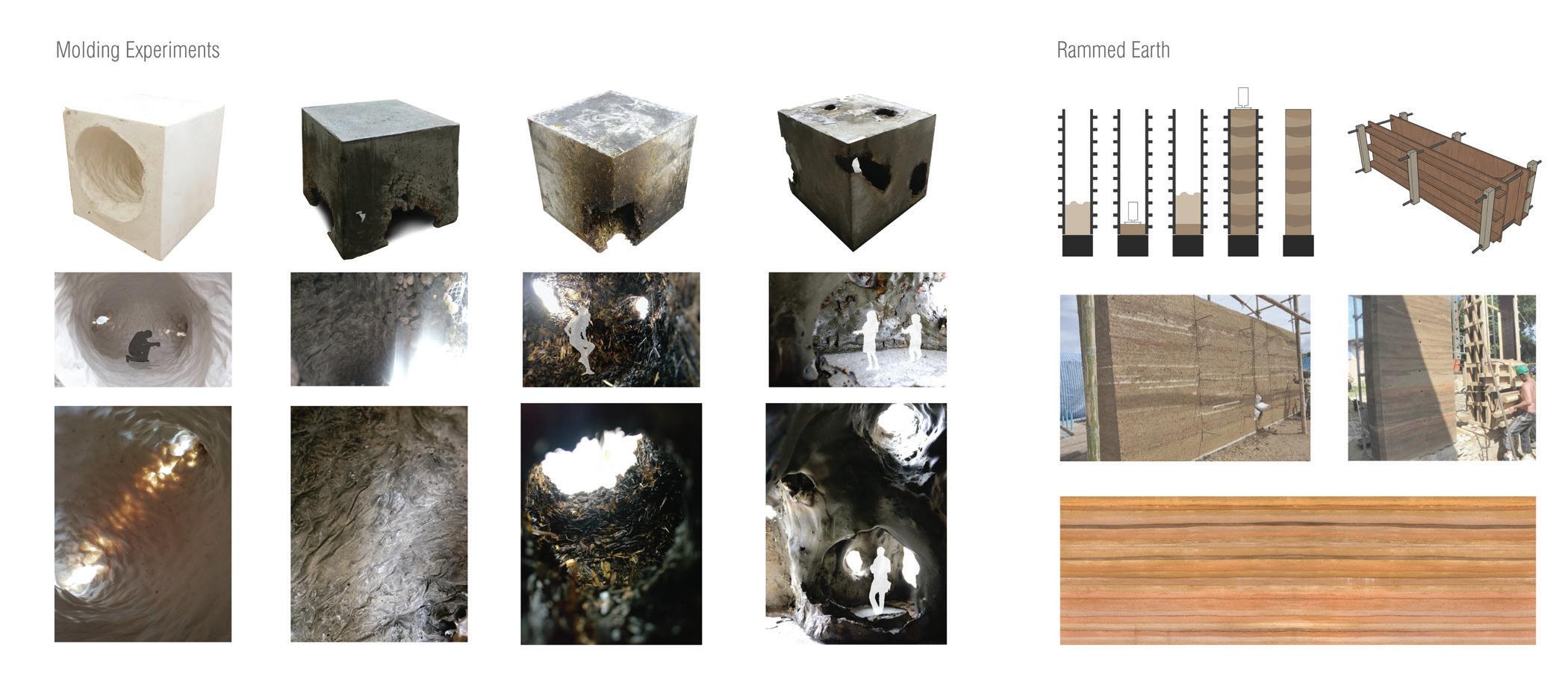

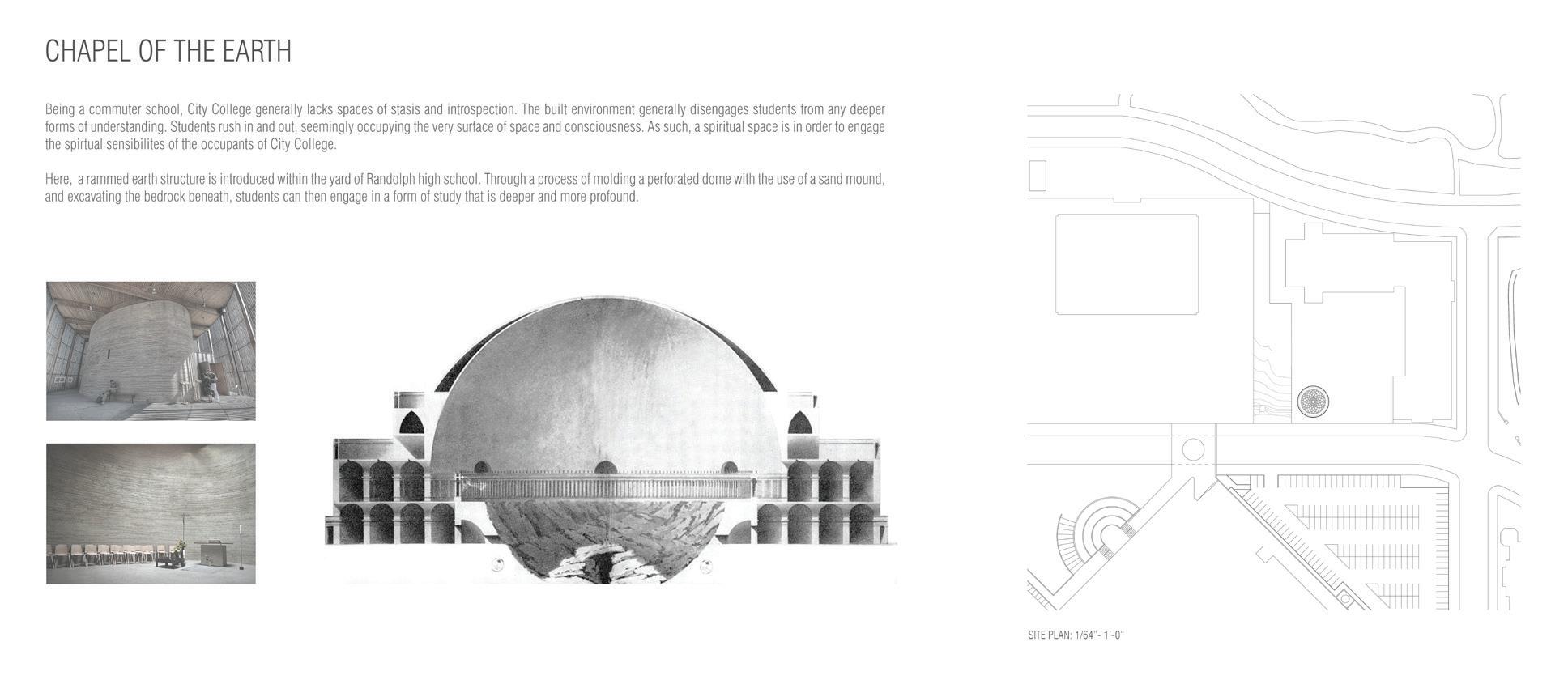
Cenotaph Etienne Louis Boulle
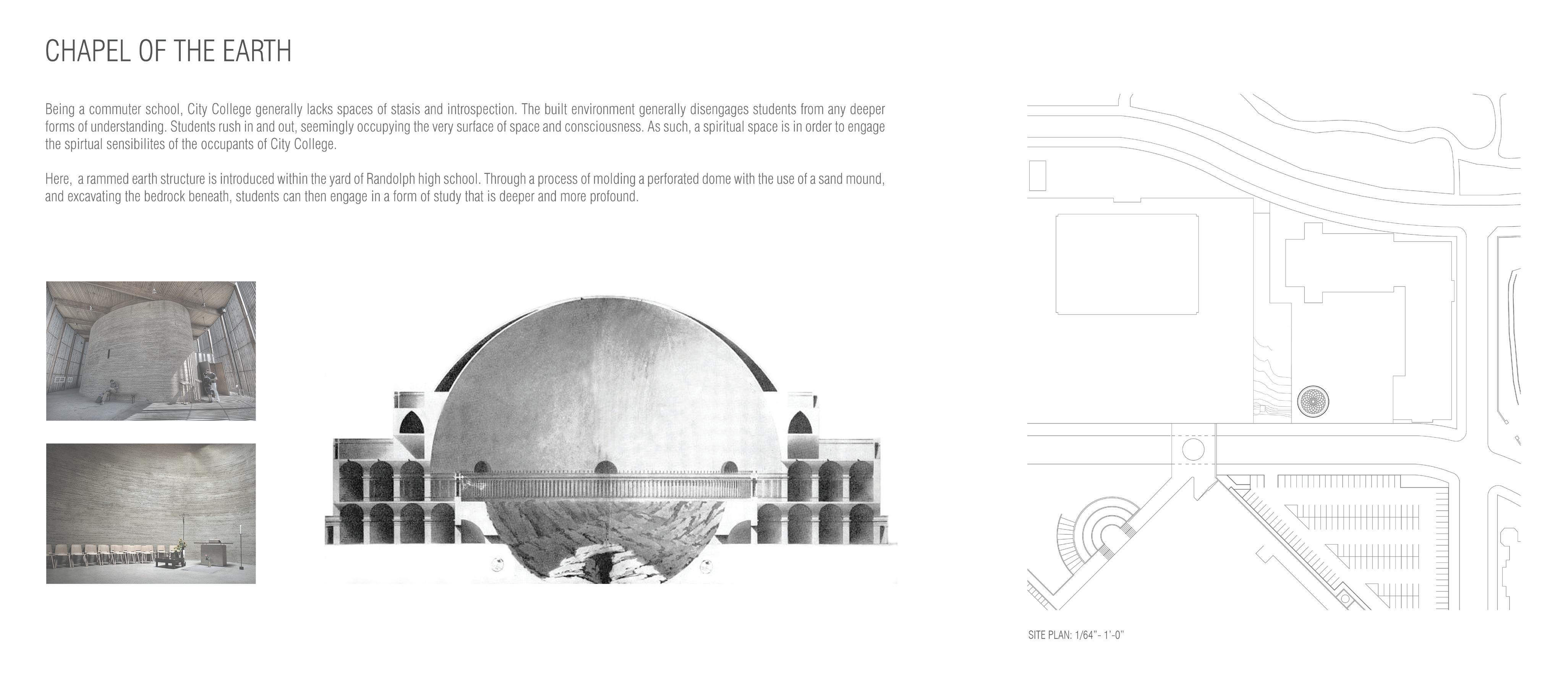





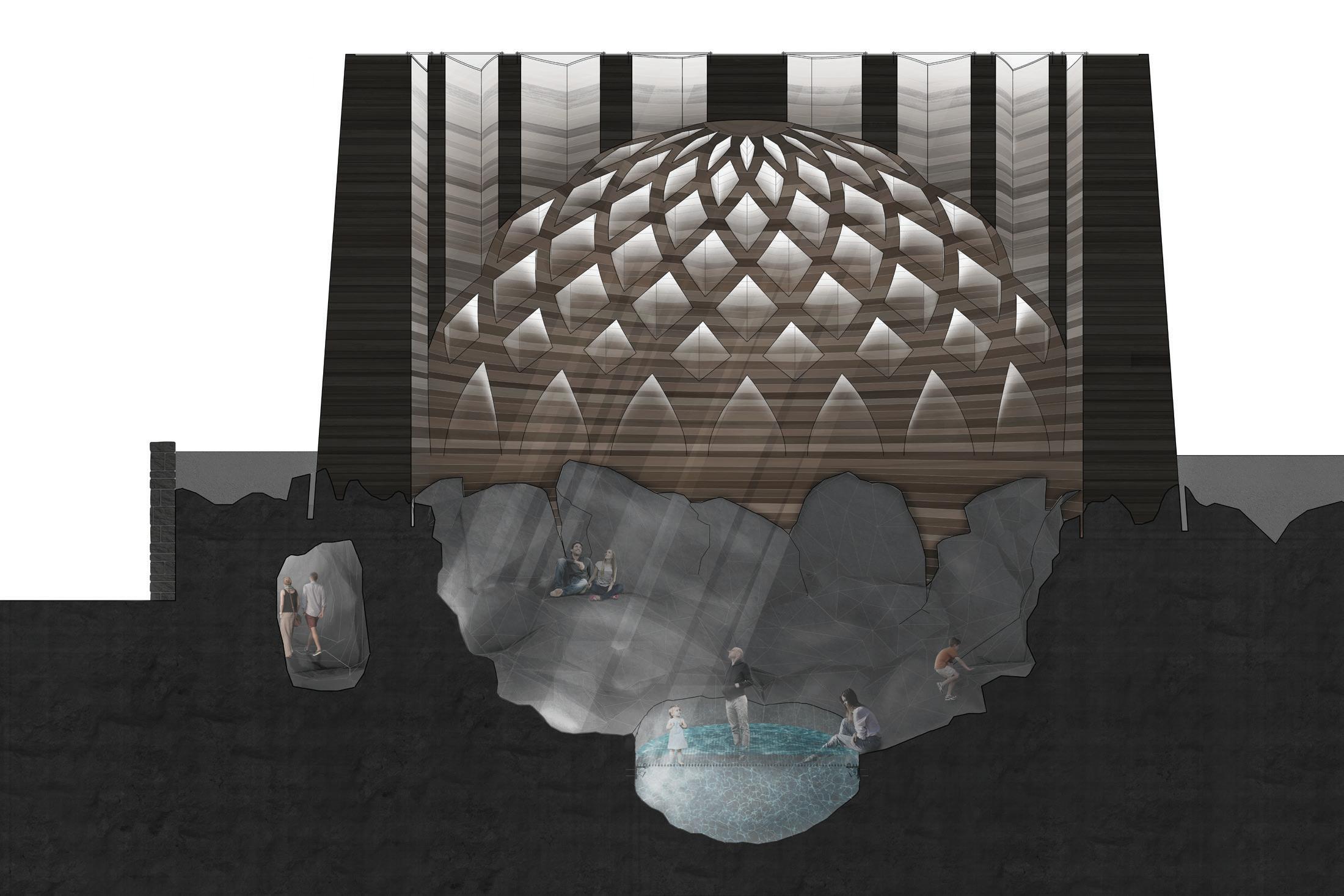

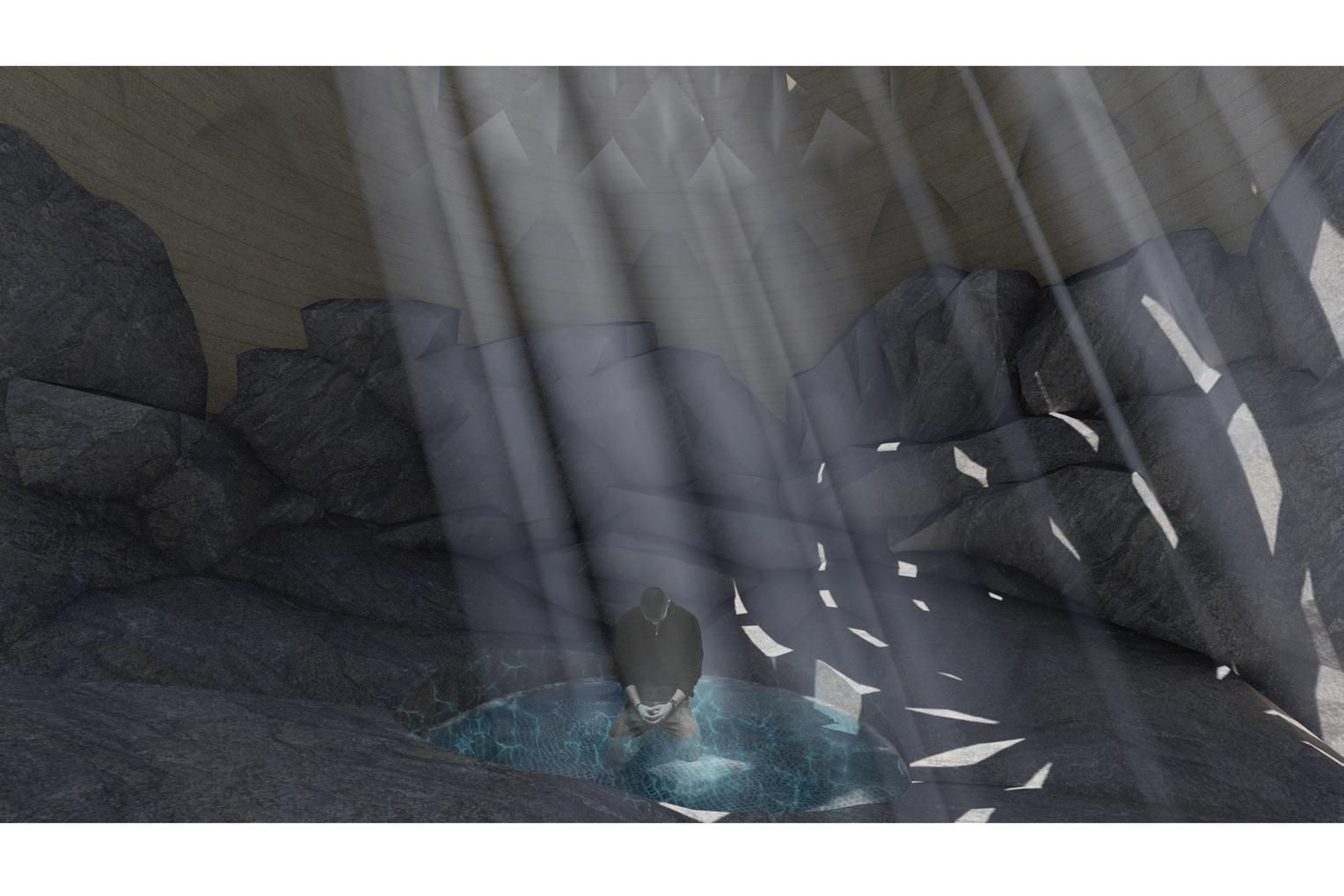
PROFESSIONAL WORK
This project entails the design of a shopping center on the outskirts of Cuenca, Ecuador. It sits on an approximately 3000 square meter site. It is situated along the highway with access from both directions of traffic.
Being one of several designs in an iterative process with the client, this scheme satisfies the client’s desire for an open habitable exterior space, or a ‘piazza’ that people can congregate in and occupy while shopping. This ‘piazza’ allows for new types of program that extend beyond the generic shopping experience. Cultural and communal activities can now manifest within a commercial space, reinforcing both the commercial and cultural viability of the project.
Balancing retail, open, and parking space was the generator of the plan. The intention was to create an iconic signifier to attract the passerby and create a landmark in the landscape as seen from the highway and local area.
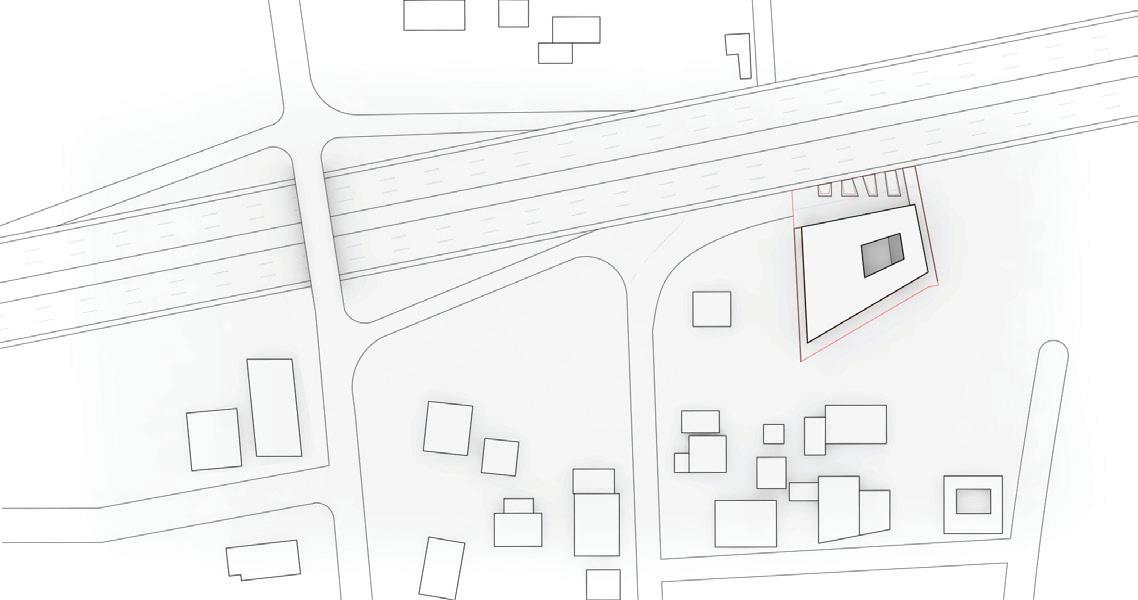
By elevating and submerging much of the retail space, a multi level exterior space was revealed, opening the plan to the surrounding site and contextualizing the structure within the environment it occupies.
It is through this process that longterm economic sustainability was to be achieved without sacrificing the unique qualities of the site and larger context.
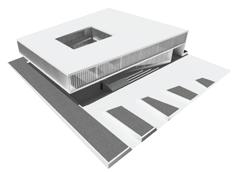
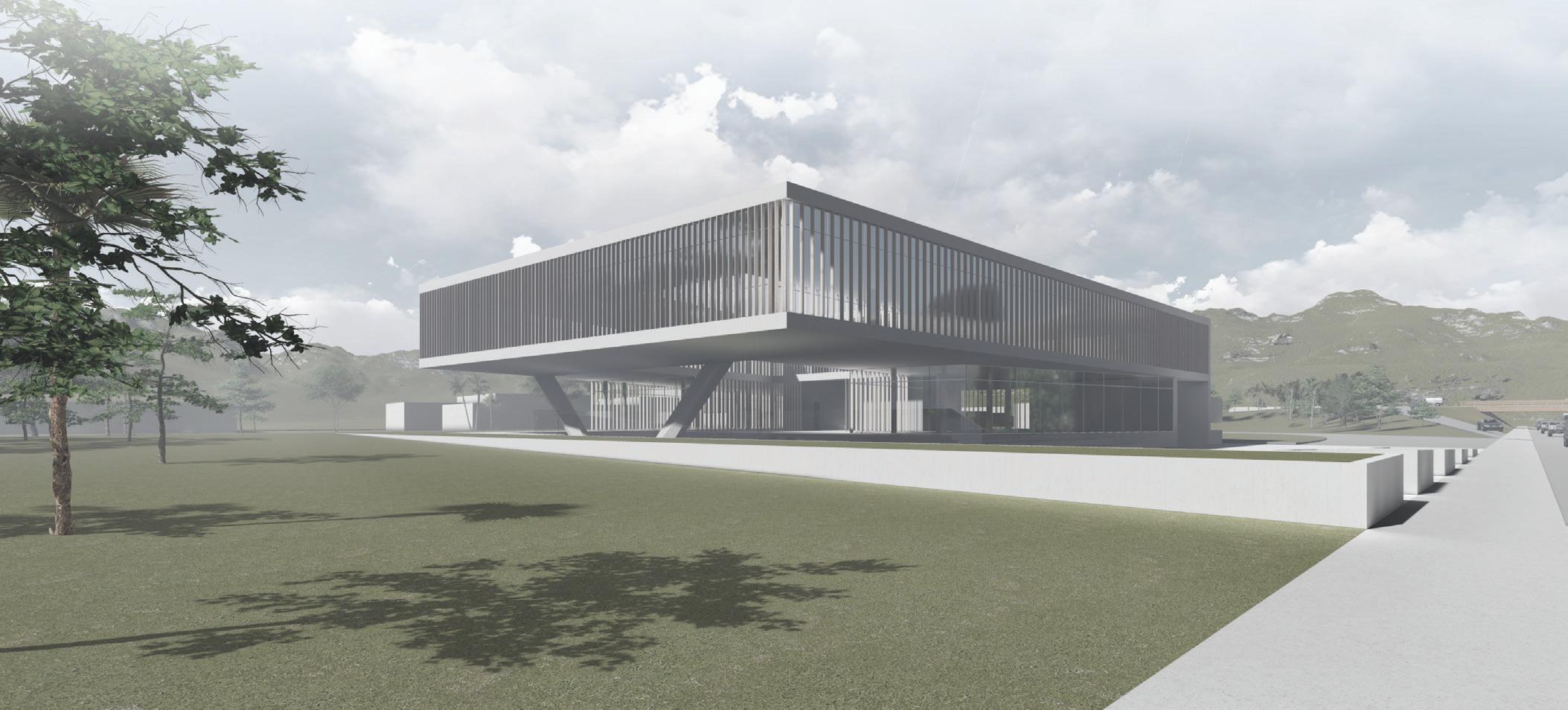
GARAGE LEVEL
RENTABLE AREA : 653 sq m PARKING SPOTS: 38 AREA EXCAVATED: 2780 sq m
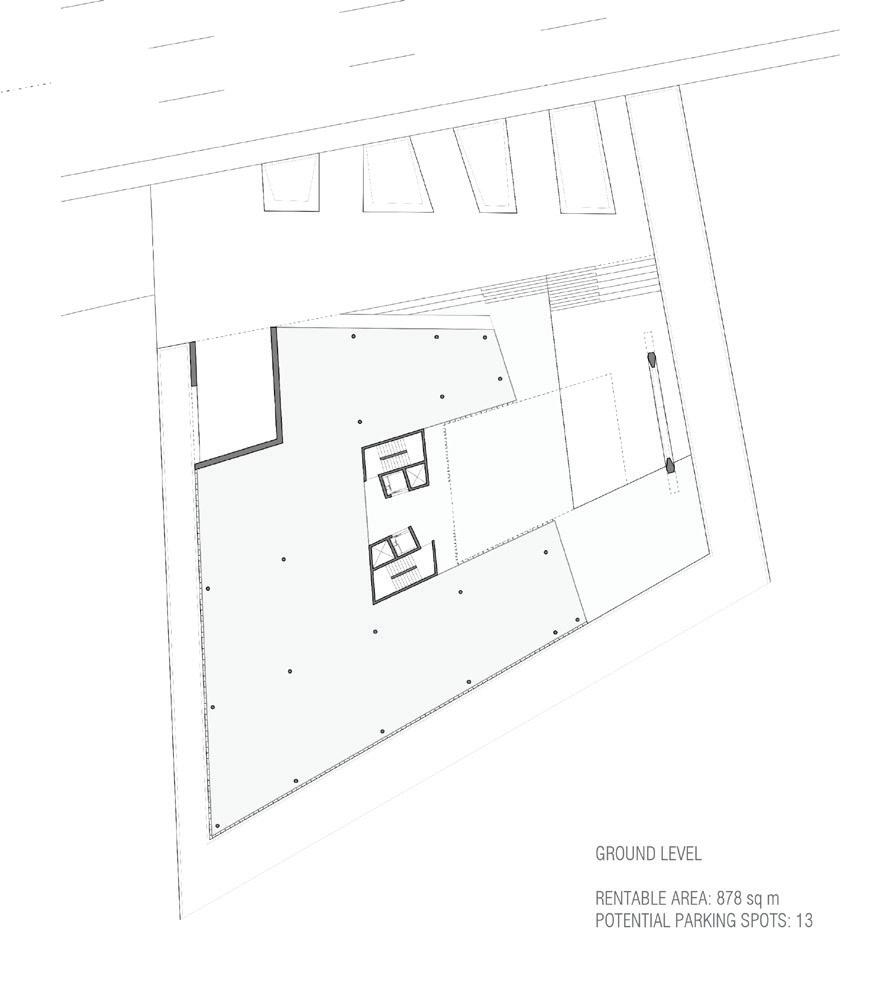
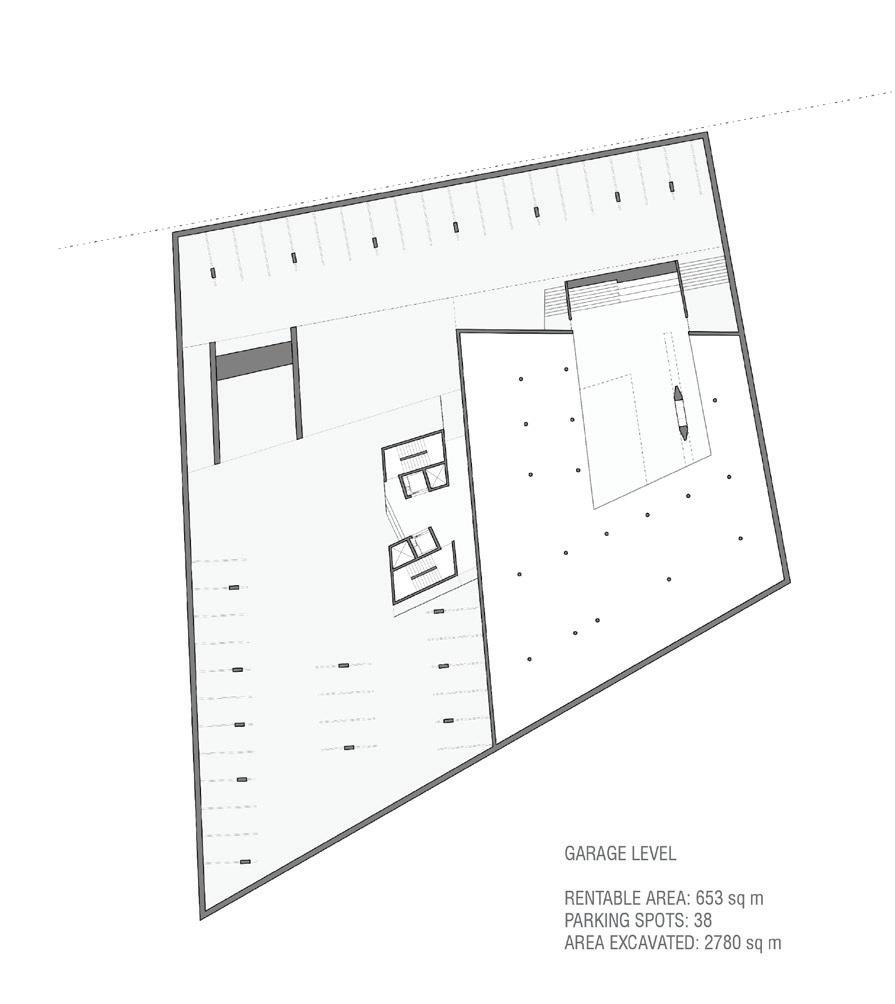
GROUND LEVEL
RENTABLE AREA : 878 sq m POTENTIAL PARKING SPOTS: 13
SECOND LEVEL
RENTABLE AREA : 1,285 sq m
ROOF PLAN
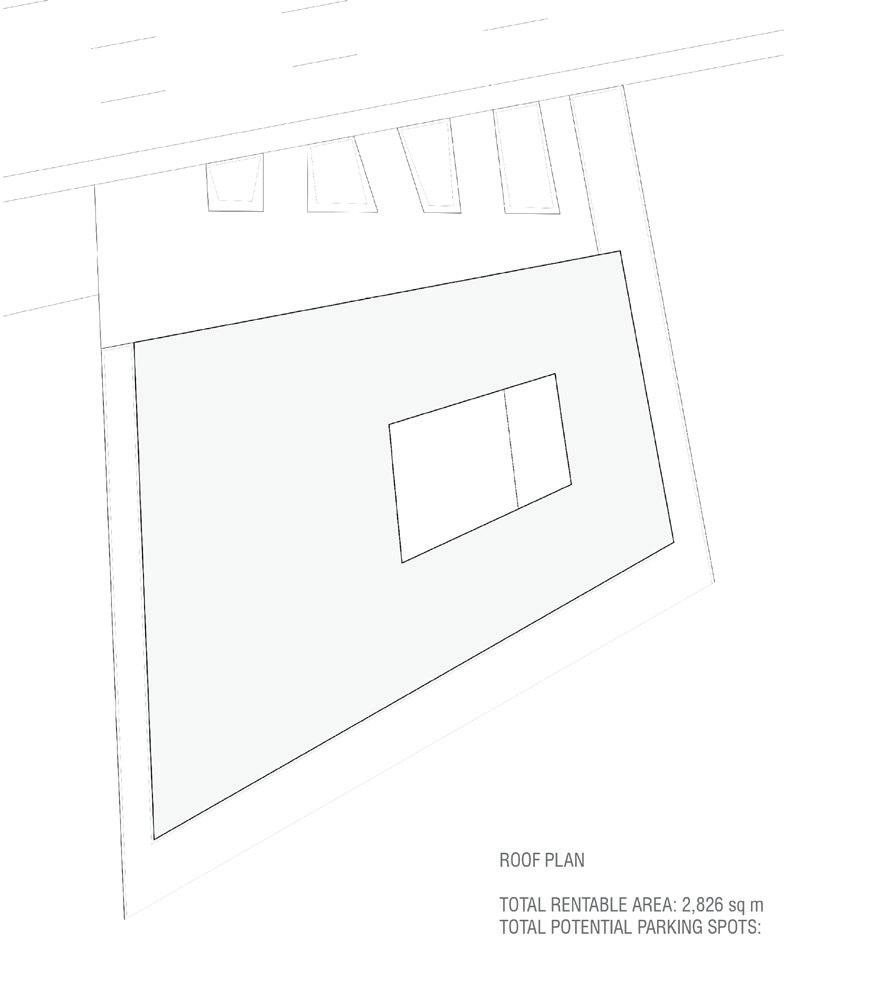
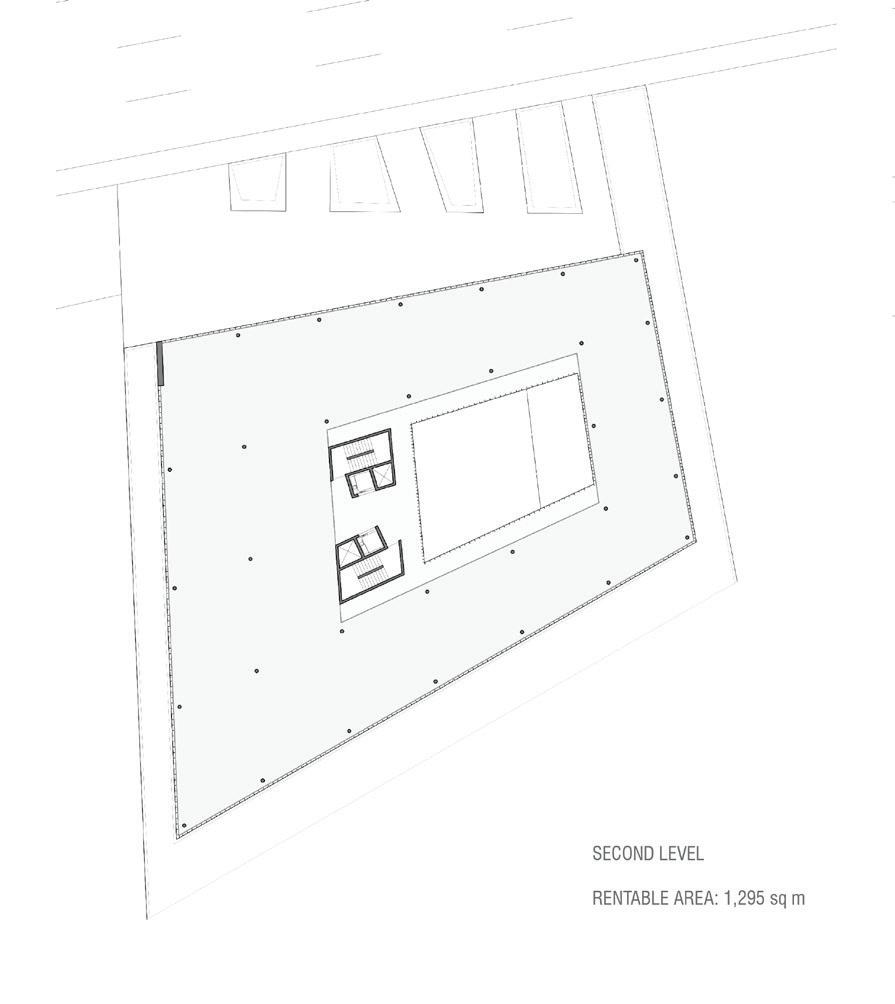
TOTAL RENTABLE AREA : 2,826 sq m
POTENTIAL PARKING SPOTS: 51
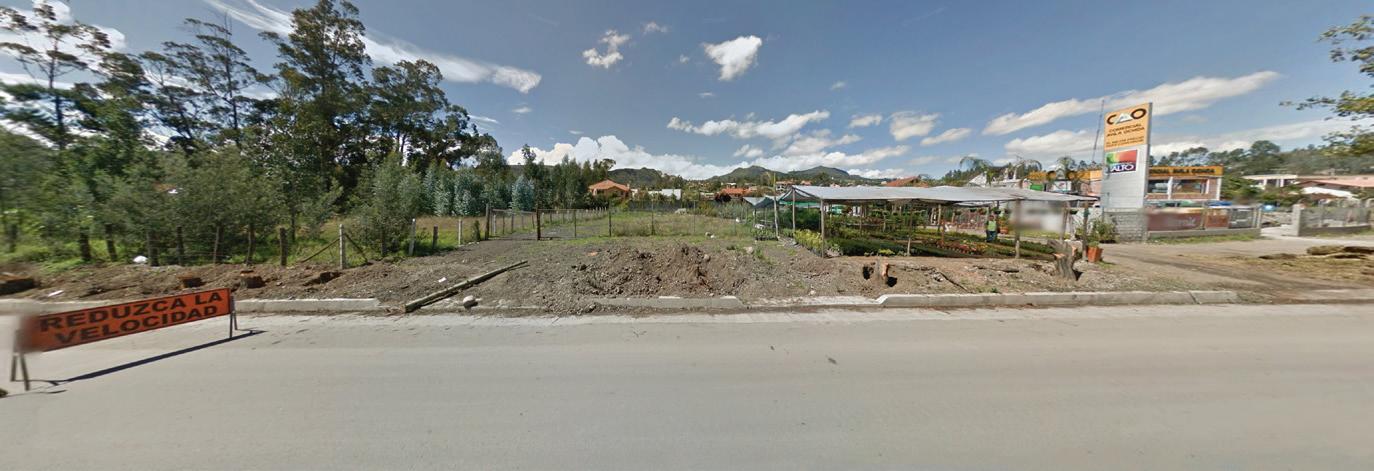
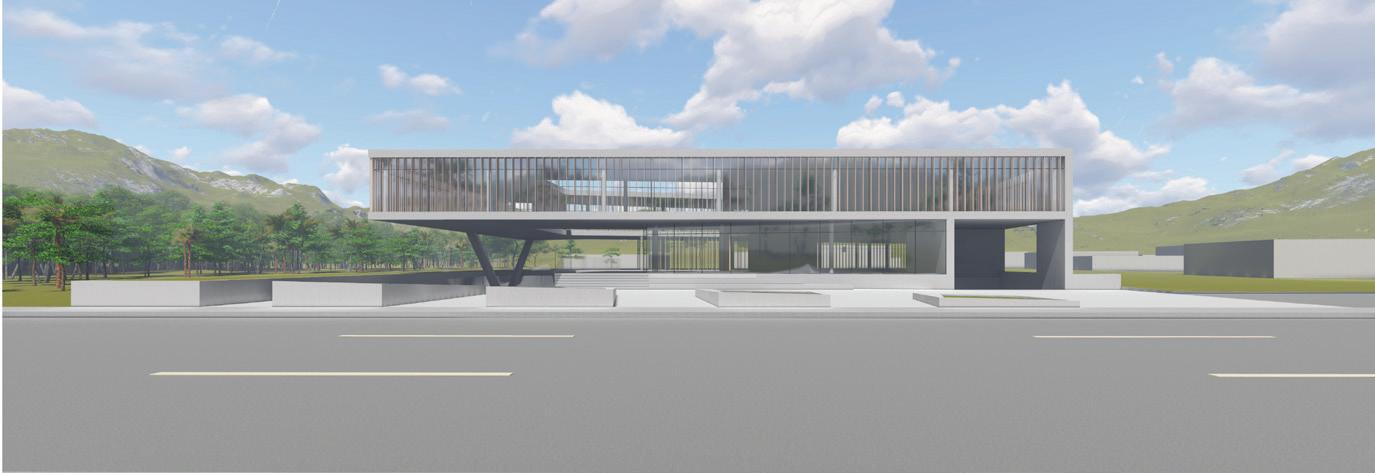
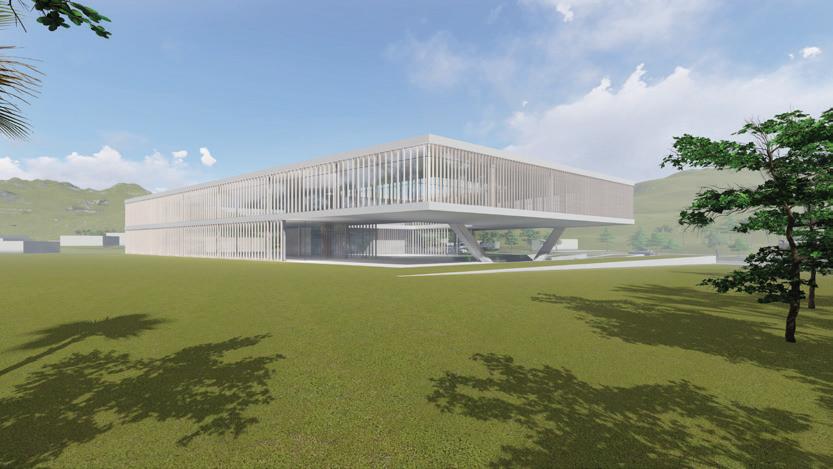
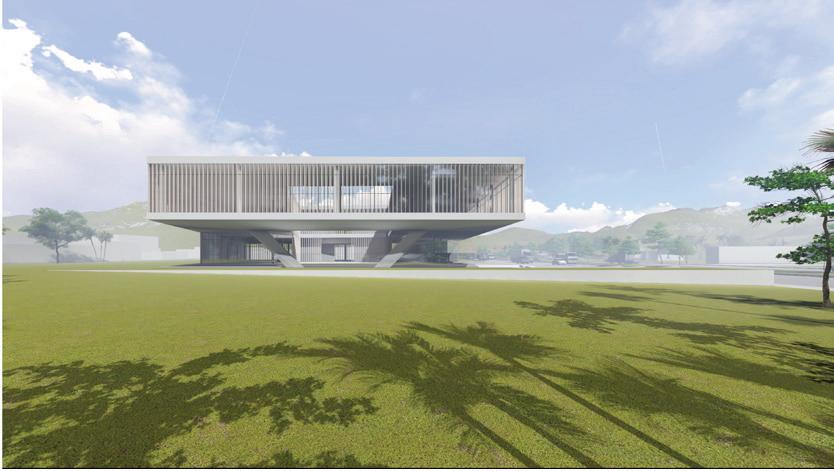
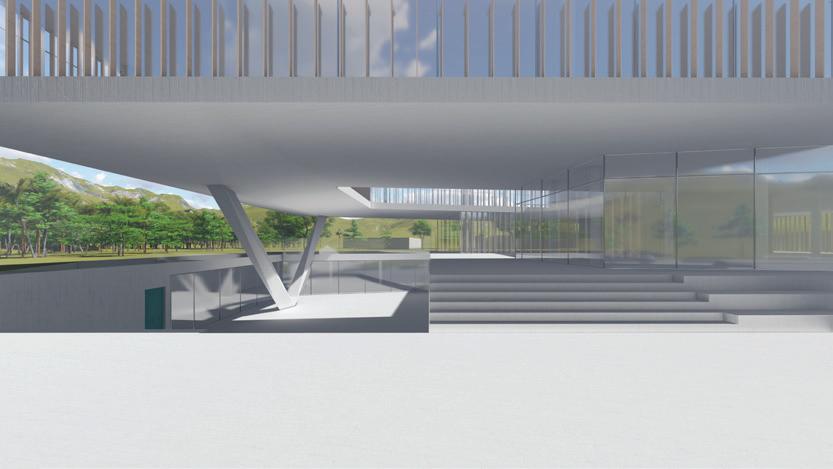
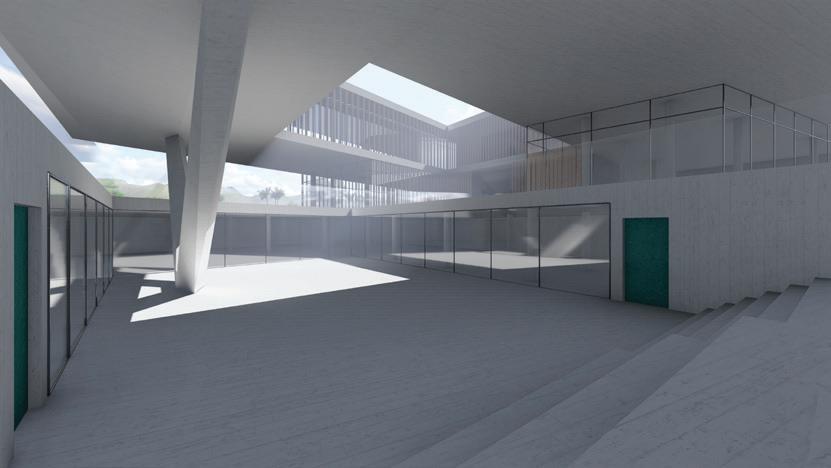
Firm: Archipelagos
Selected for Room 18 Publication
The objective of this competition was to design a hotel room for the contemporary traveler in Greece.
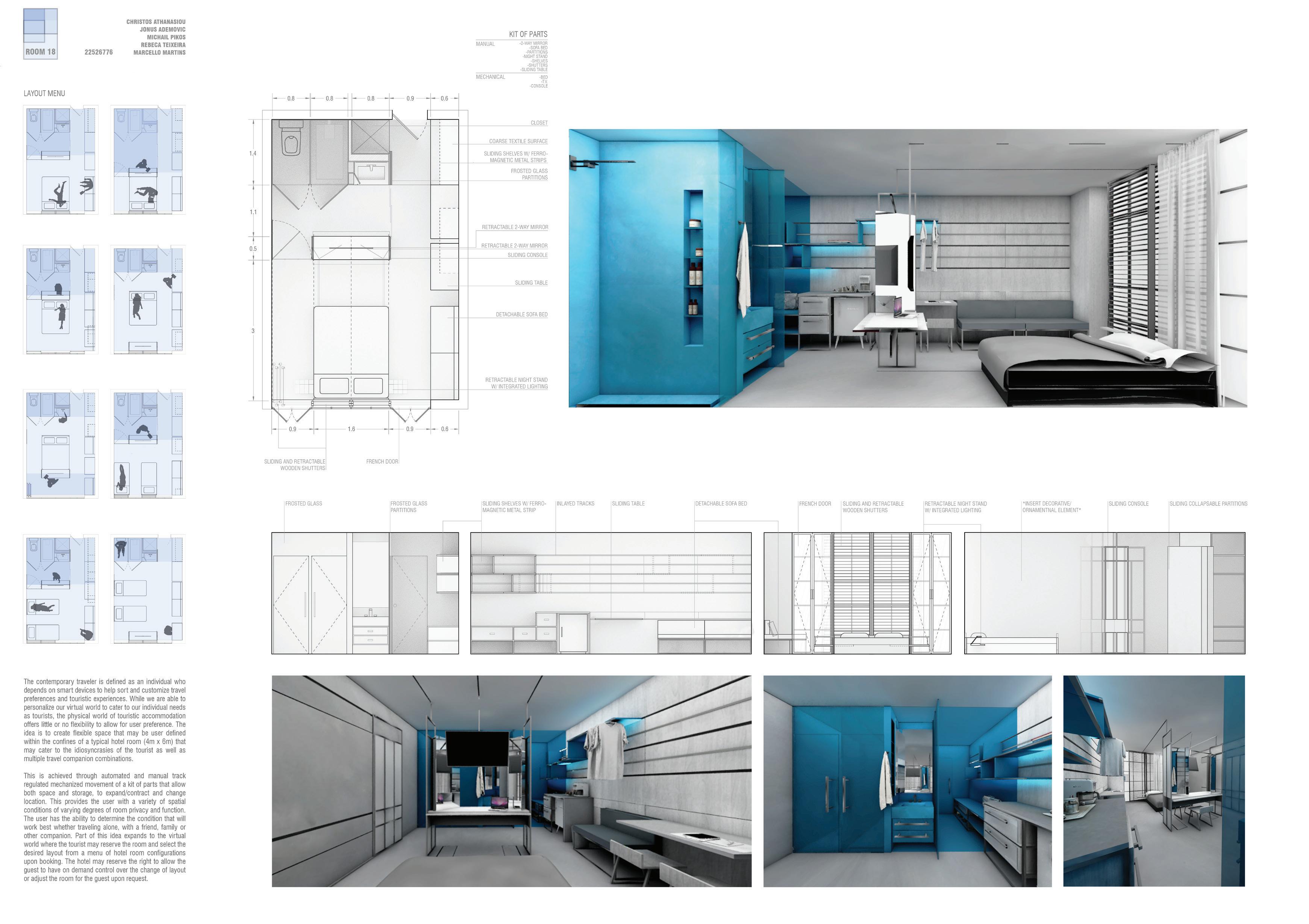
The contemporary traveler is defined as an individual who depends on smart devices to help sort and customize travel preferences and touristic experiences. While we are able to personalize our virtual world to cater to our individual needs as tourists, the physical world of touristic accommodation offers little or no flexibility to allow for user preference. The idea is to create flexible space that may be user defined within the confines of a typical hotel room (4m x 6m) that may cater to the idiosyncrasies of the tourist as well as multiple travel companion combinations.
This is achieved through automated and manual track regulated mechanized movement of a kit of parts that allow both space and storage, to expand/ contract and change location. This provides the user with a variety of spatial conditions of varying degrees of room privacy and function. The user has the ability to determine the condition that will work best whether traveling alone, with a friend, family or other companion. Part of this idea expands to the virtual world where the tourist may reserve the room and select the desired layout from a menu of hotel room configurations upon booking. The hotel may reserve the right to allow the guest to have on demand control over the change of layout or adjust the room for the guest upon request.
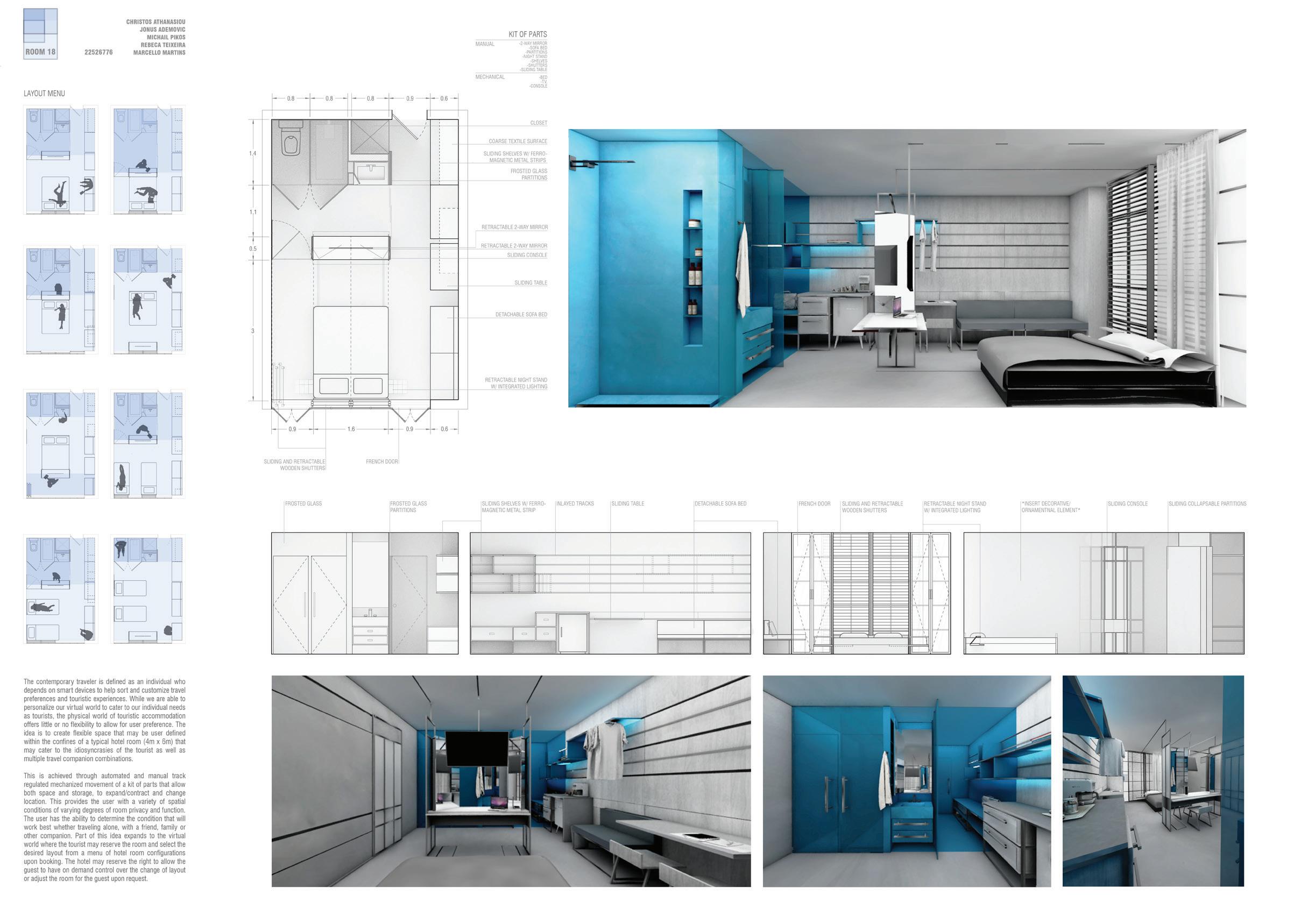
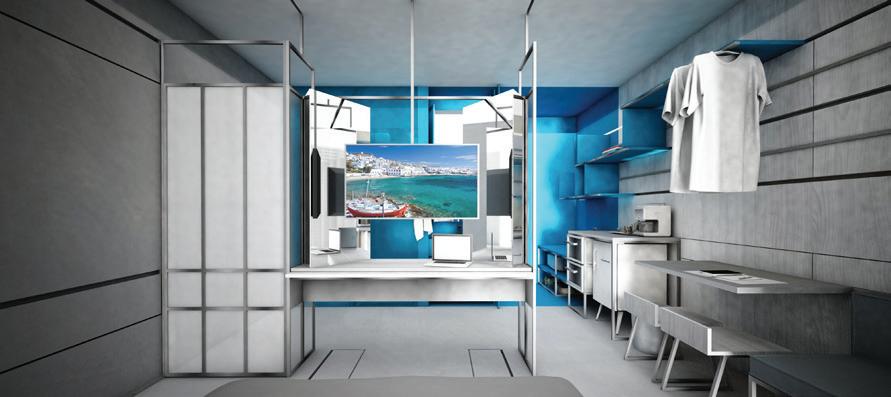
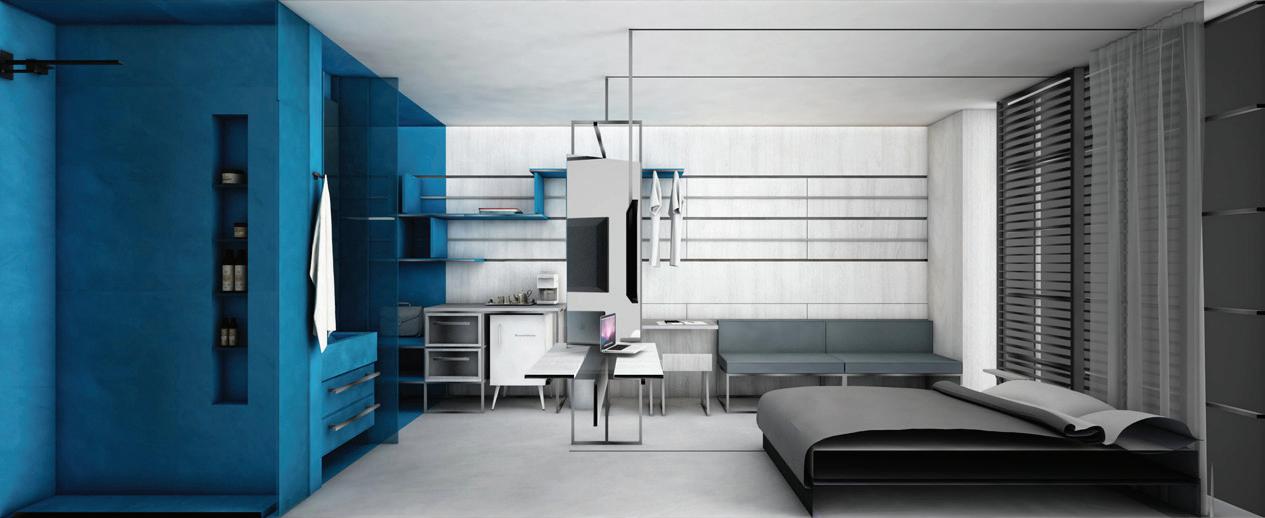
SCHOOL EXTENSION
Best 3rd Year Student Award
Partner: Jack Wong
Philip Randolph High school is situated in the City College campus in New York City. The high school suffers from poor graduation and postgraduation statistics for its students. Students frequently cut class and can be seen wandering the streets around campus during the day. Thus there is a need for improvement within the school’s academic culture. Students generally seem to be unconvinced by the educational system that they are required to attend. Ironically the bureaucratic nature of the public school system further alienates the students from their education, as they are compartmentalized in classrooms they see as cells and subsequently seek to avoid or disregard the system they are placed in. The objective of this project is to provide an extension to the existing school within the elevated parking lot of the school with an emphasis on prefab construction. It consists of new classrooms, exhibition space, indoor and outdoor resting and eating areas.
A school inherently denotes a place of learning and interaction. Given the notion of prefab construction, the structural system of the building is expressed through a modular metric, while naturalistic elements are woven into the site to provide for phenomenological and experiential continuity. These two systems, the articulated grid and the curvilinear vector, clash to provide for a healthy academic space for students.
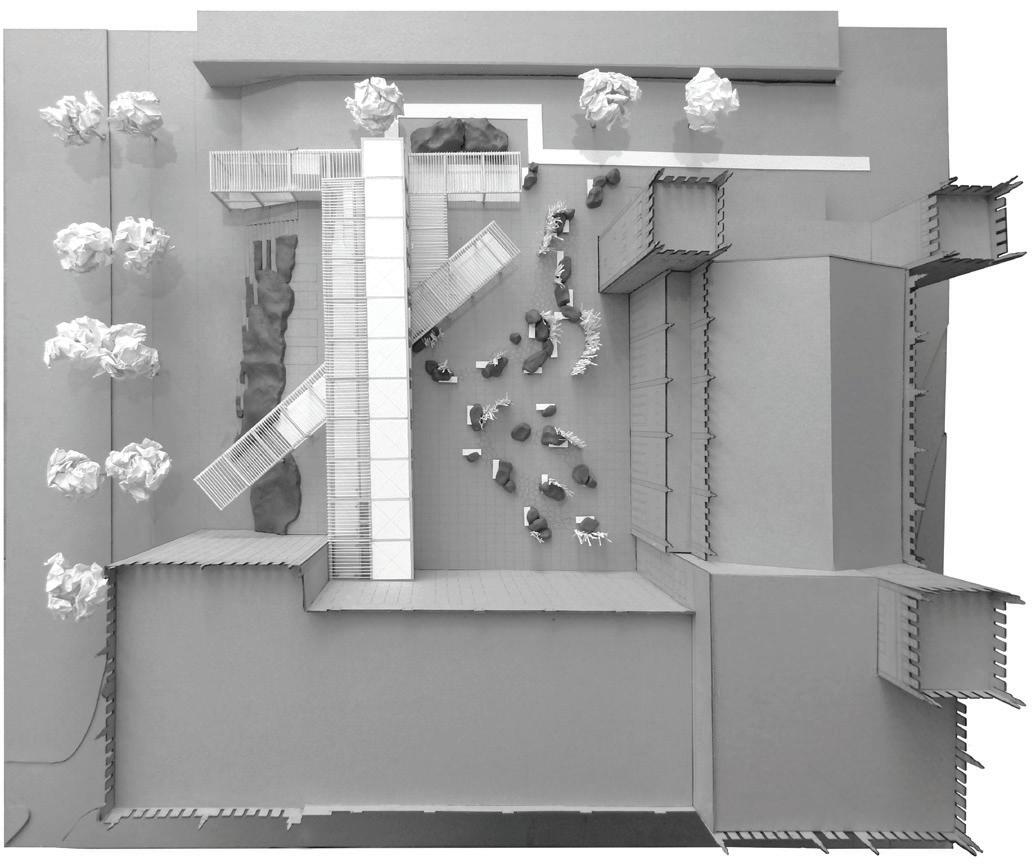

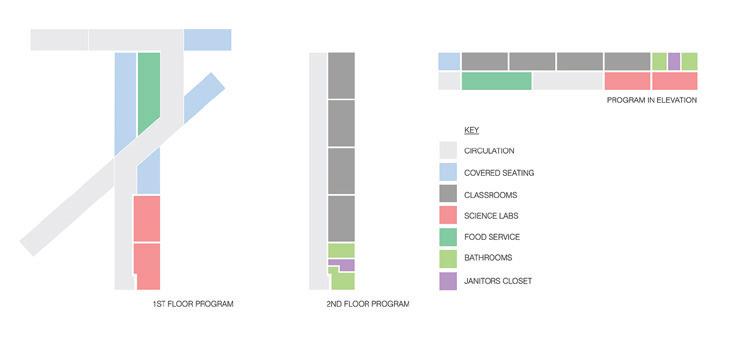
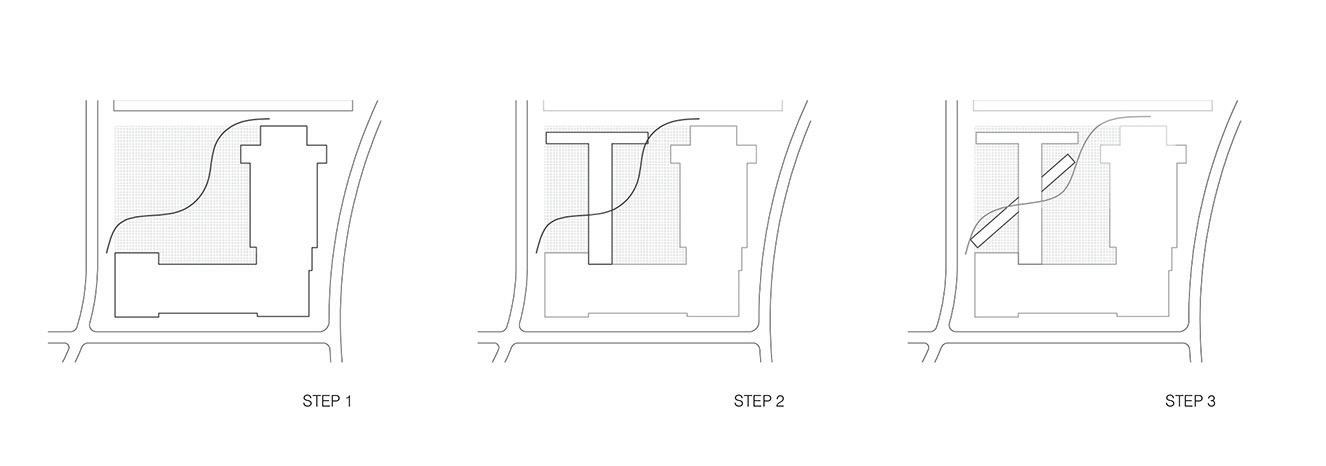
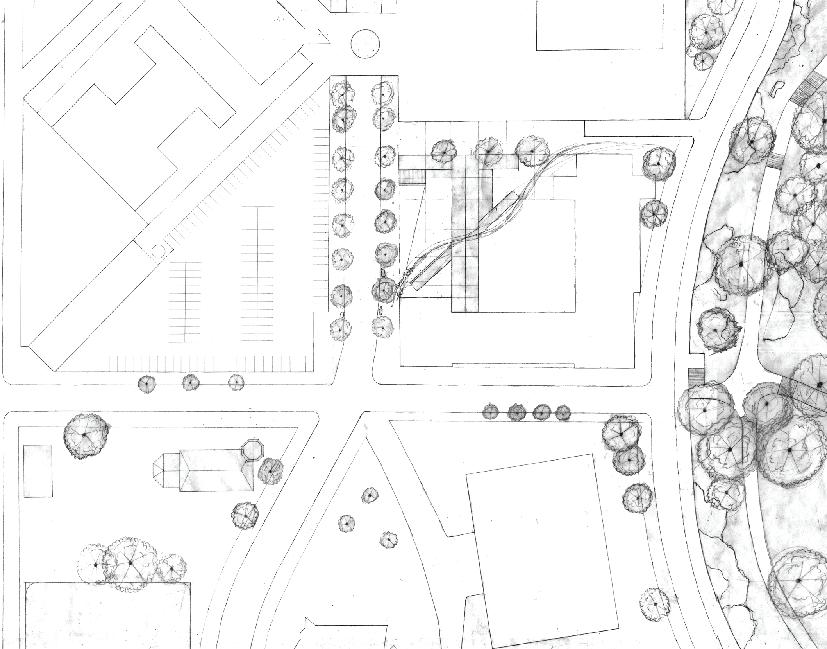
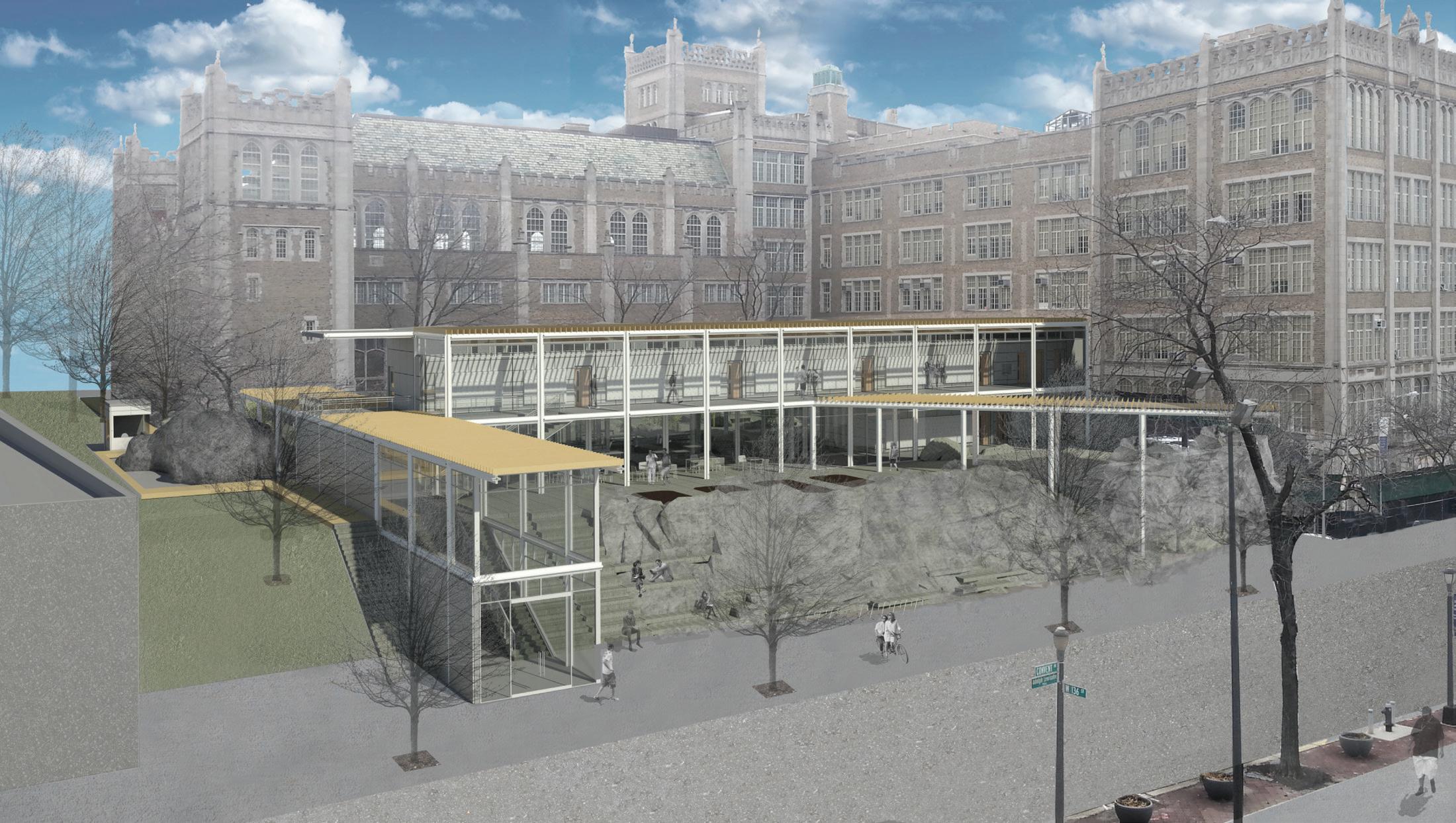
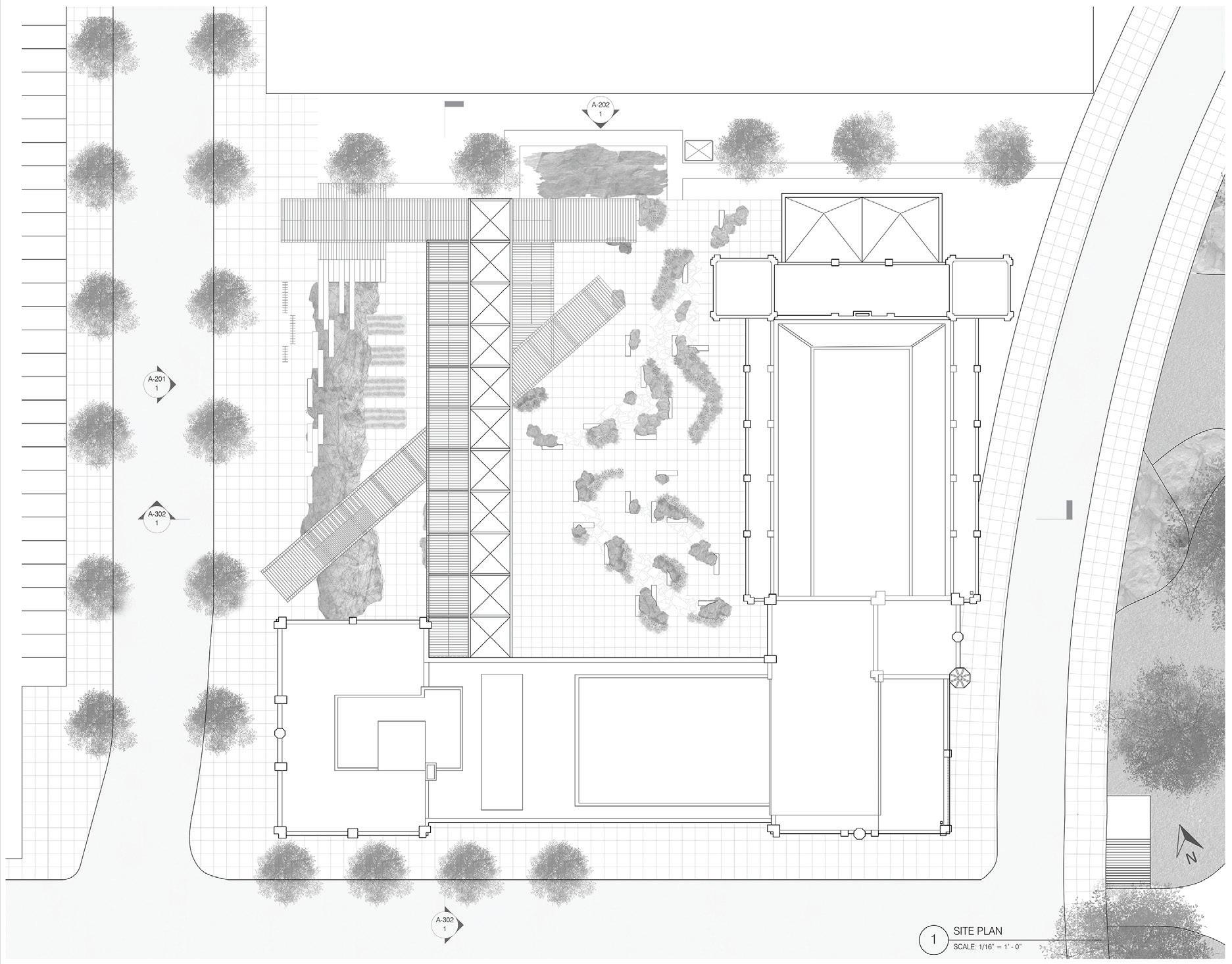

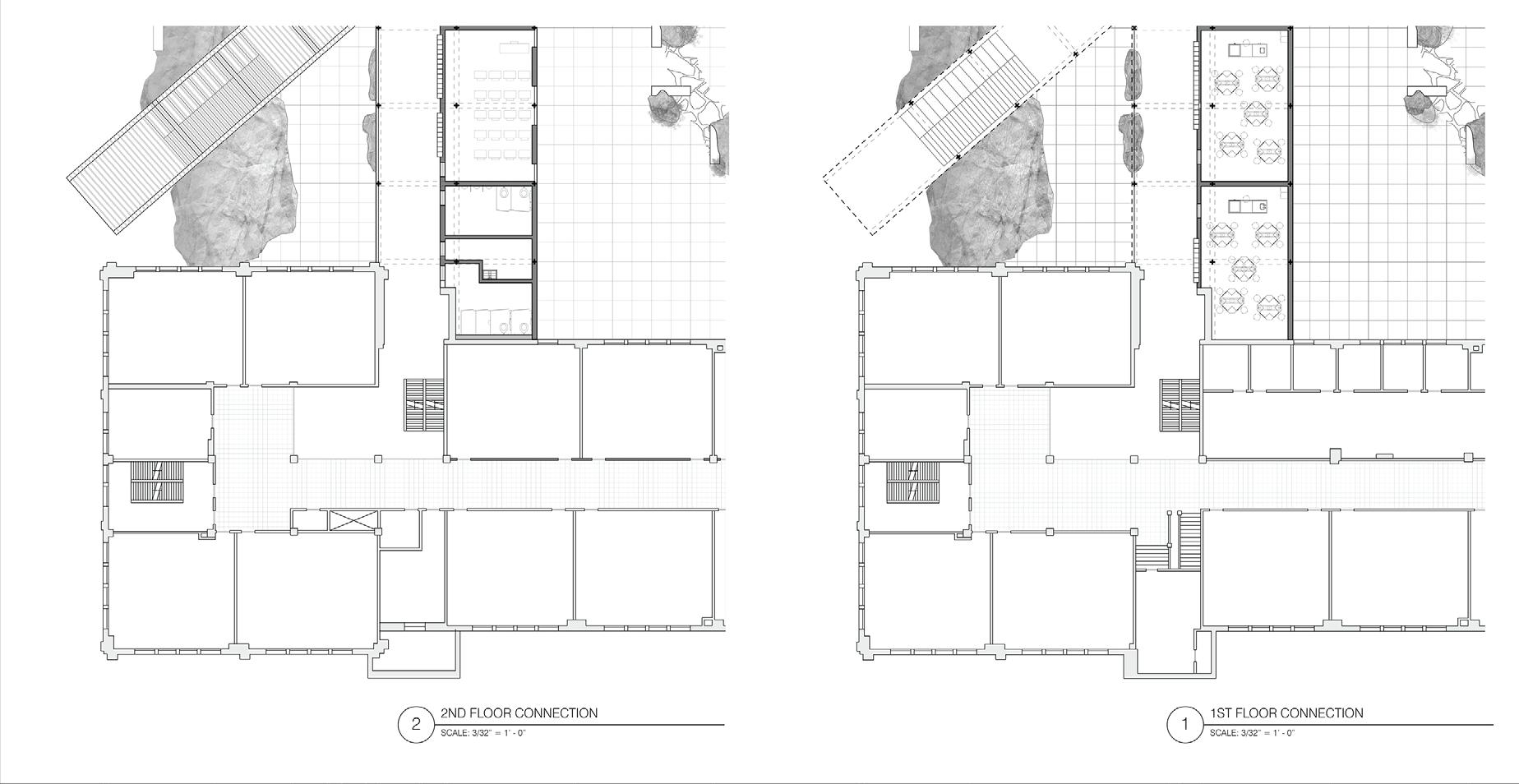
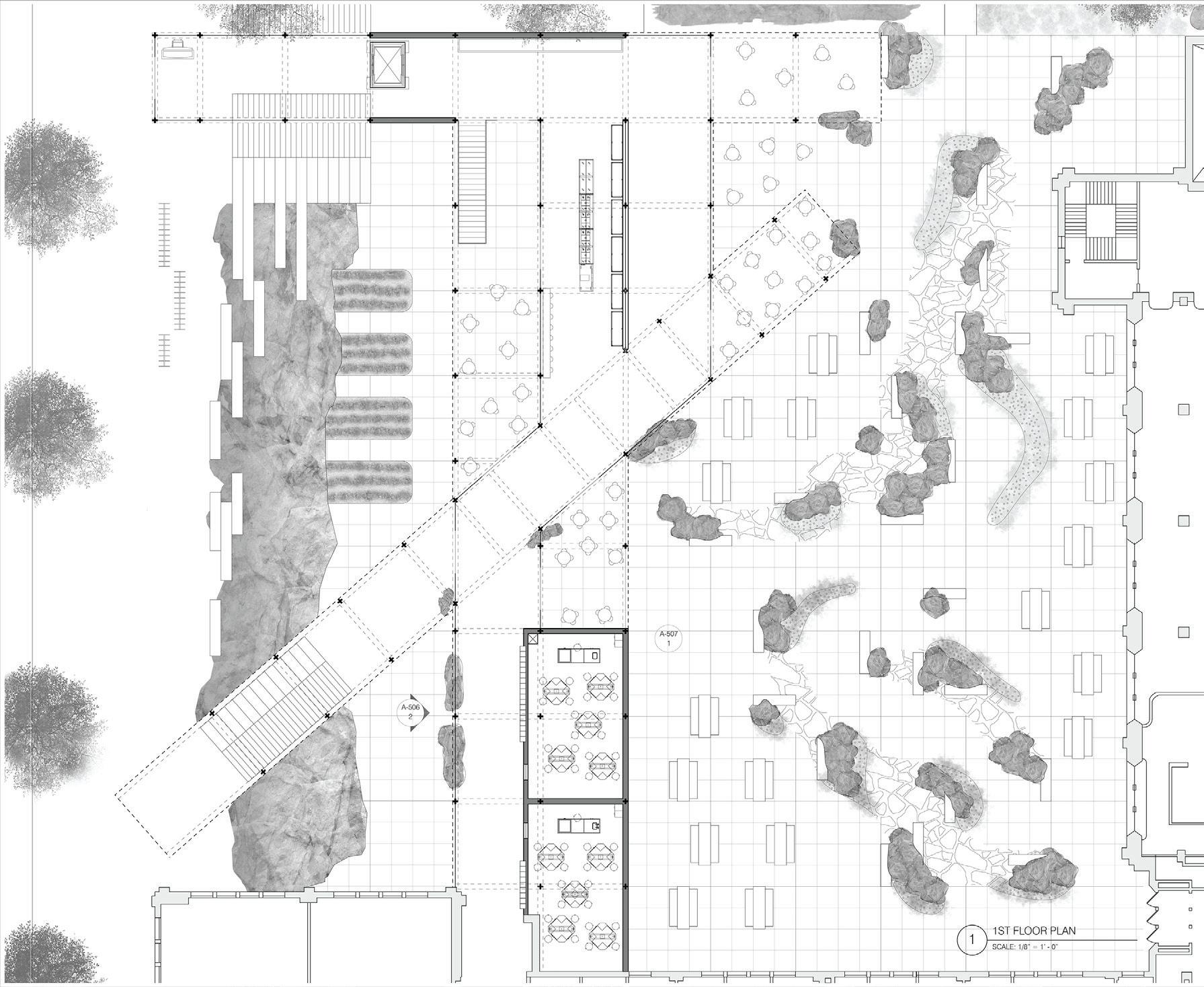
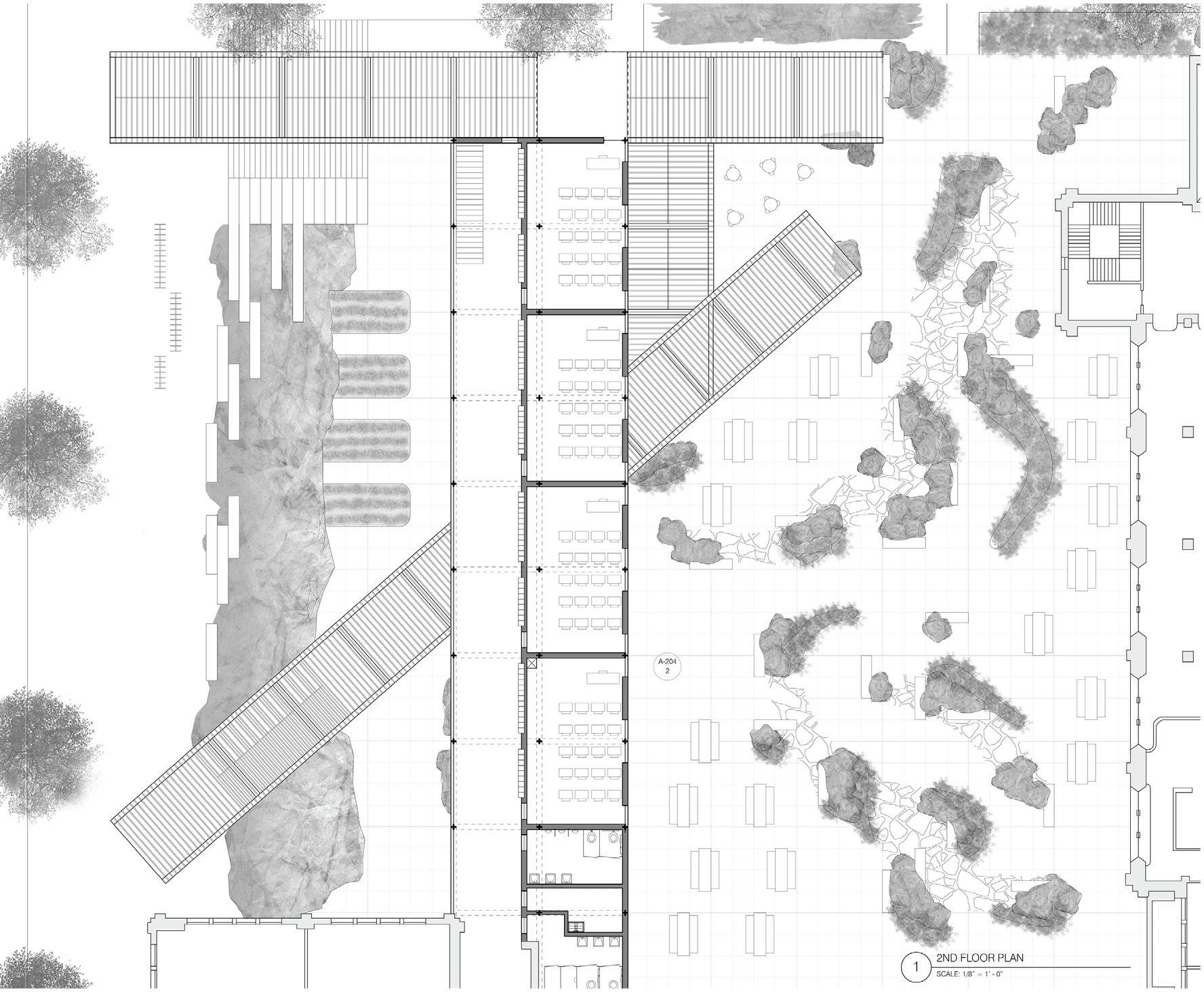
M540, MANHATTAN A. PHILIP RANDOLPH
WEST
MANHATTAN,
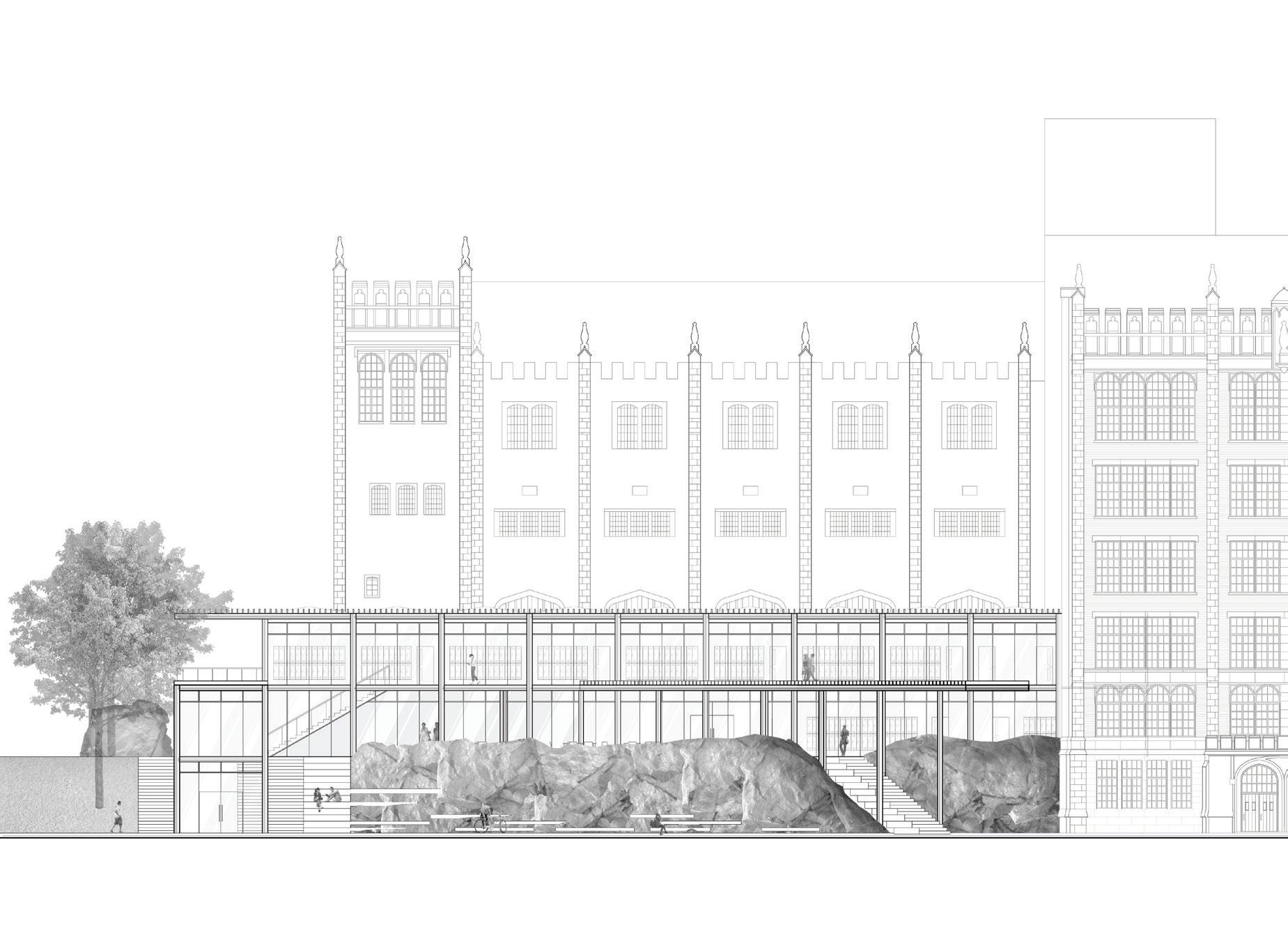
M540, MANHATTAN A. PHILIP
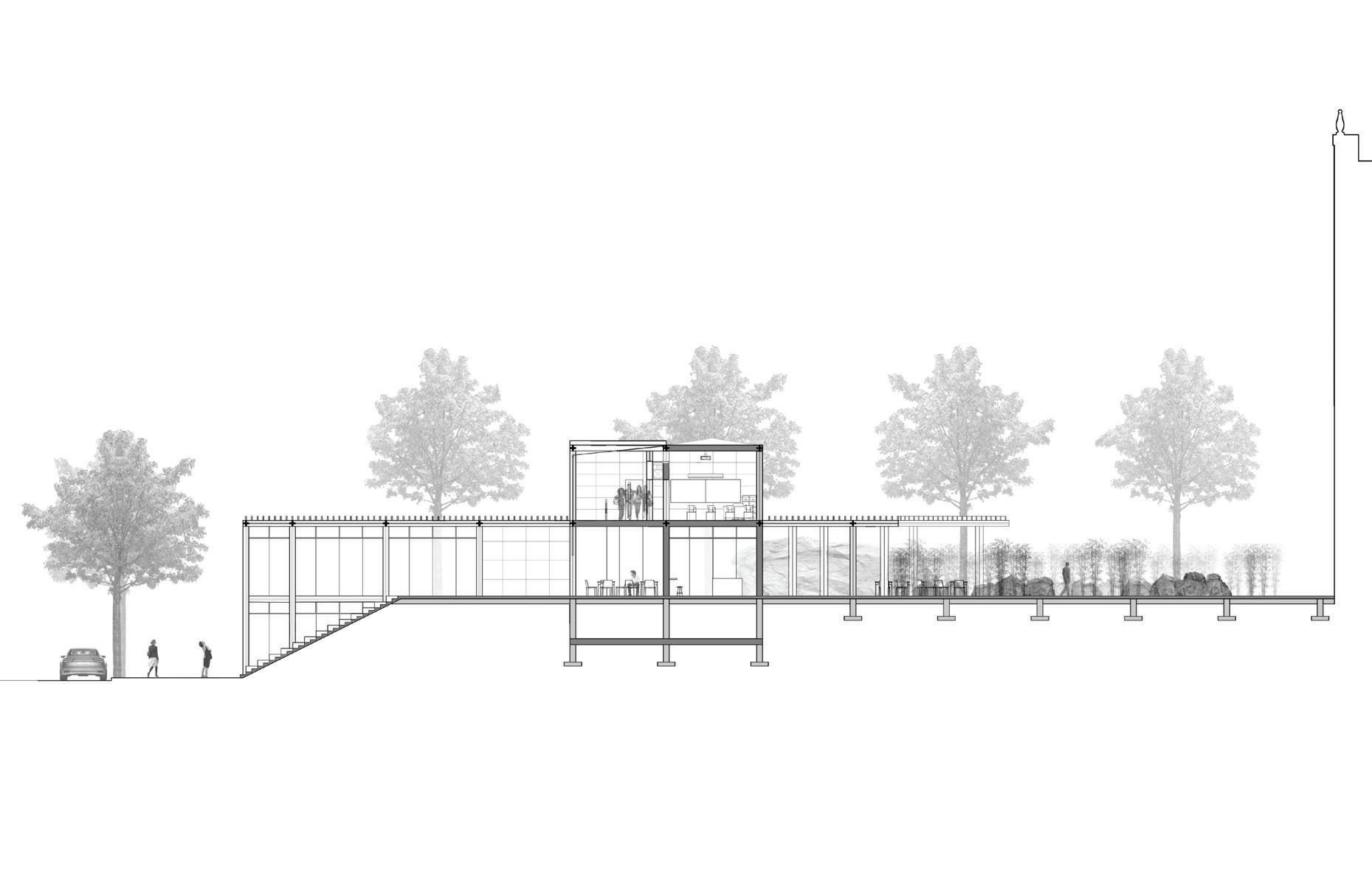
D. LEAD D. BOSS
ADS MP/JW MP/JW
M540, MANHATTAN A. PHILIP RANDOLPH HIGH SCHOOL ADDITION
Address: 443 WEST 135 STREET MANHATTAN, NY 10031
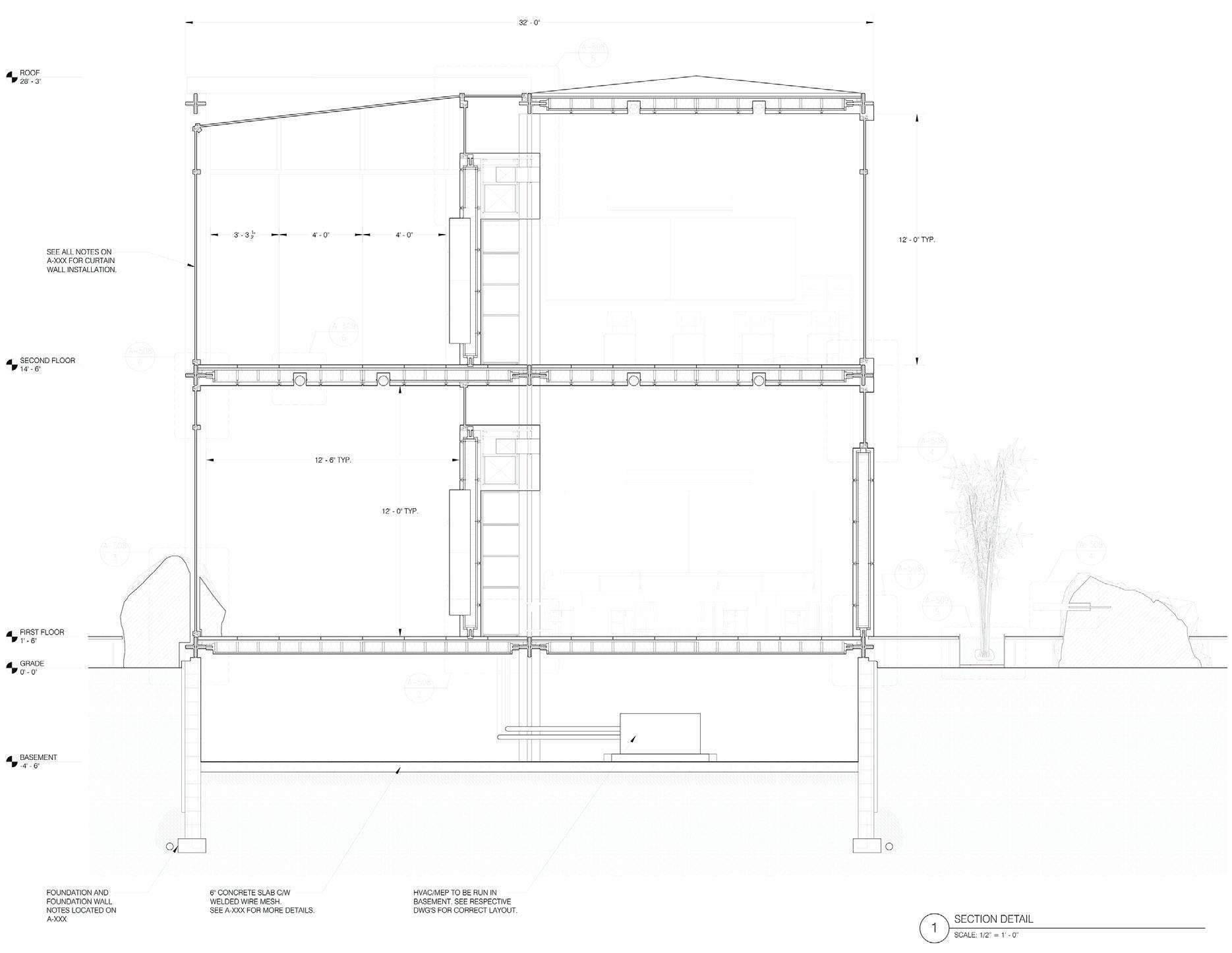
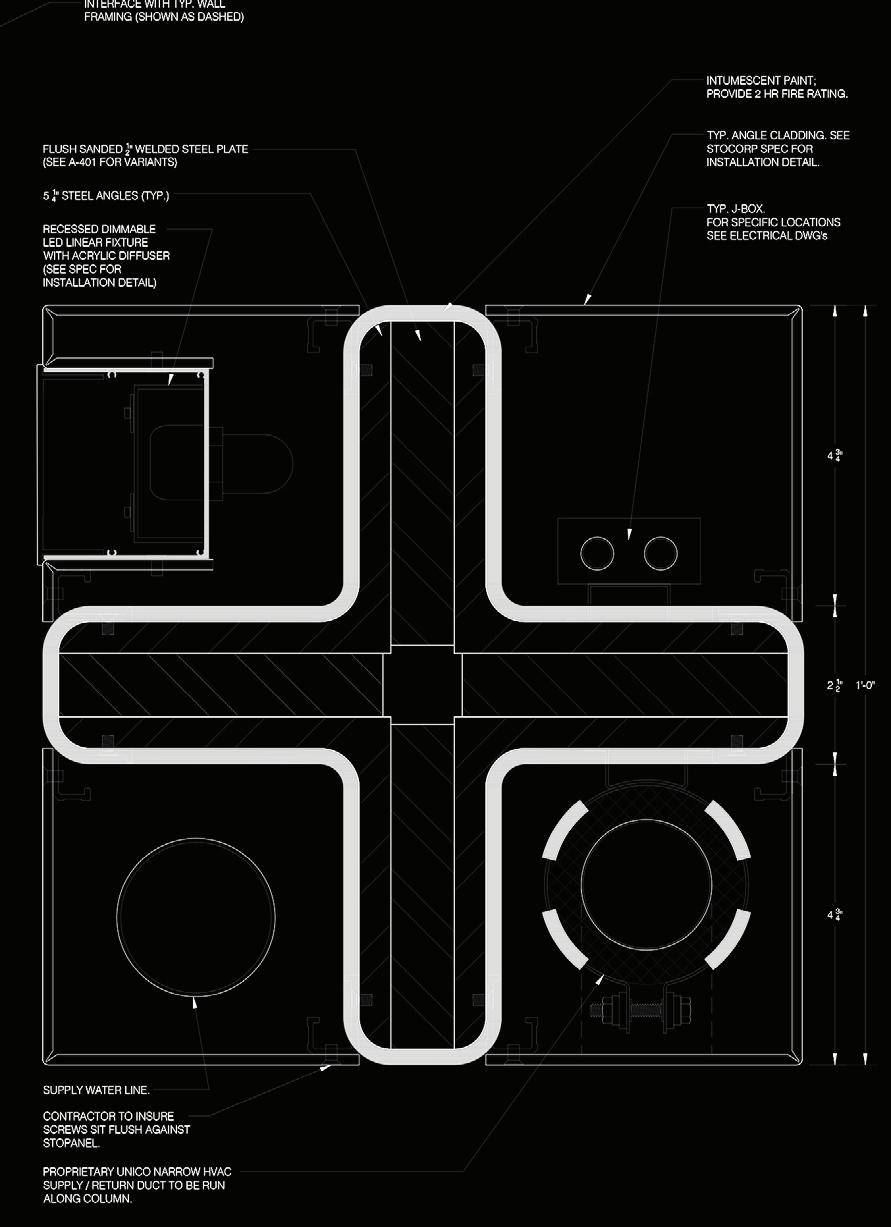
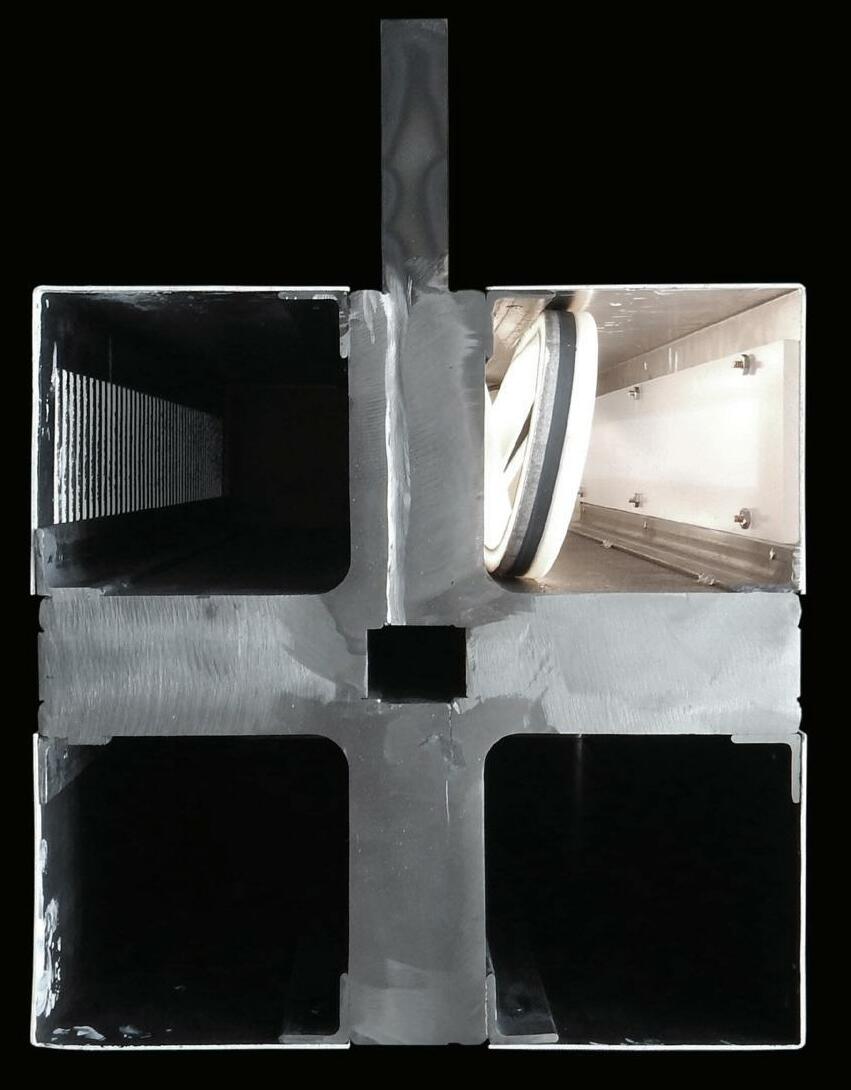
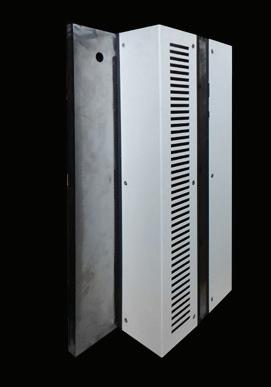
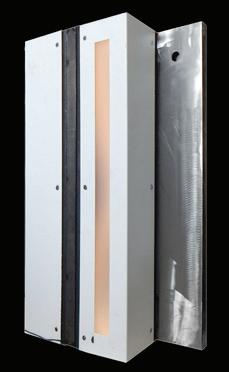

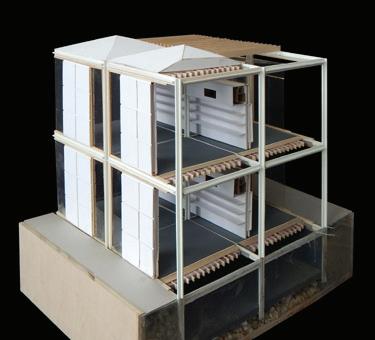
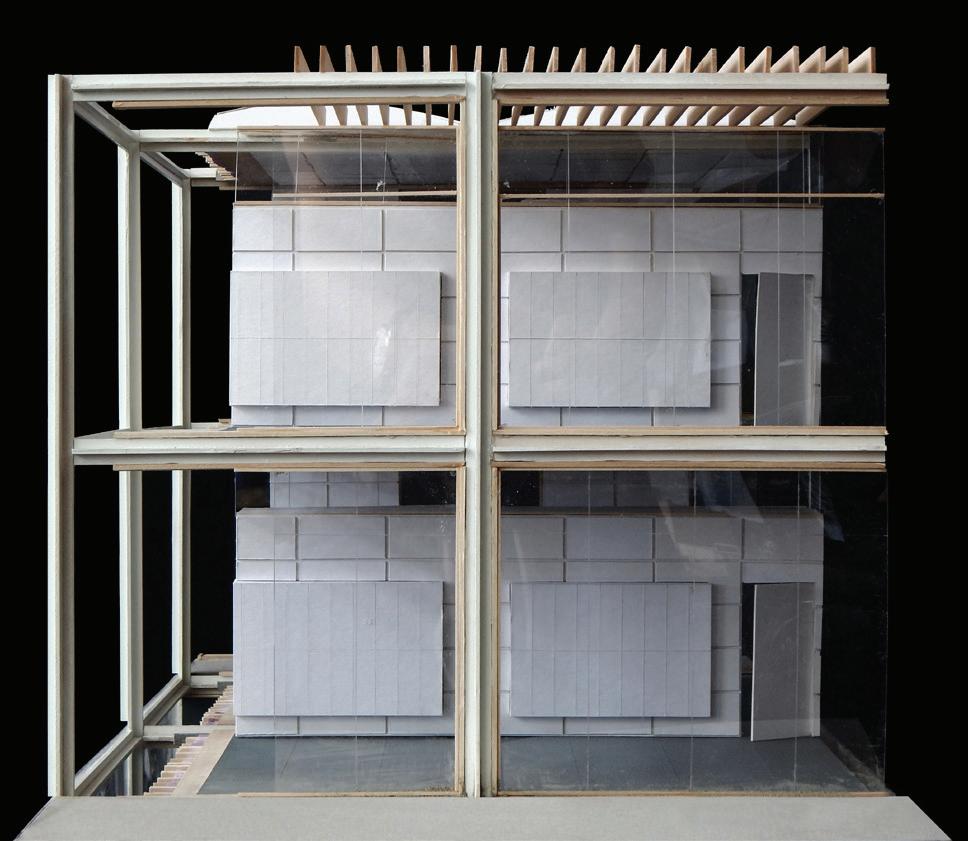
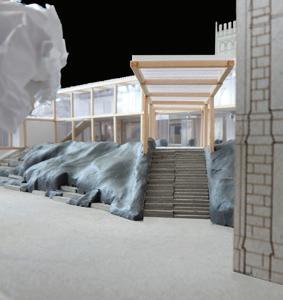
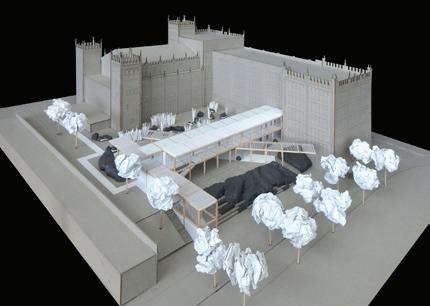
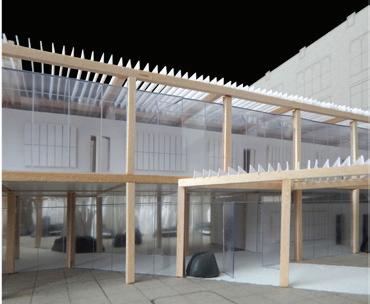
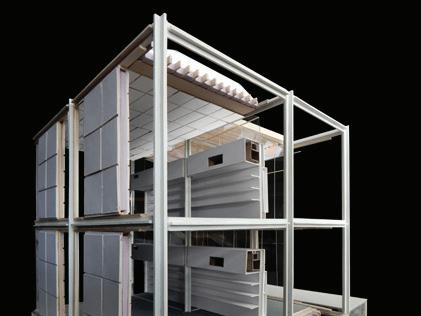

STRUCTURE THROUGH LIGHT
Partner: Victoria Graziano
With the express intention to explore materiality and its variant potentials, this project examined the material of concrete through the inductive process of experimentation.
With the intention of introducing the property of light as an element into the composition of concrete, both plastic and glass were used in a series of experiments to determine both the structural and phenomenological qualities of this new composite. In the end, the integration of a structural plastic lattice with concrete proved to be ideal as light was transmitted through the material itself, and the structural integrity of the composite greatly increased.
The construction of a light object demonstrates the qualities and potentials of the new composite. The piece itself expresses the intention to domesticate the industrial, To make the heavy light, and to allow the concrete to re-materialize.
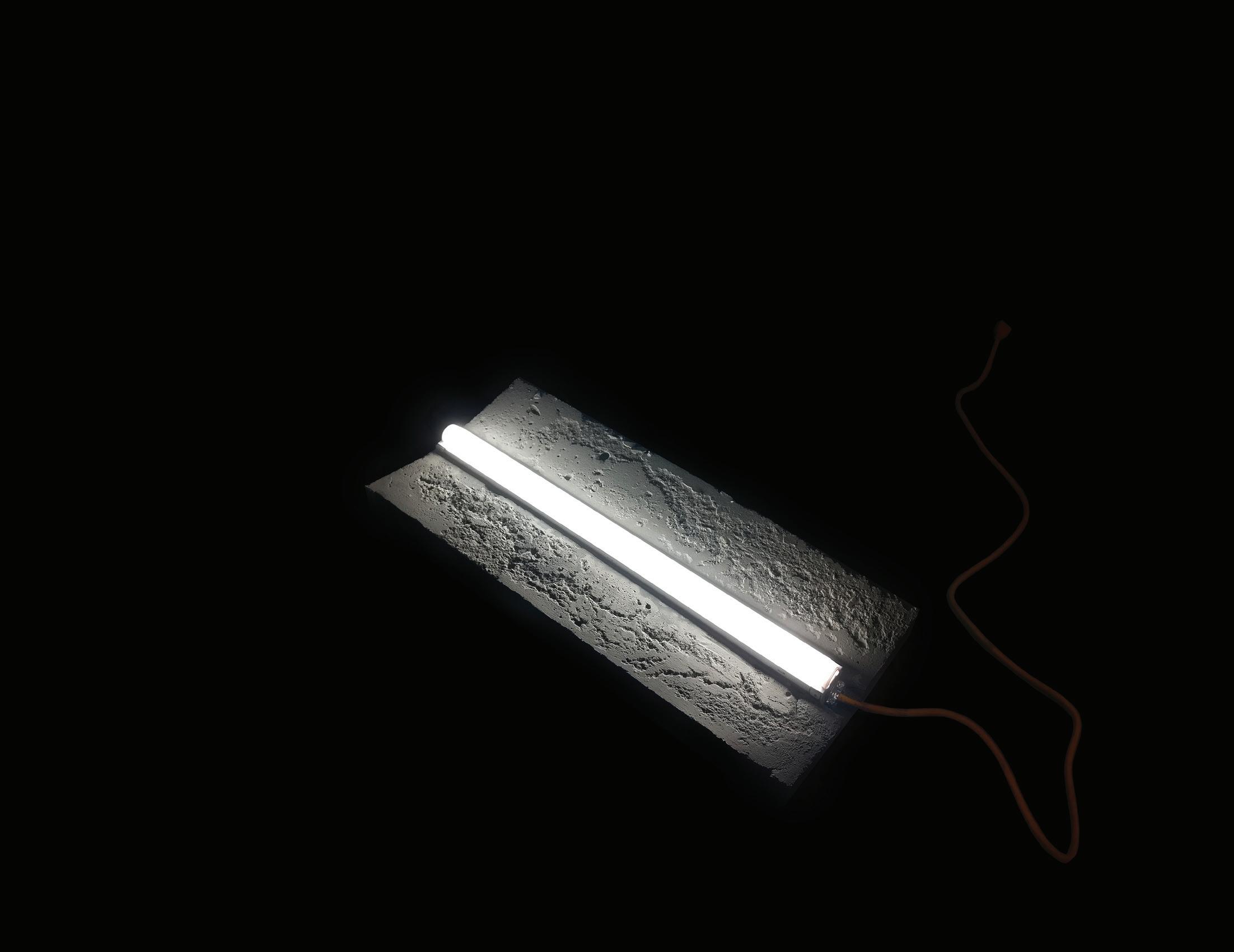
PROCESS
PLEXI STRIPS ASSEMBLED IN A MULTI-LAYERED LATTICE FORMATION
LATTICE FORMATION FUSED WITH HEAT AND MOLDED TO TAKE PROPER ‘WAVE’ FORM WITH THE USE OF A HEAT GUN
FUSED PLEXI LATTICE NOW SERVES AS STRUCTURAL COMPONENT OF NEW COMPOSITE MATERIAL
PLYWOOD FORM WORK CONSTRUCTED
STRUCTURAL LATTICE CURVED WITH HEAT AND INSERTED INTO FORM WORK
CONCRETE MIX INSERTED INTO FORM WORK WITH STRUCTURAL LATTICE
TESTS
REMOVE FORM WORK, GRIND SURFACE OF NEW COMPOSITE MATERIAL
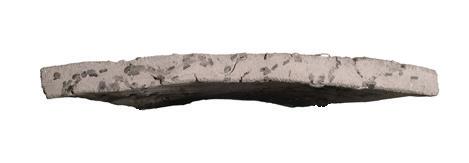

PLEXI STRIPS LAYERED & FUSED TOGETHER WITH HEAT
FUSED PLEXI AGGREGATE INSERTED IN CONCRETE MIX, ONCE CURED , SURFACE GRINDED AWAY TO REVEAL INTERIOR PLEXI STRUCTURE
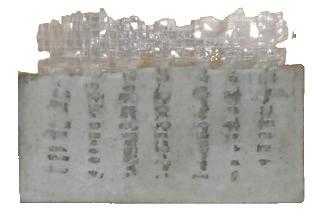

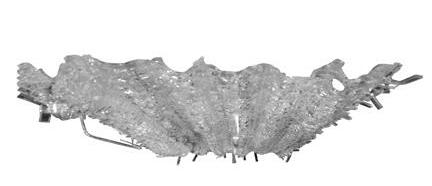




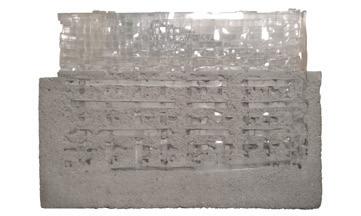
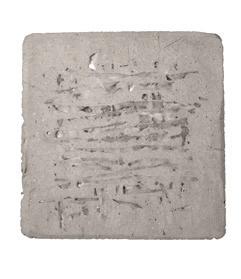
PLEXI STRIPS ASSEMBLED IN A MULTILAYERED LATTICE FORMATION

PREFERED STRUCTURAL FORM
MULTILAYERED LATTICE FORMED INTO ‘WAVE’ FORM
FINAL PRODUCT
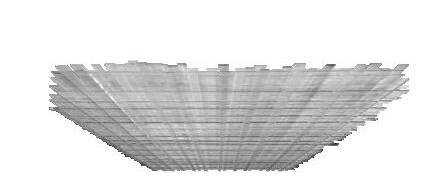
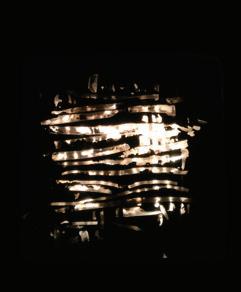
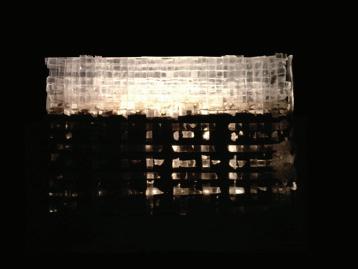
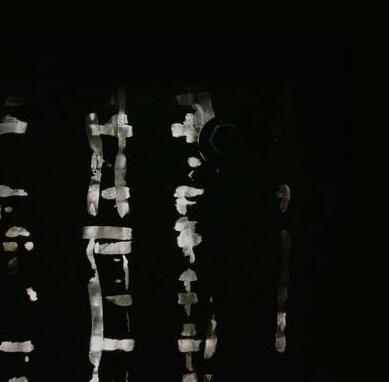
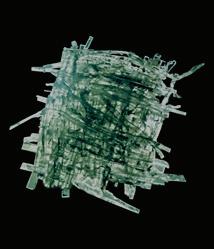
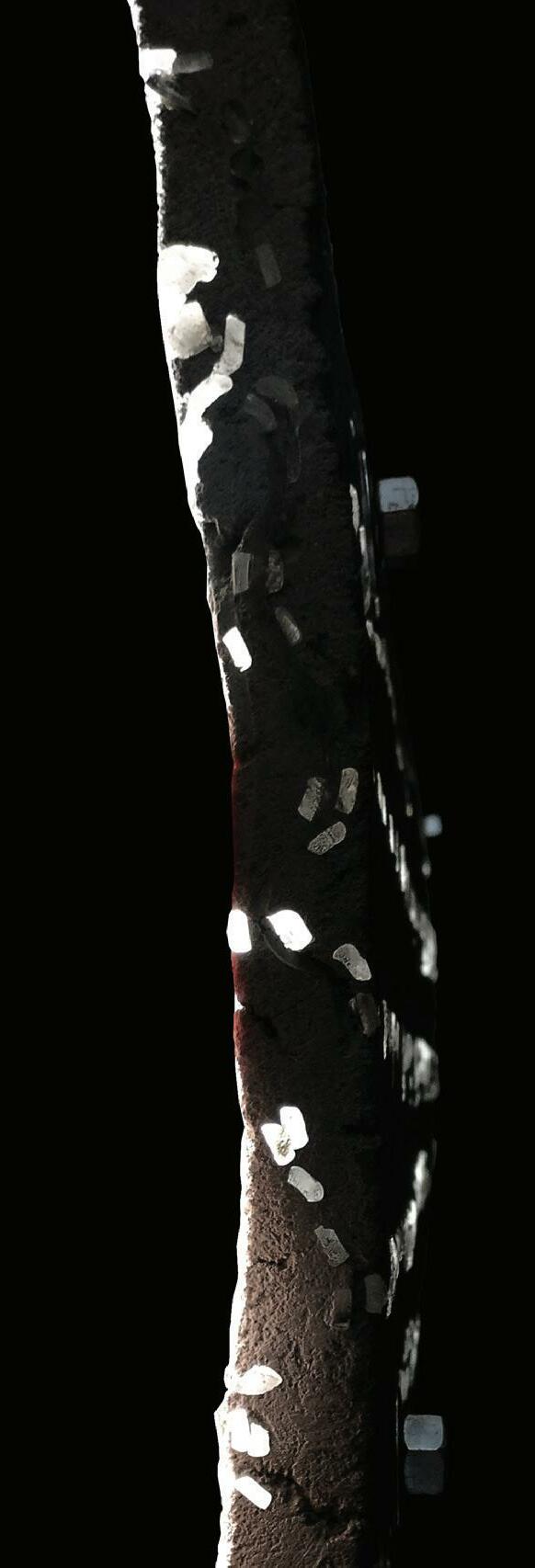
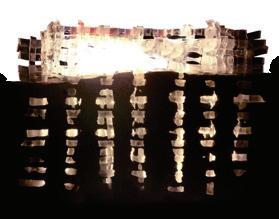
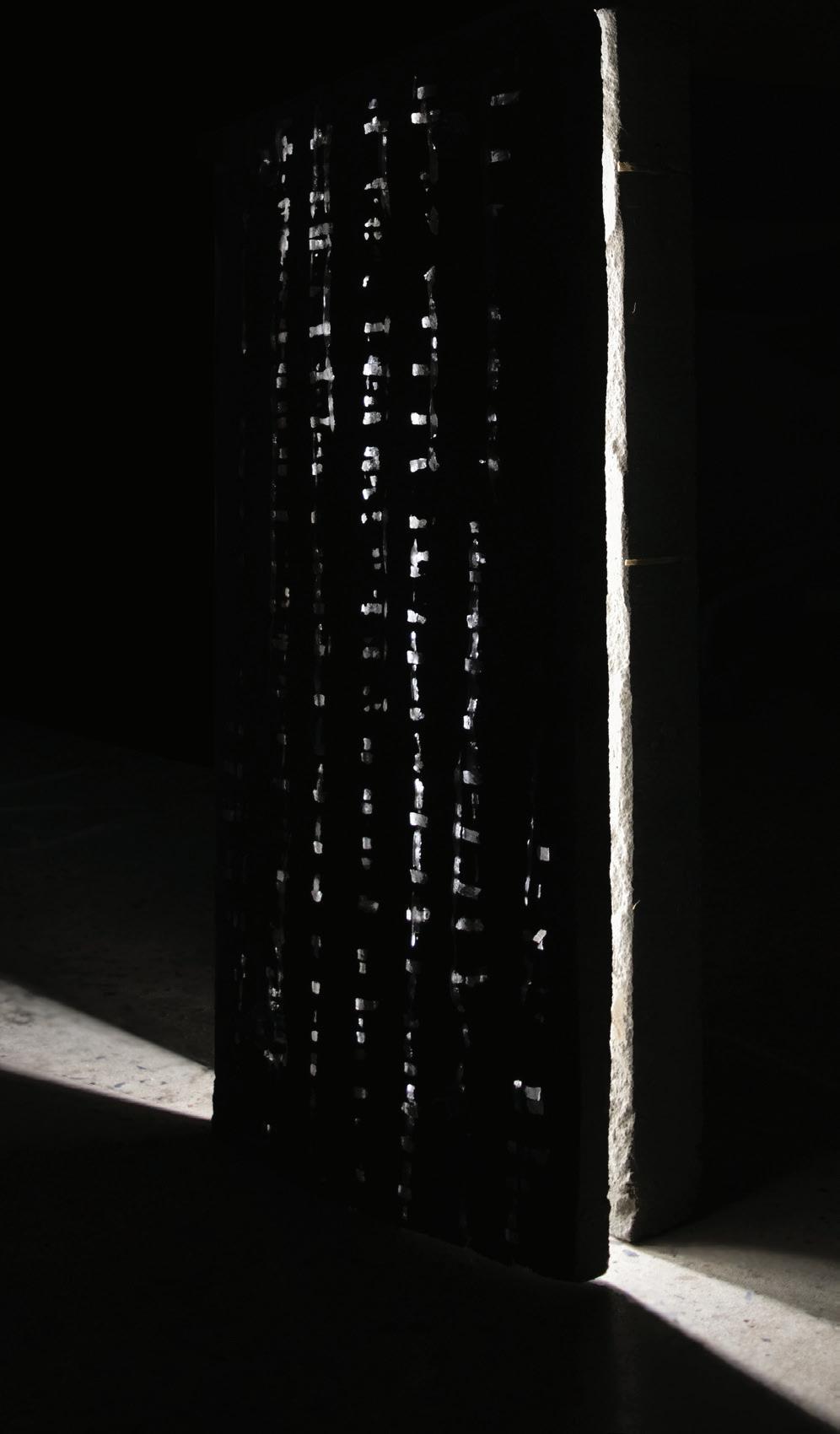
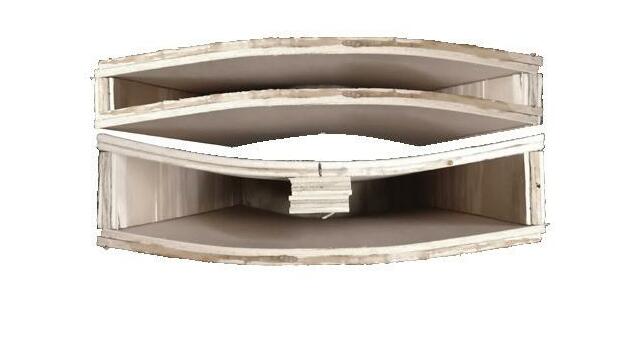
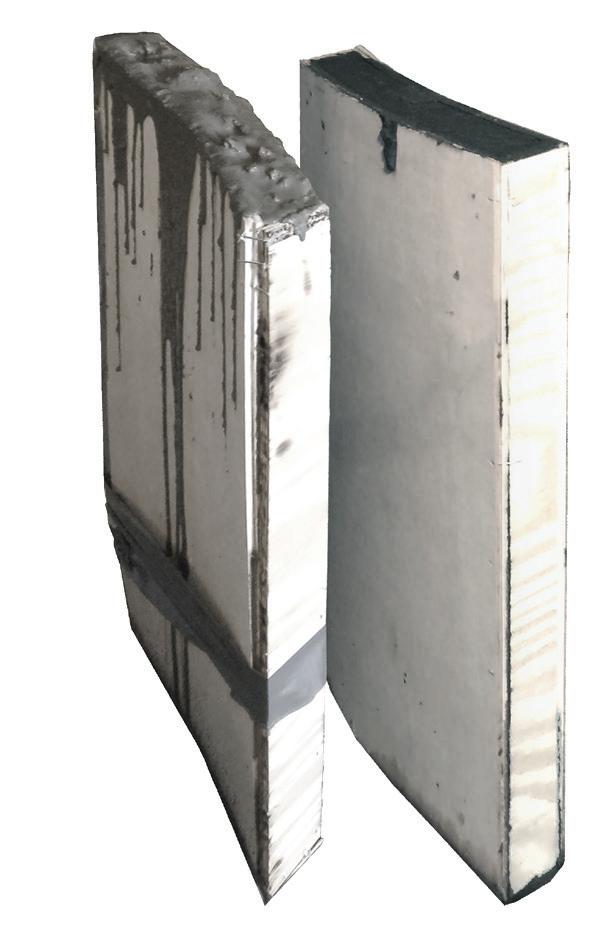
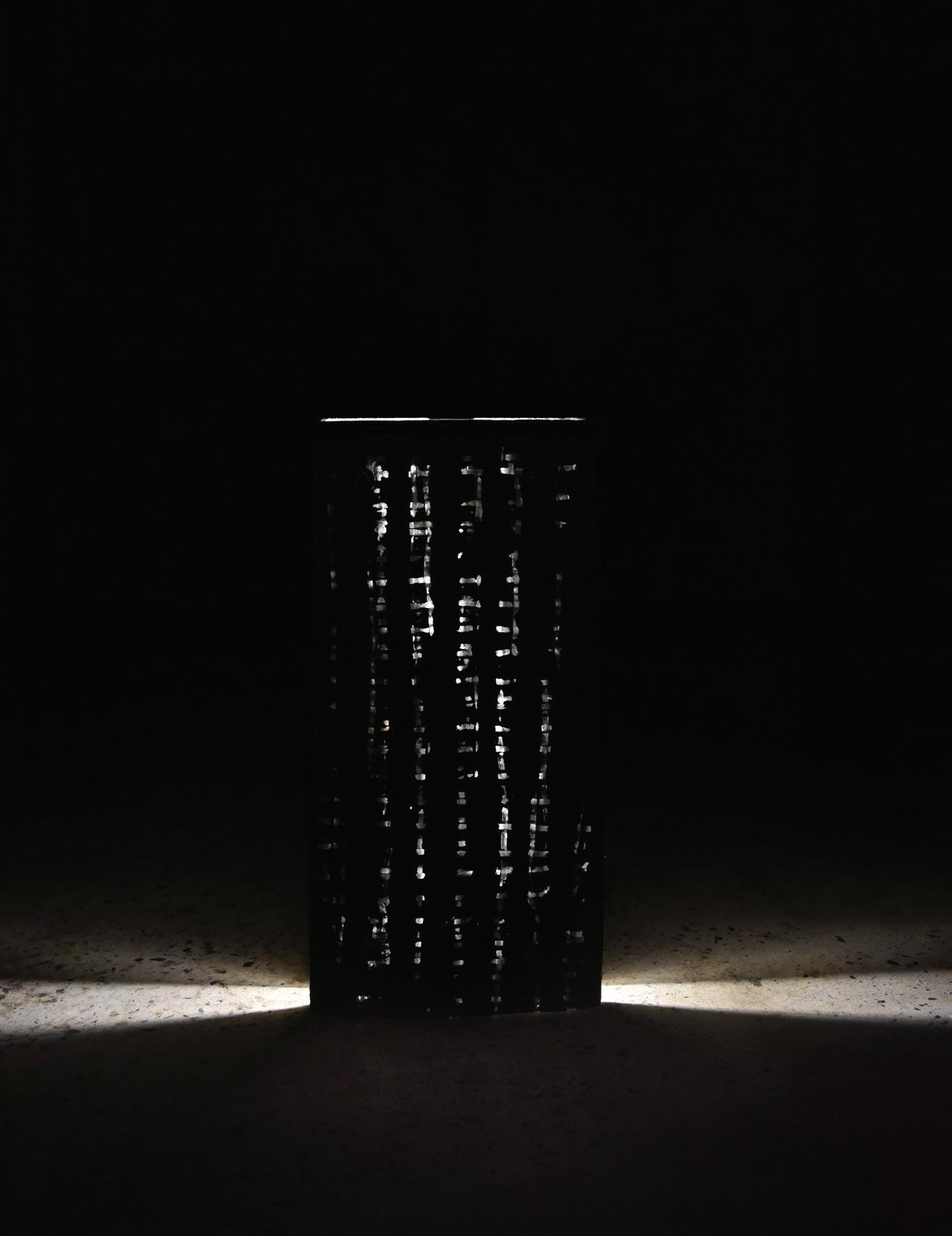
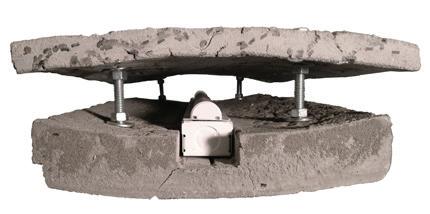
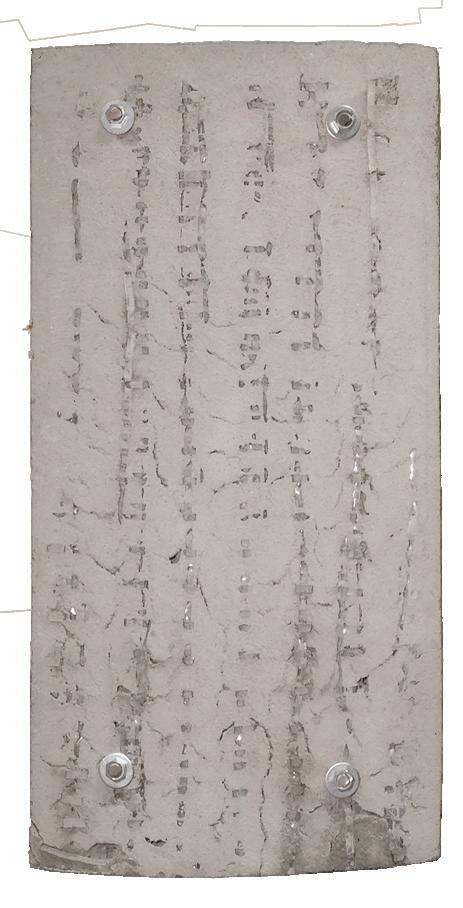
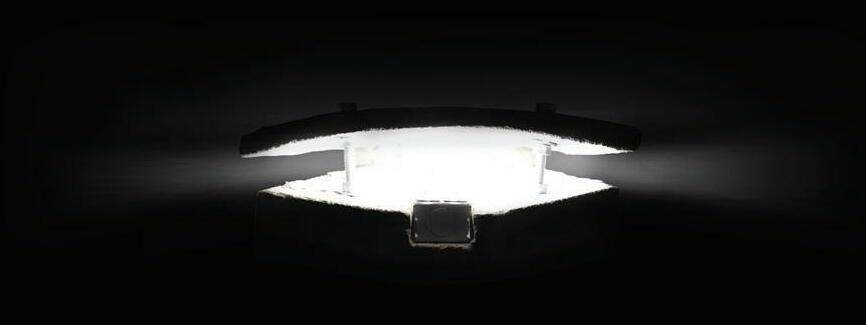
LIGHT AS STRUCTURE
Partner: Victoria Graziano
This centerpiece object is a chandelier that provides both direct localized light and diffused atmospheric light. Composed of three vertical planes held together by dispersed illuminated acrylic rods, the object is an experiential light source. The simple combination of planes, rods, and light, transforms the surrounding space of the chandelier and illuminates the space with sufficient luminous flux. In addition, its soft atmospheric glow changes the experience of the space around the object.
Our design objective was to produce a chandelier that not only lights the space but creates a unique experience of light. It is both a functional object that behaves as a direct light source and also an ornamental piece as it creates an ethereal atmosphere through the diffusion of light.
The conceptual driver for this piece was the idea of light as structure. The light source is hidden at the top of the chandelier and is transmitted through the acrylic rods that hold the piece together. This creates an object where the structure is perceived as light itself.
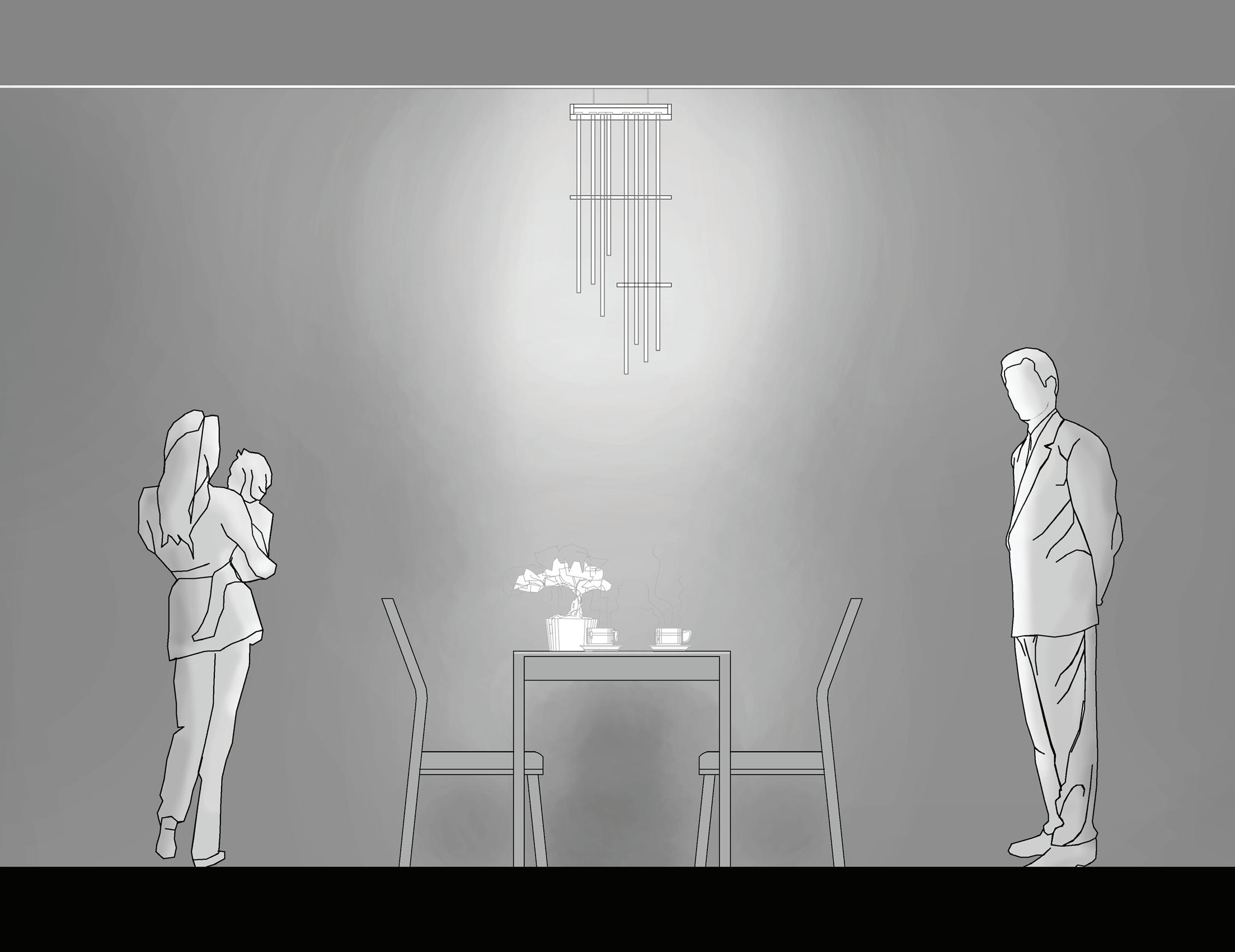
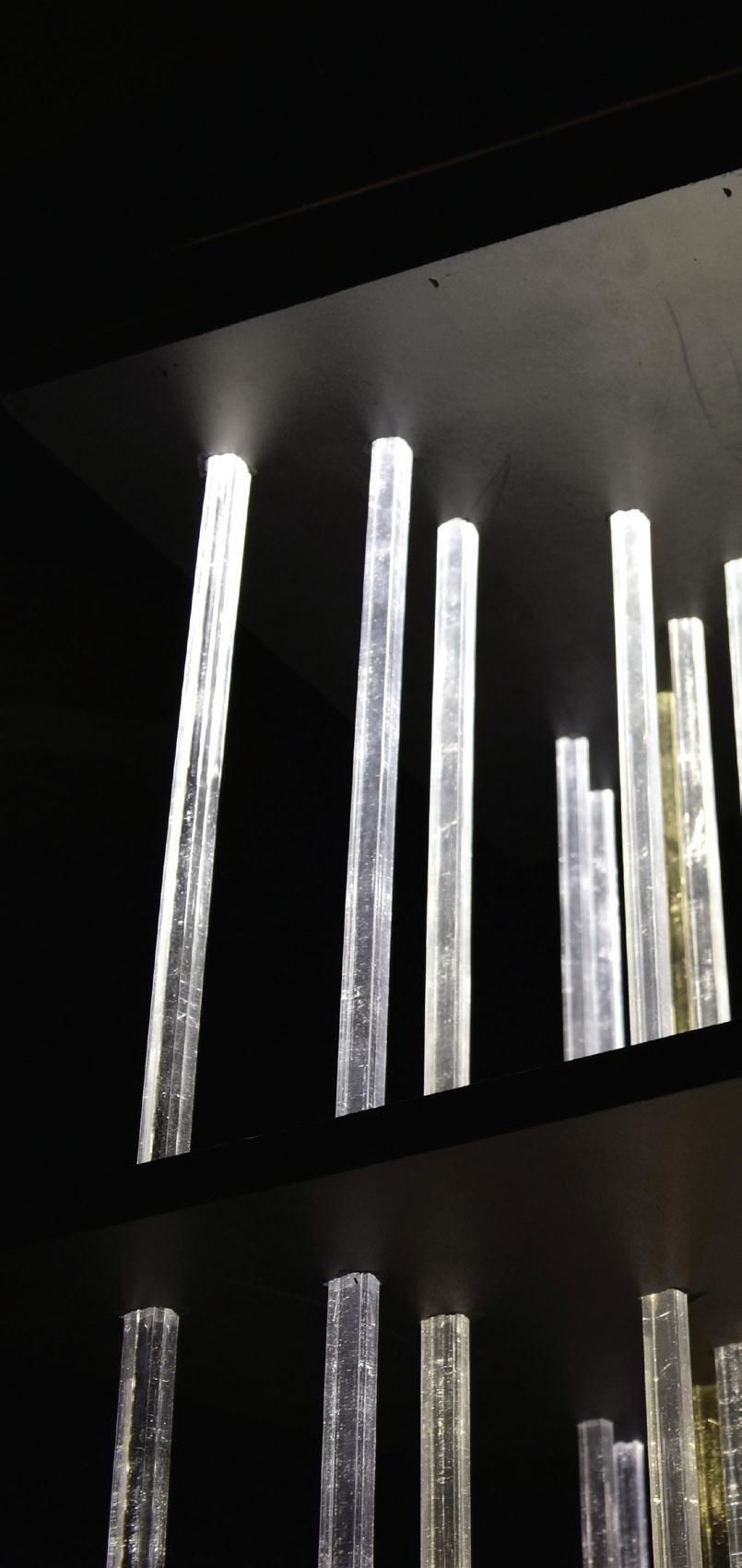
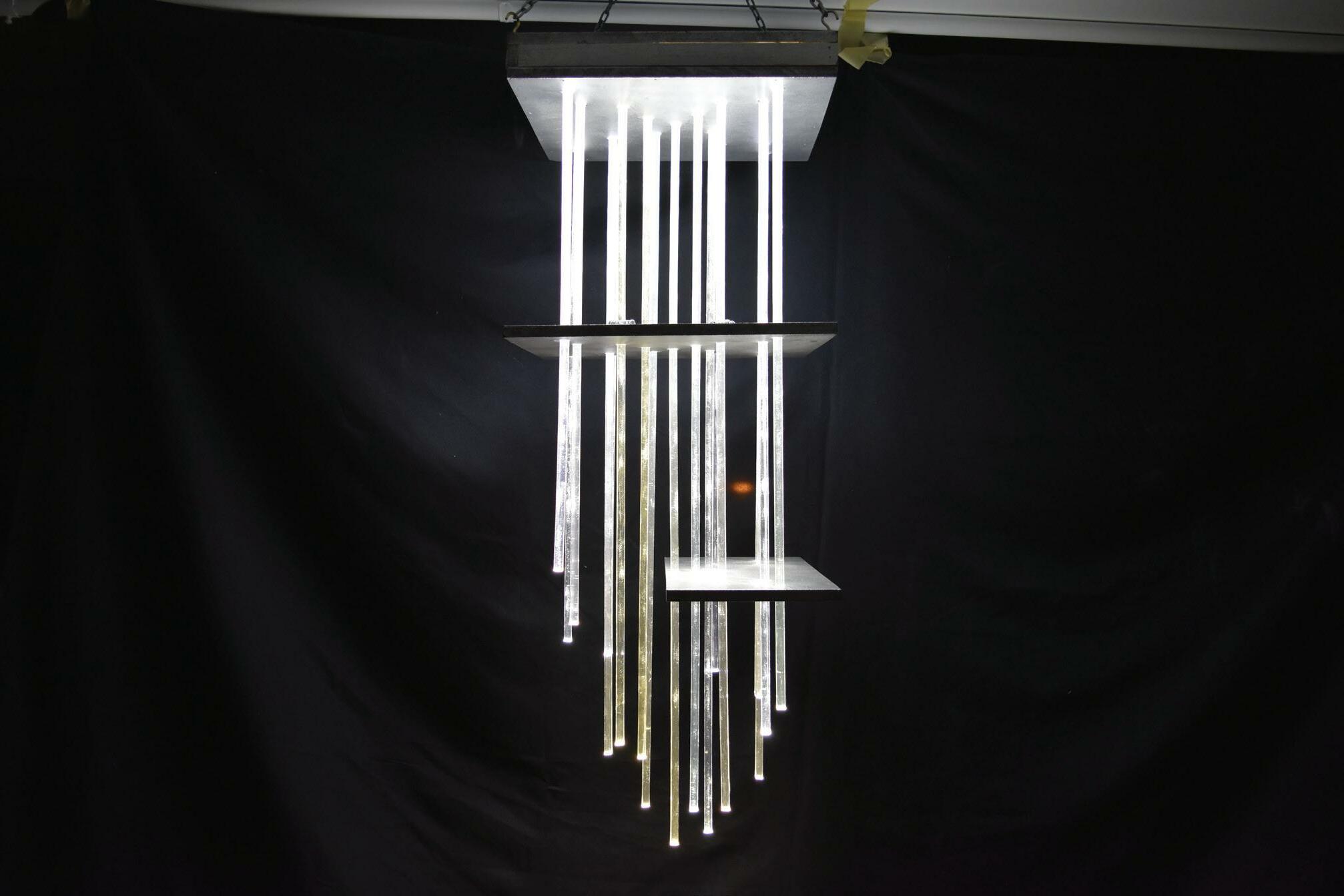
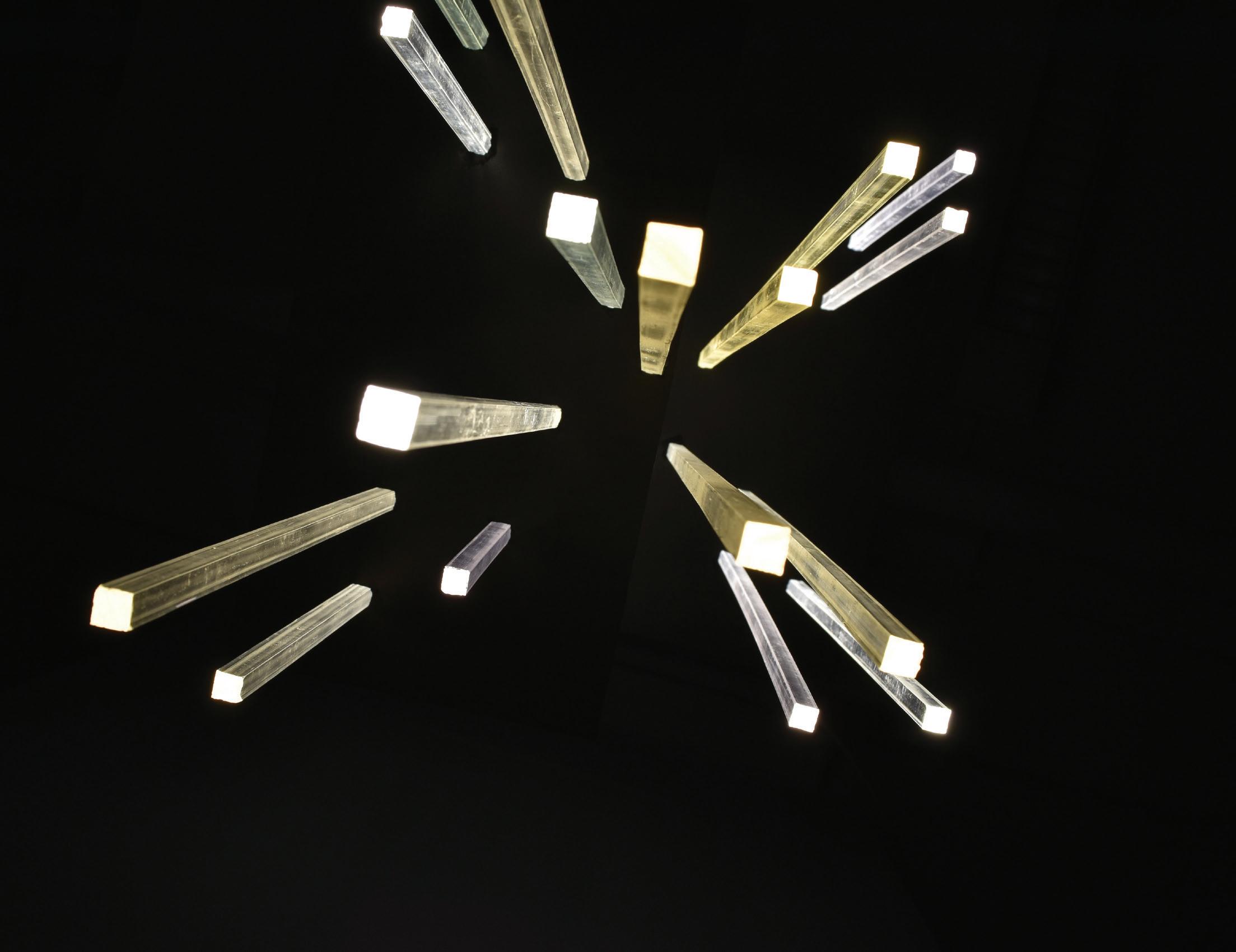
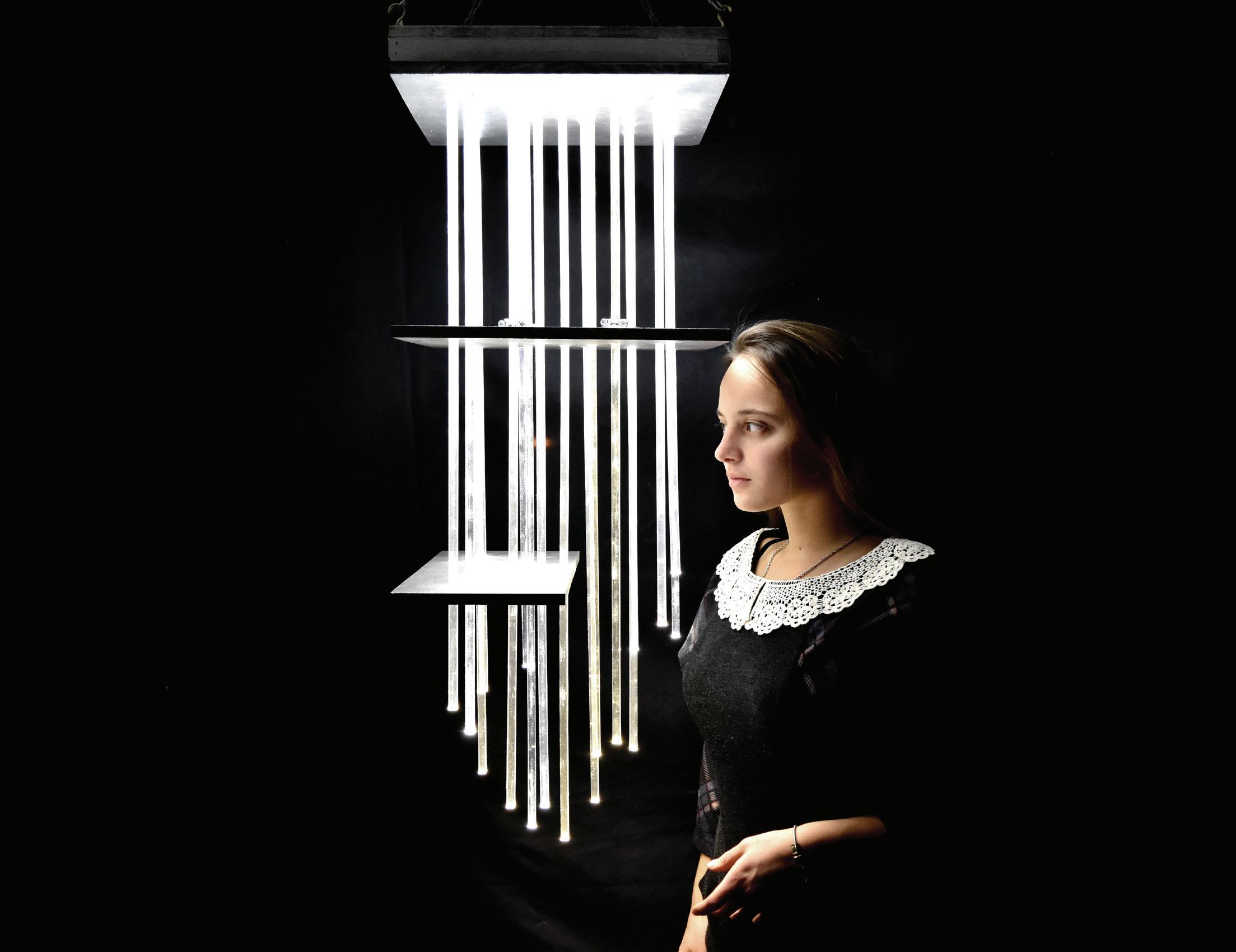
PHOTOGRAPHY
Reality exists within the distance between the subject and the object. These series of images explore subject object relations. The questions of whether the subject is itself another object among objects, or whether the subject holds ontological weight outside the object, are engaged.
Architectural, cultural, psychological, natural, and spiritual space is explored through the lenses of their variant expressions. Symbolism as an activator of meaning is understood as a dimension that informs and enriches the various types of spaces we simultaneously occupy.
Through the image, these many spaces are rendered unto one and we are allowed to intuitively comprehend them without technical understanding of their nature. The following photographs seek to elicit a more particular understanding of the themes at hand.
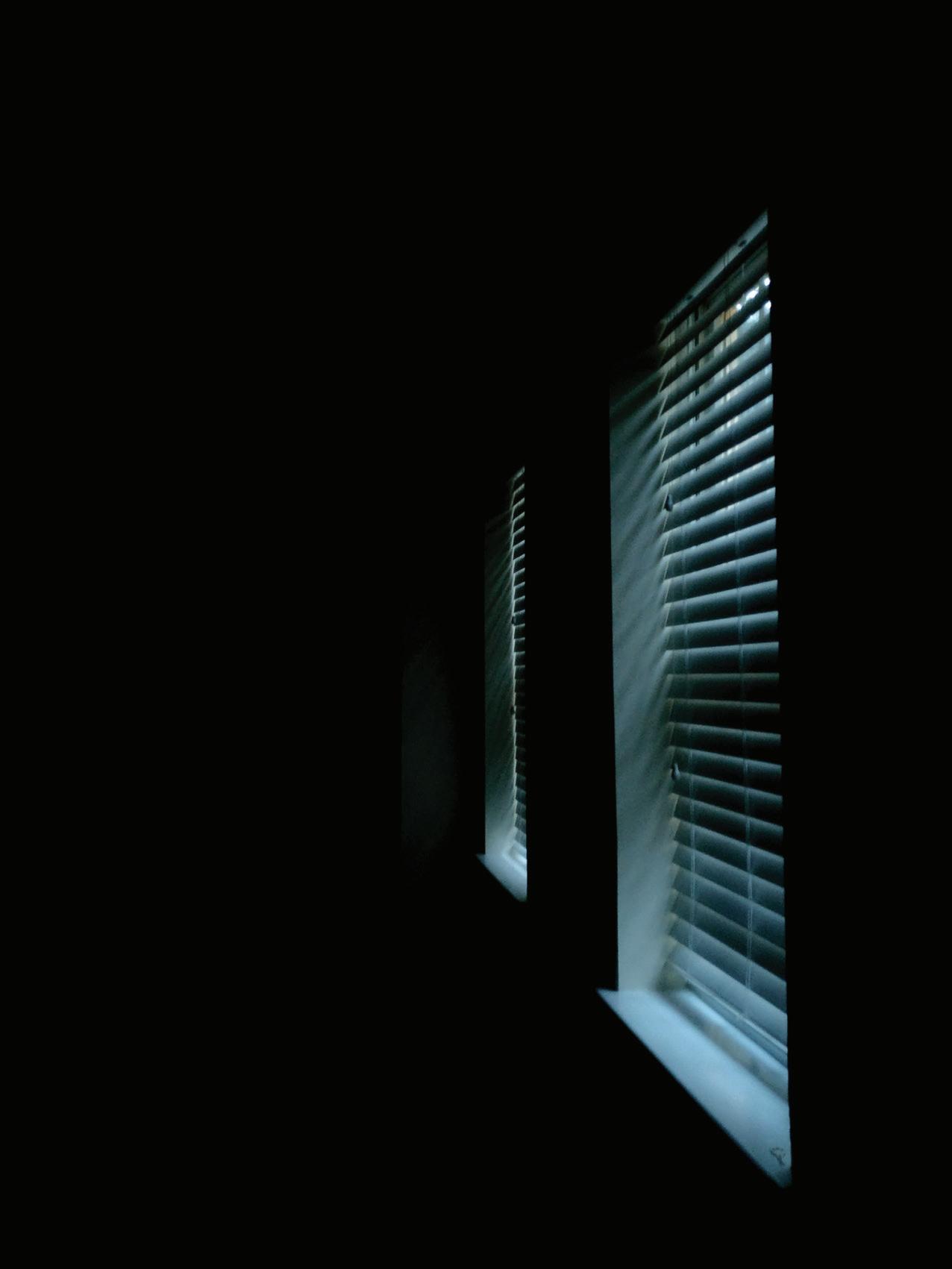
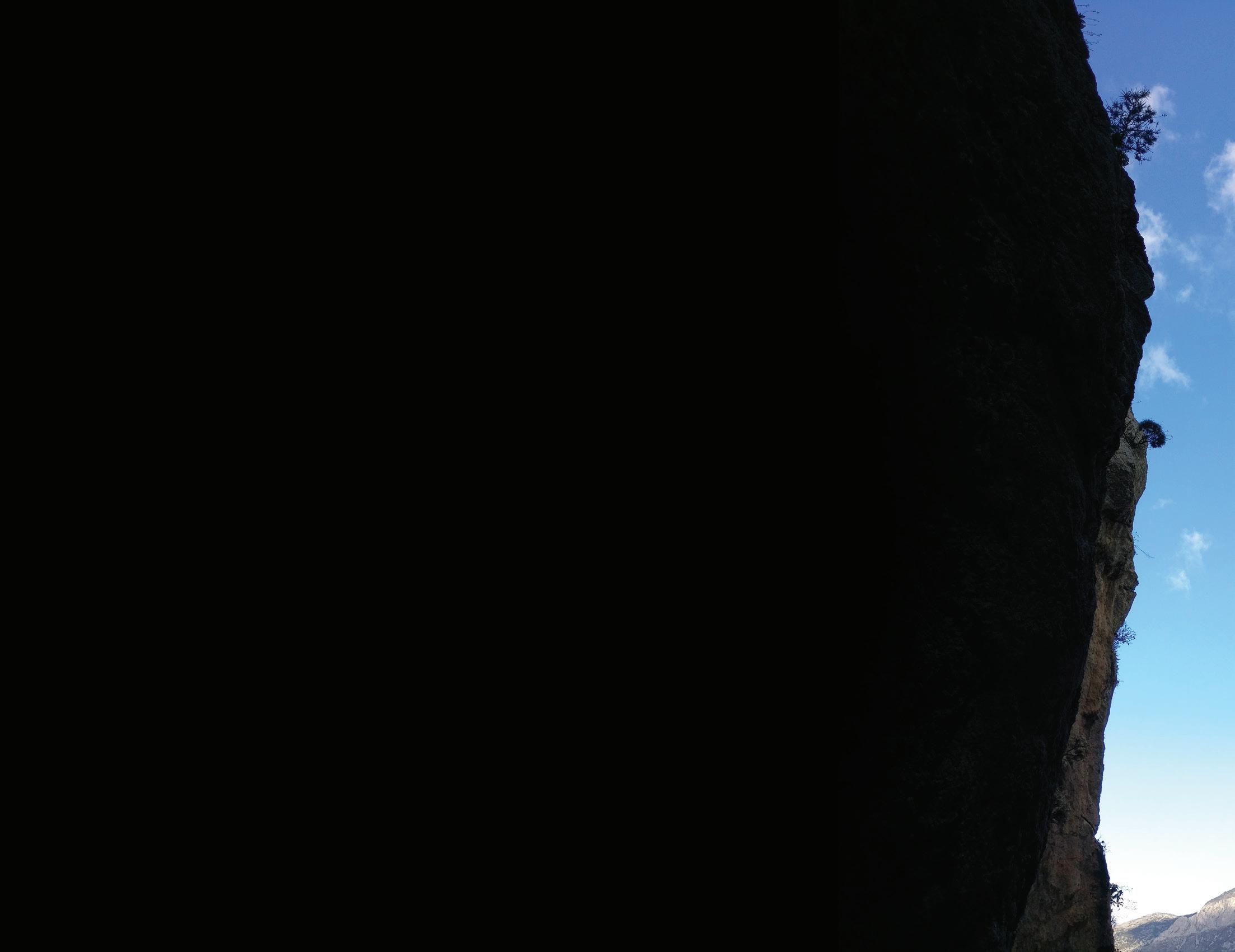
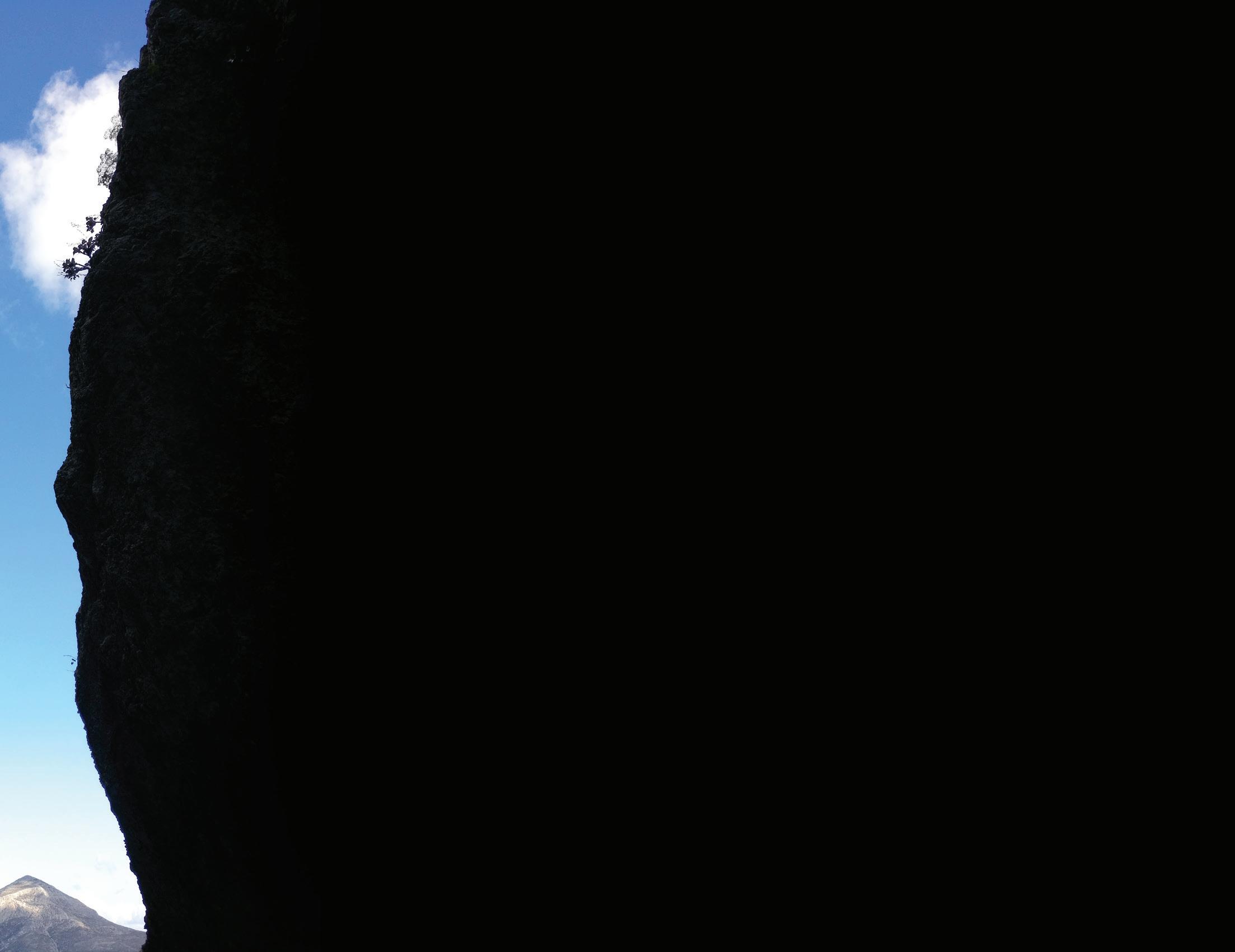
CASA MILA BARCELONA, SPAIN
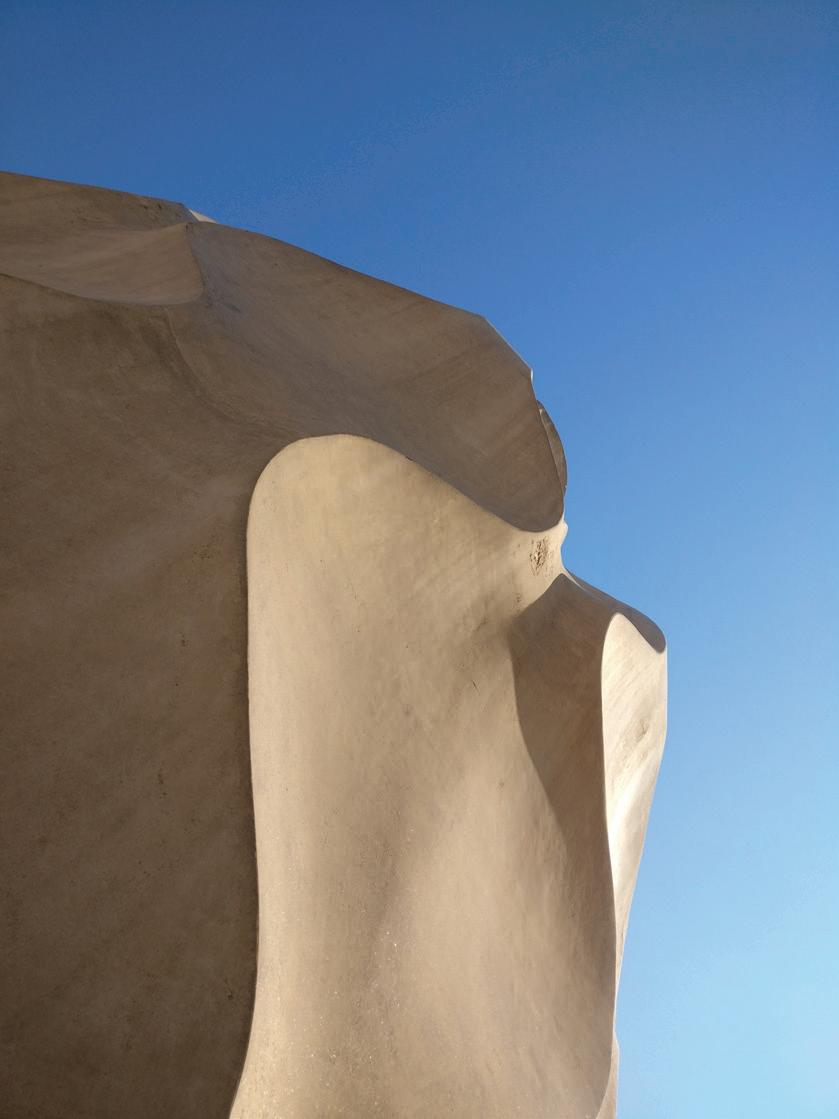 AEGEAN SEA GREECE
AEGEAN SEA GREECE
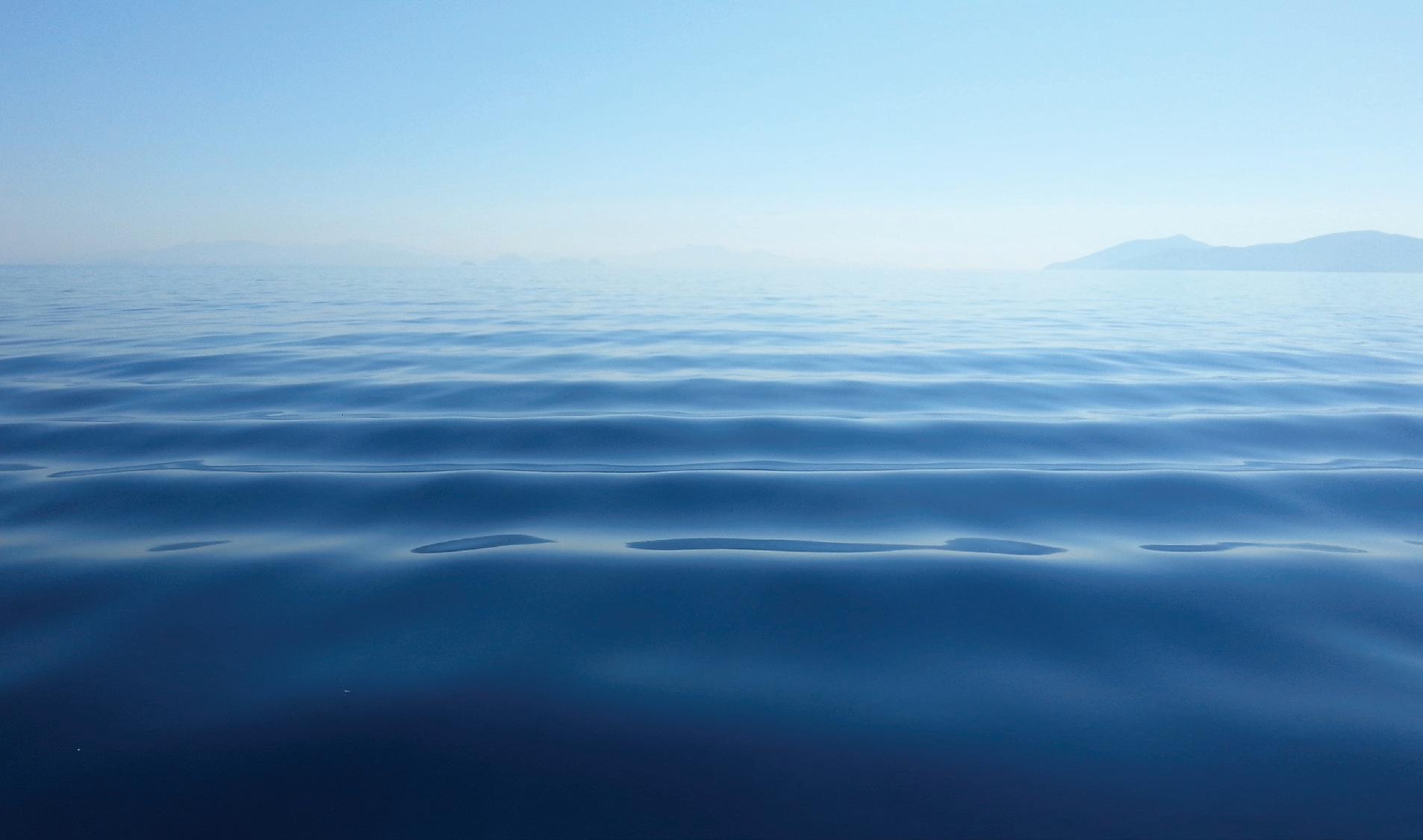
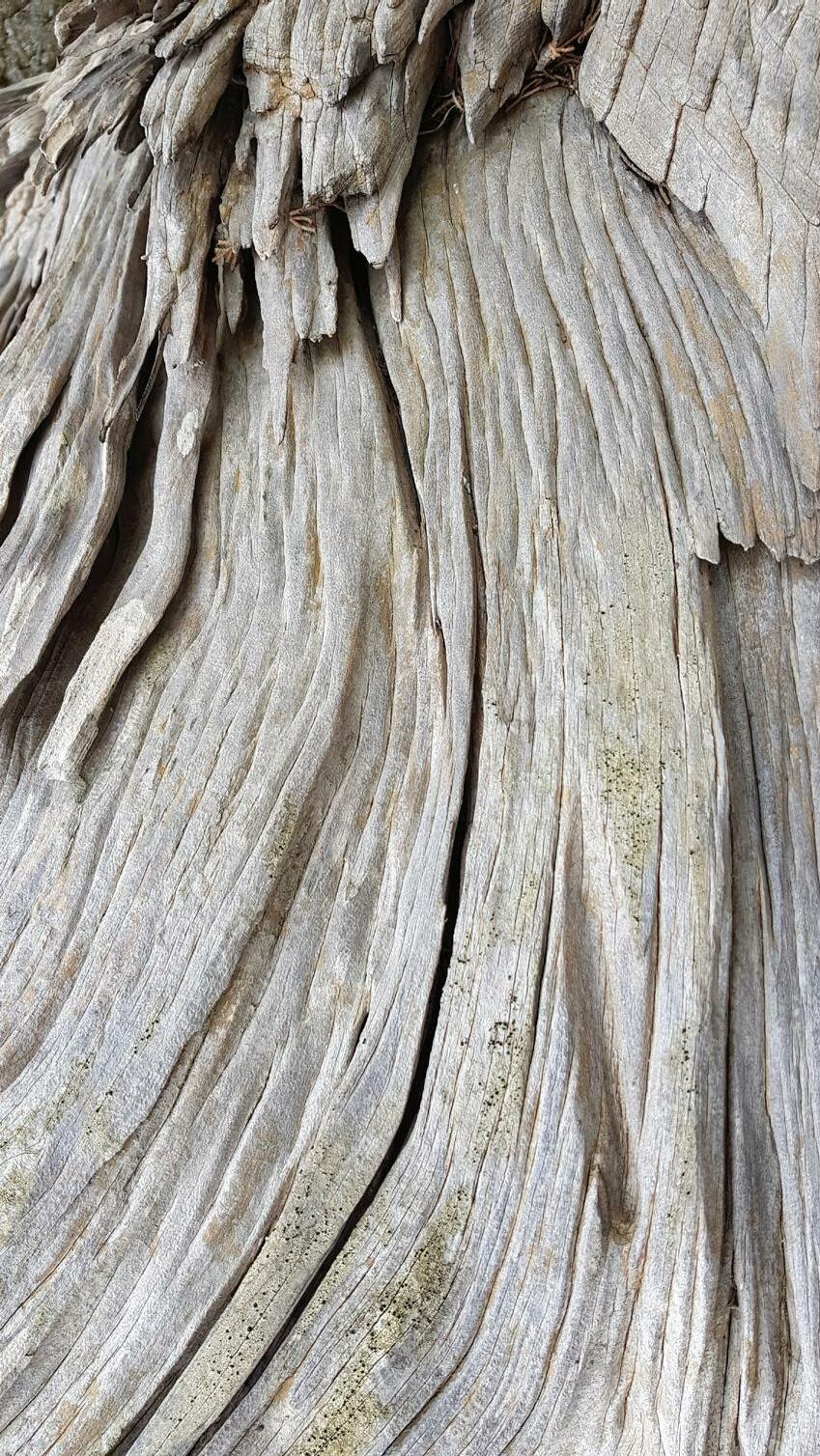
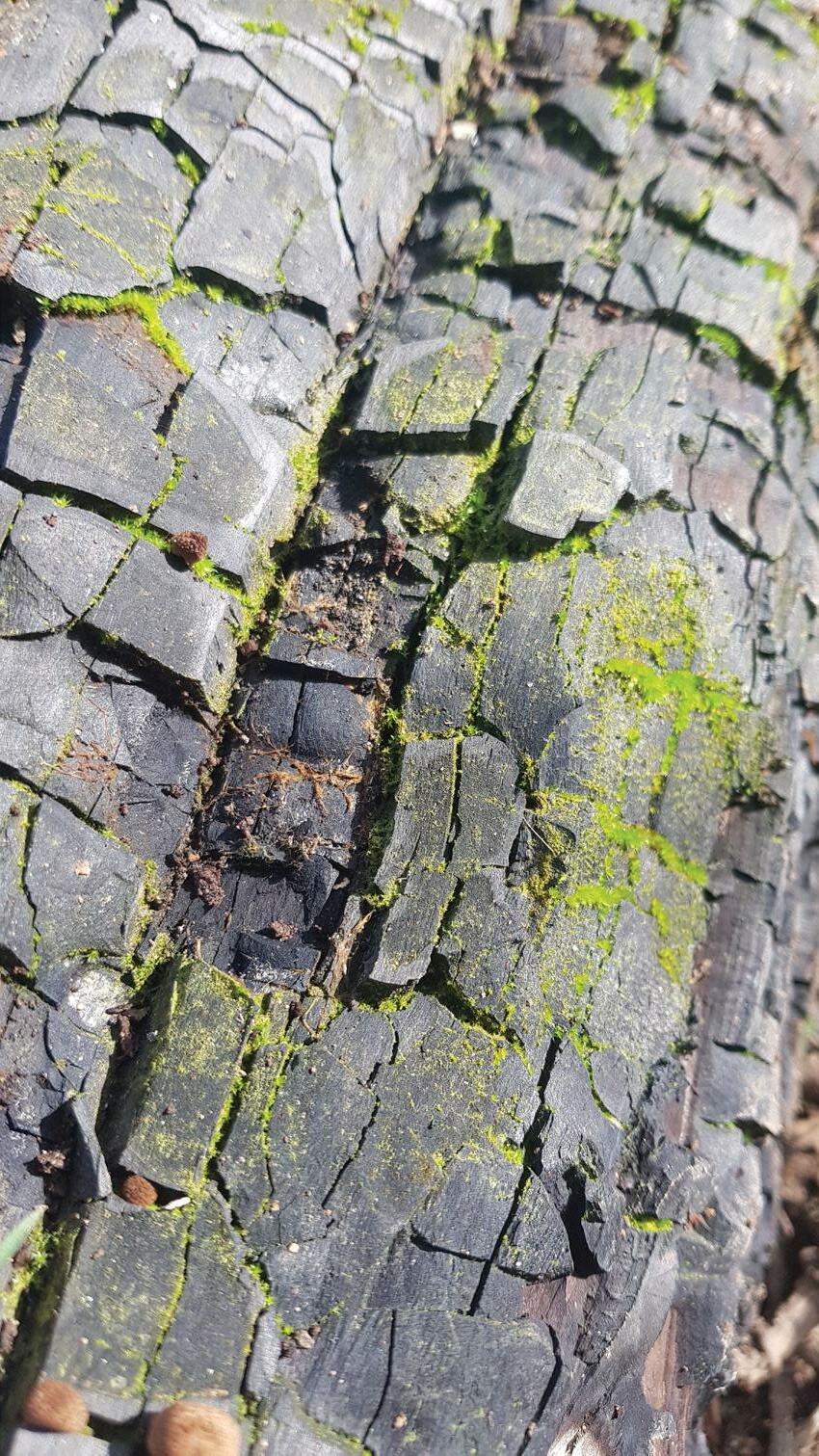
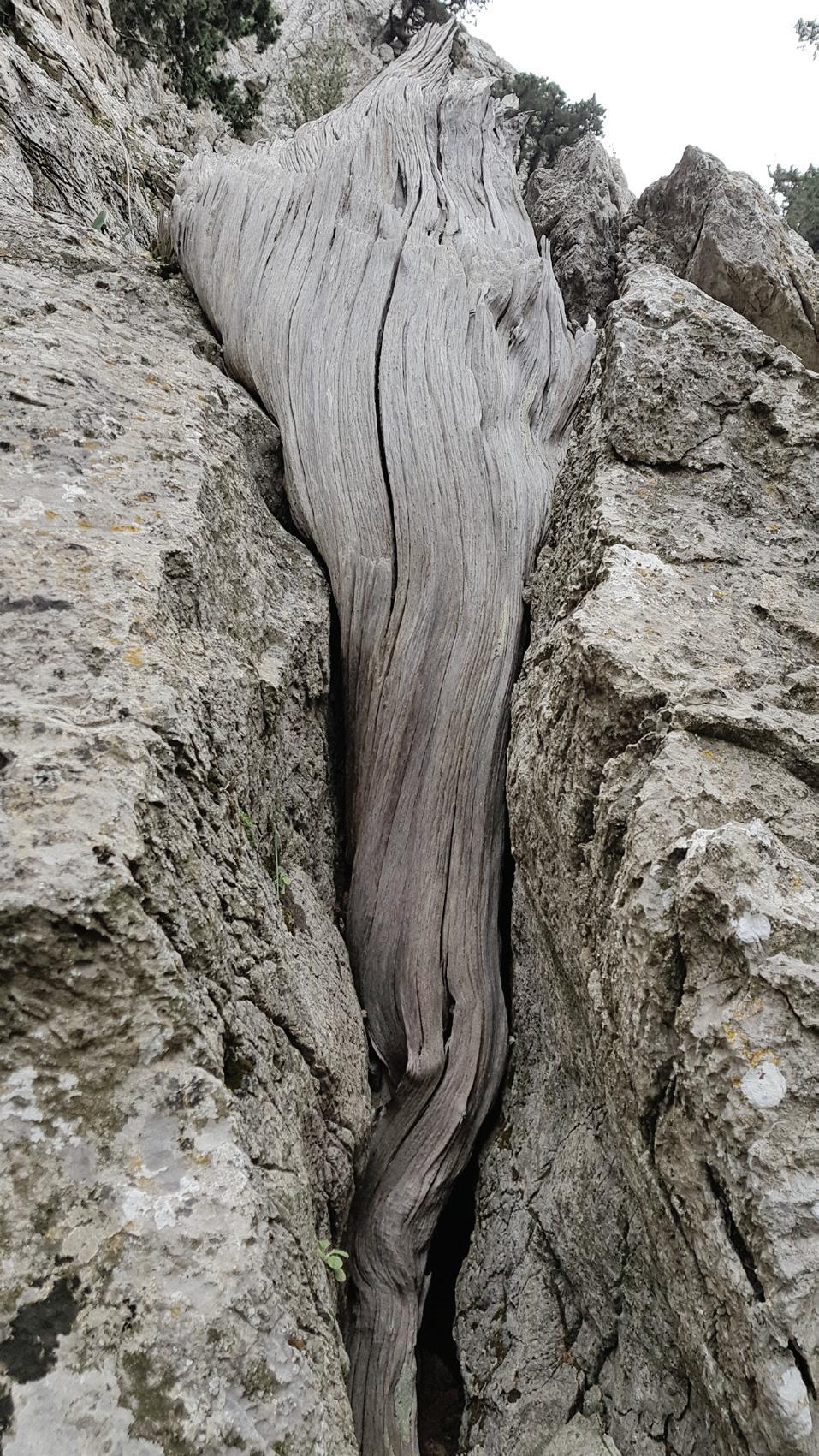 VARIANTS OF MORPHOLOGY
VARIANTS OF MORPHOLOGY
ACROPOLIS ATHENS, GREECE
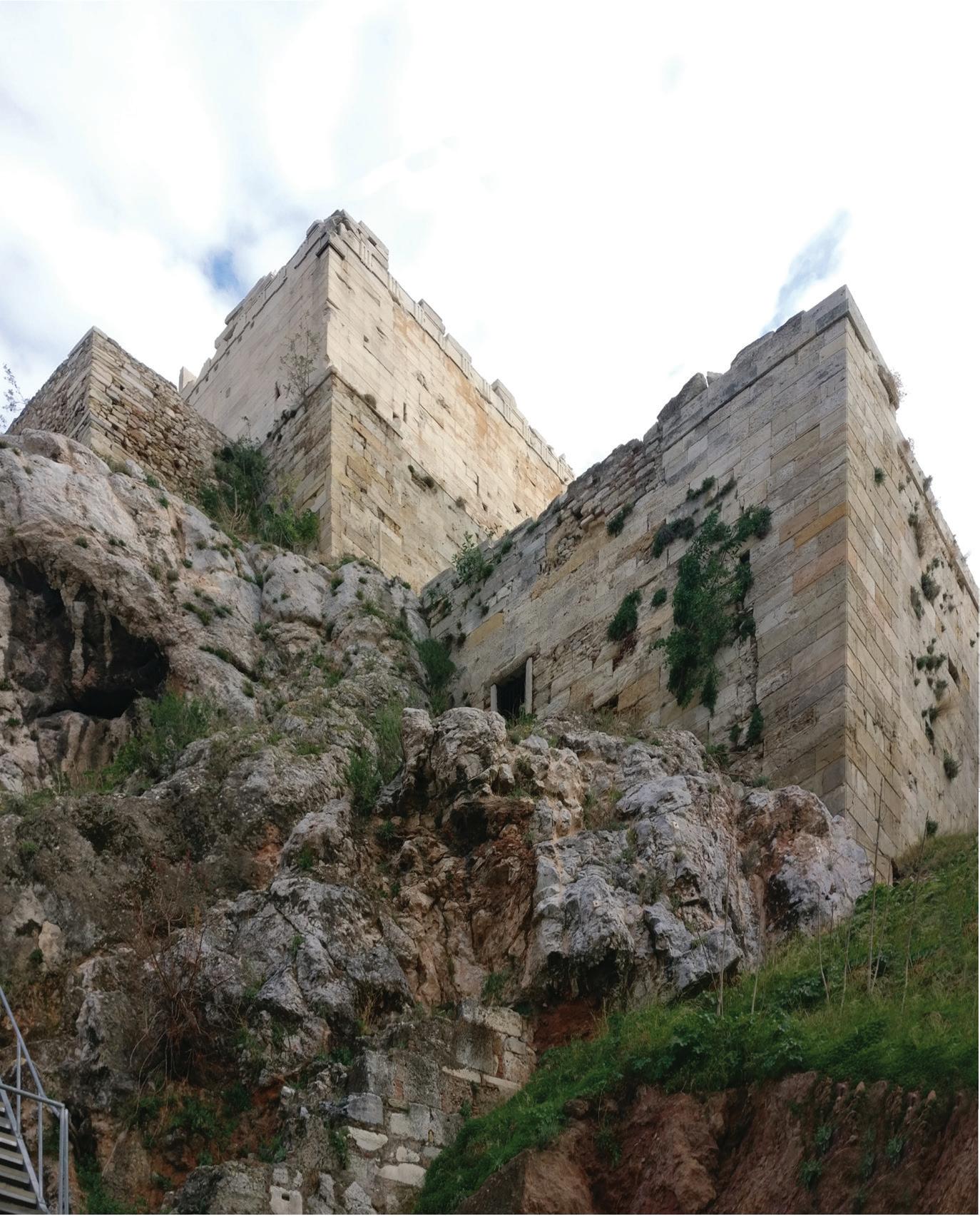
DOMESTIC PORTALS
SIMI, GREECE
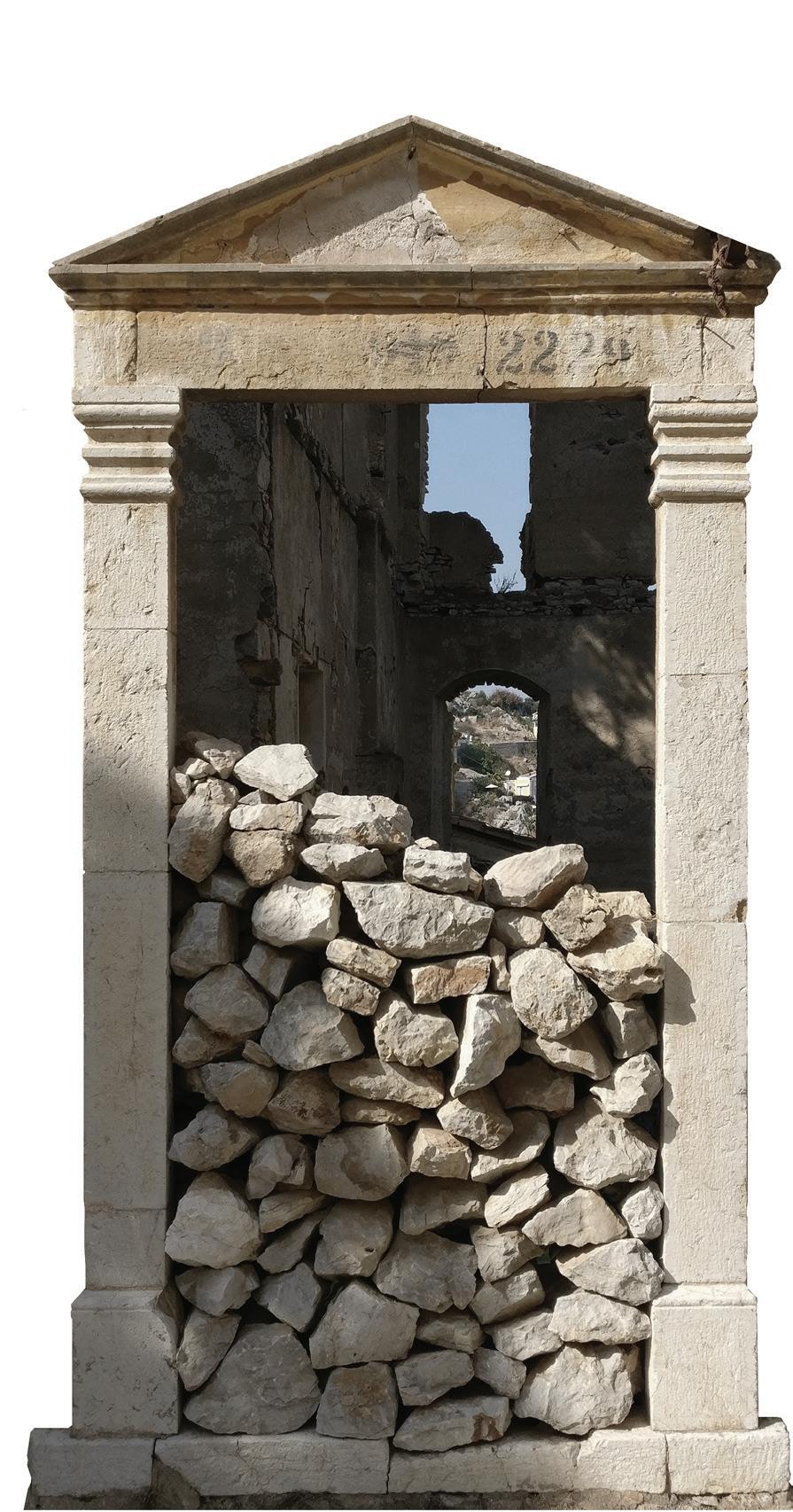
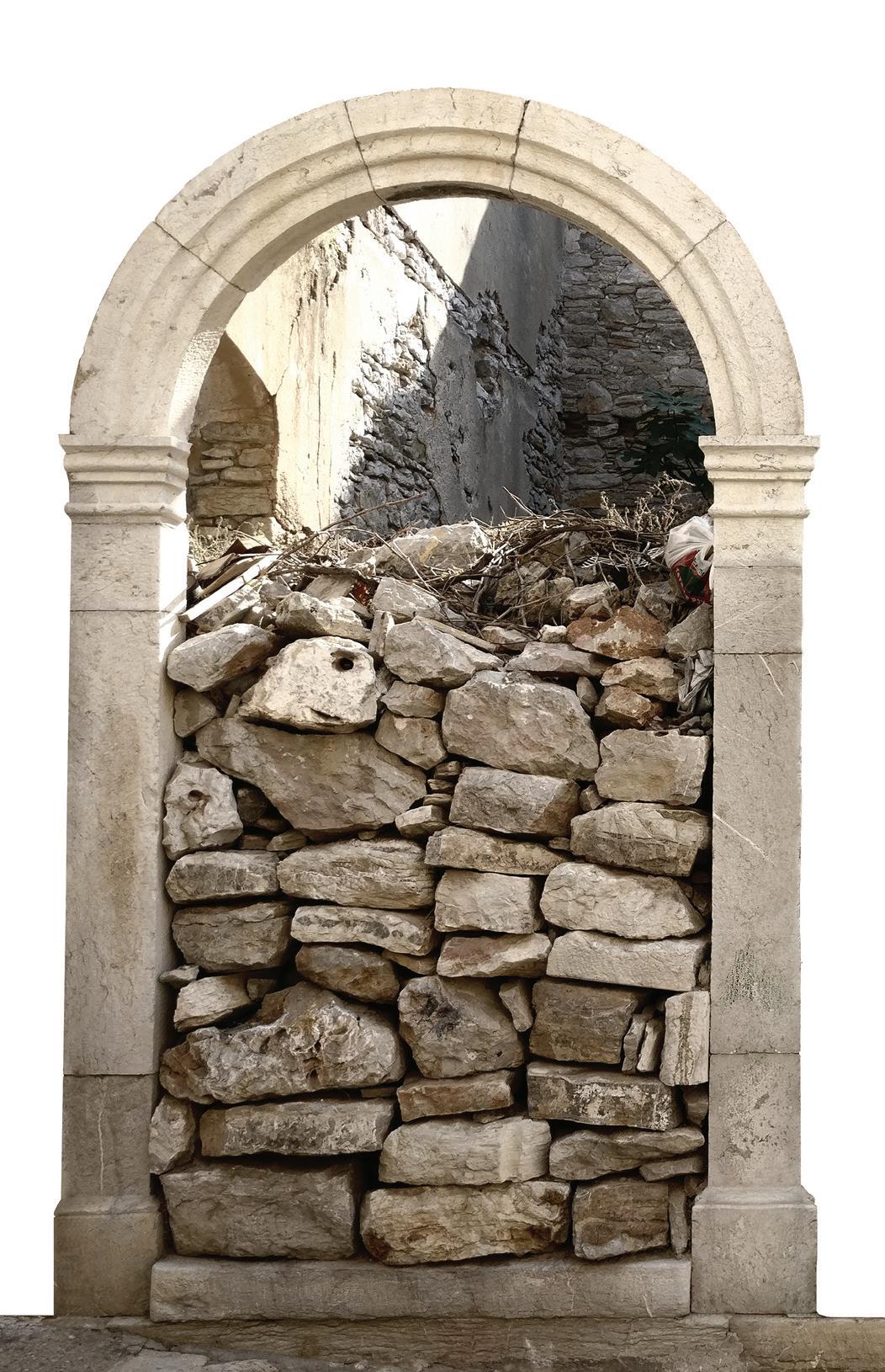
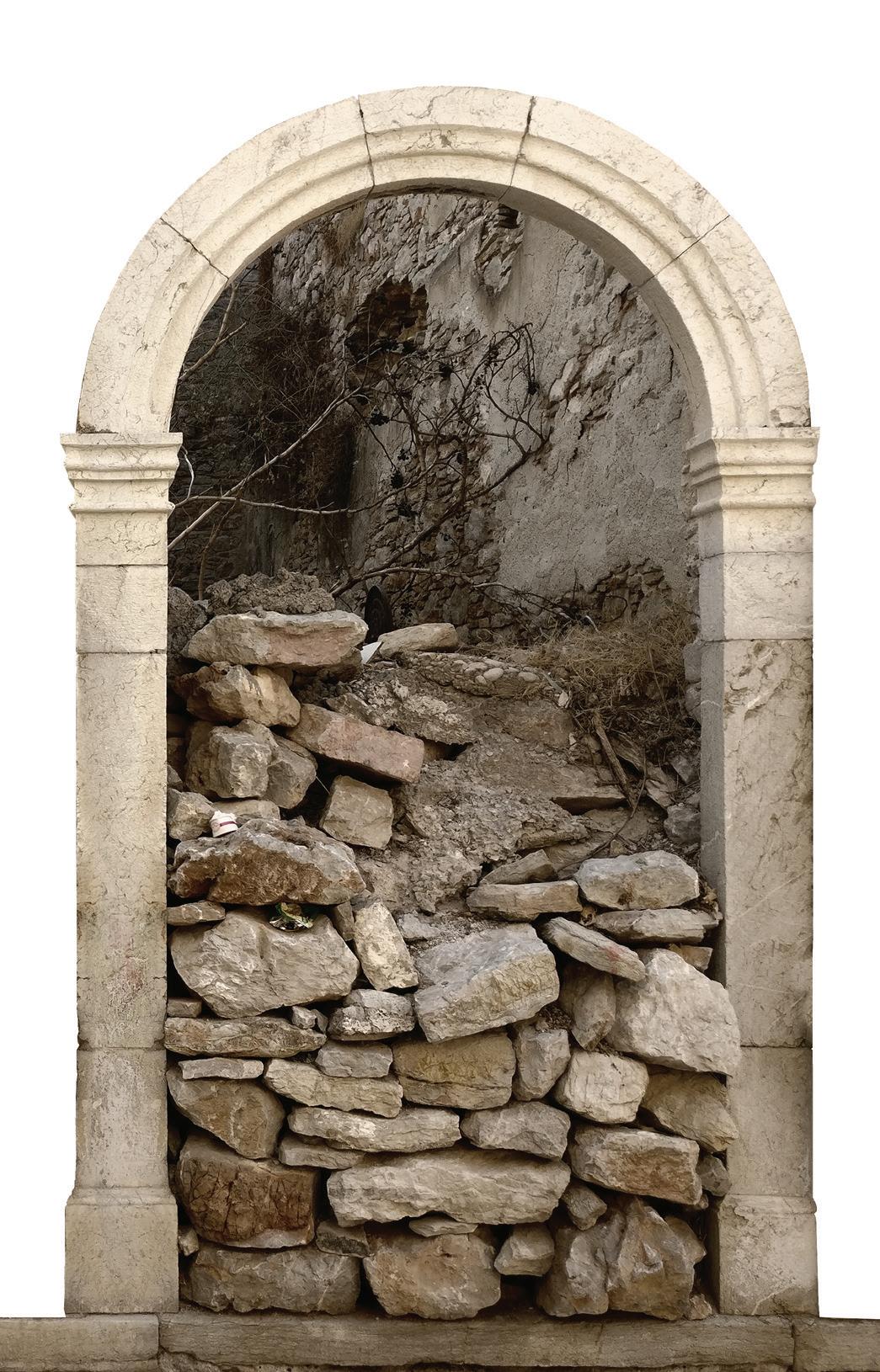
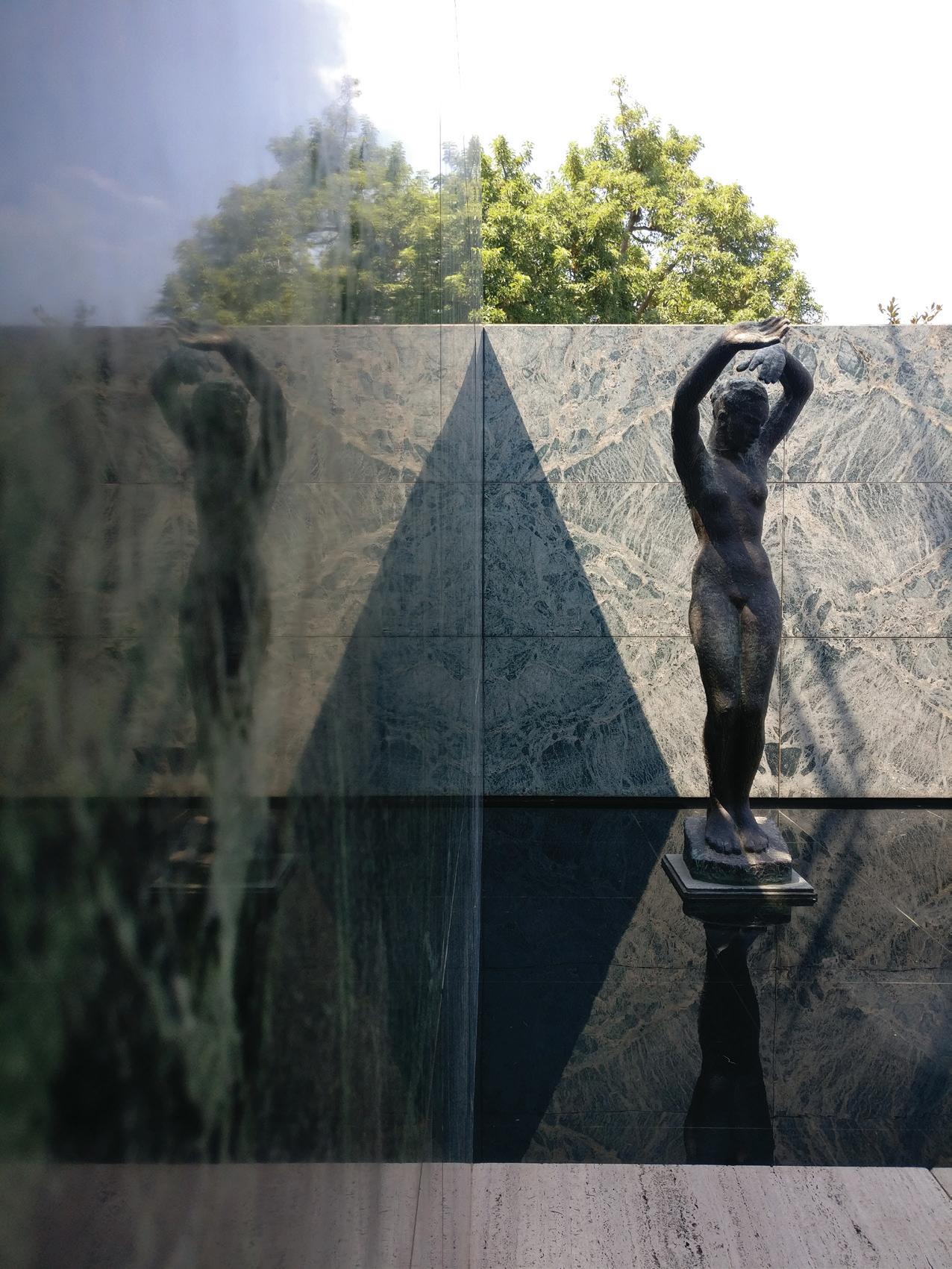
BARCELONA PAVILION BARCELONA, SPAINMUSEU BLAU BARCELONA, SPAIN
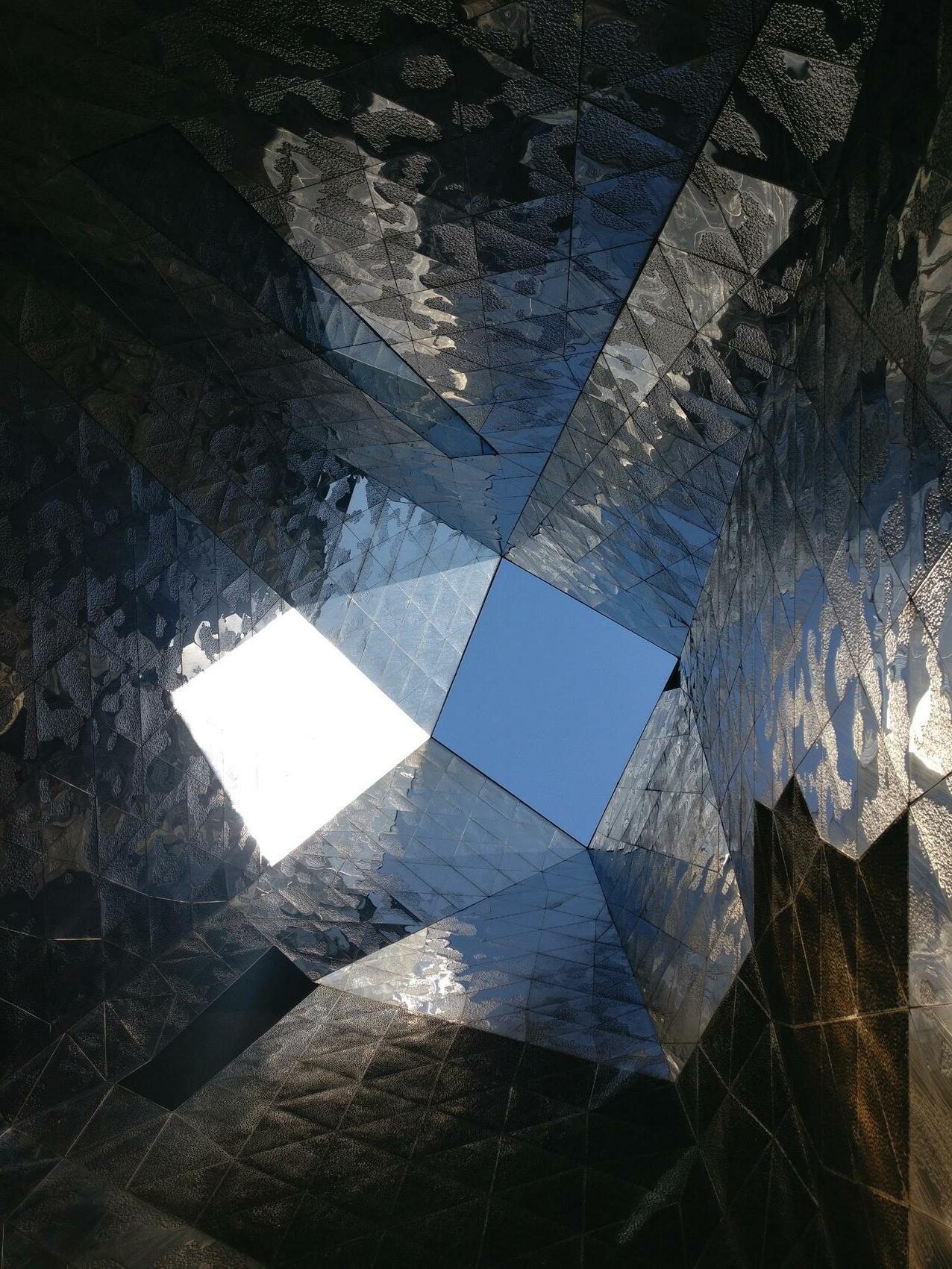
MOUNTAIN CHAPEL AEGEAN, GREECE
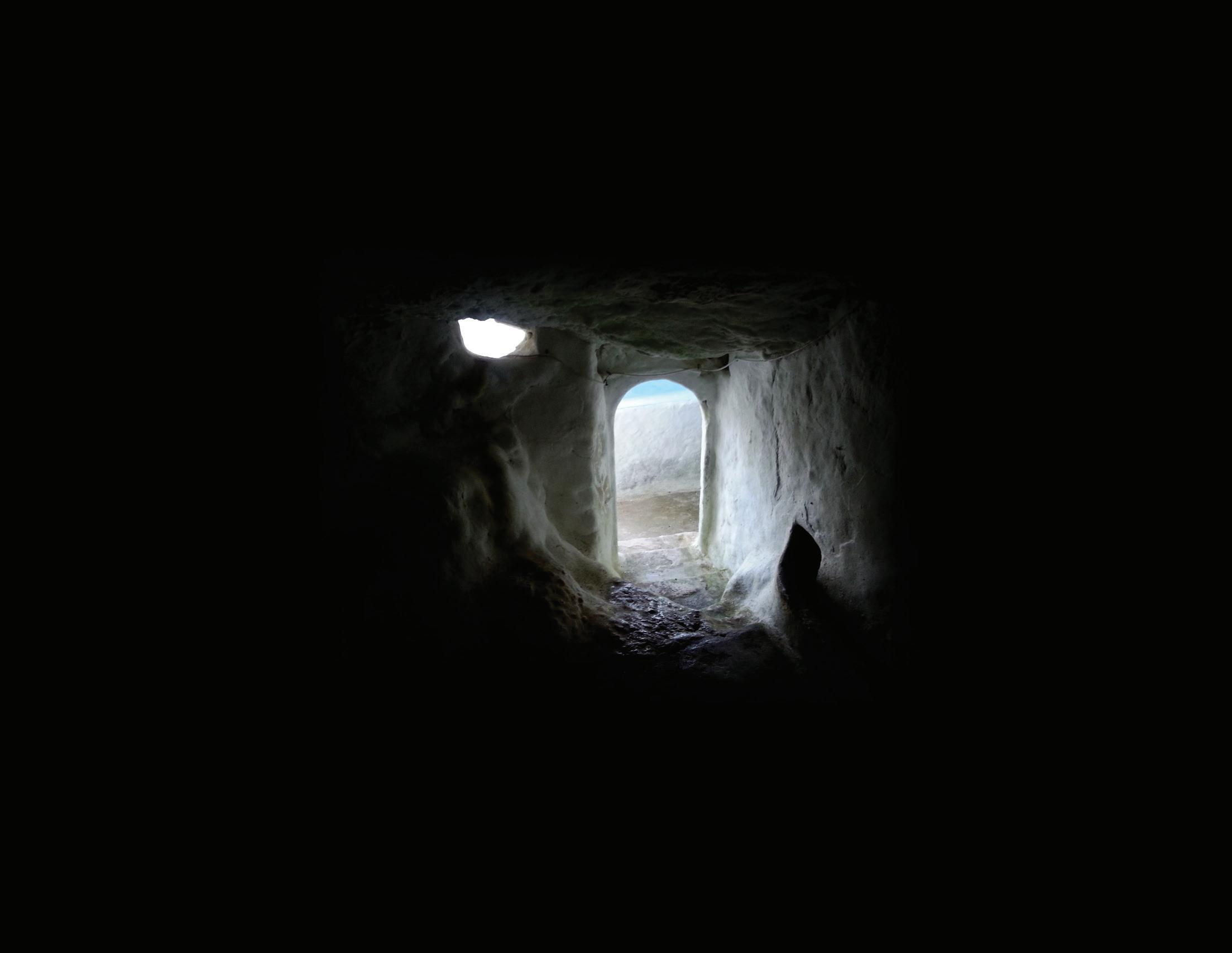
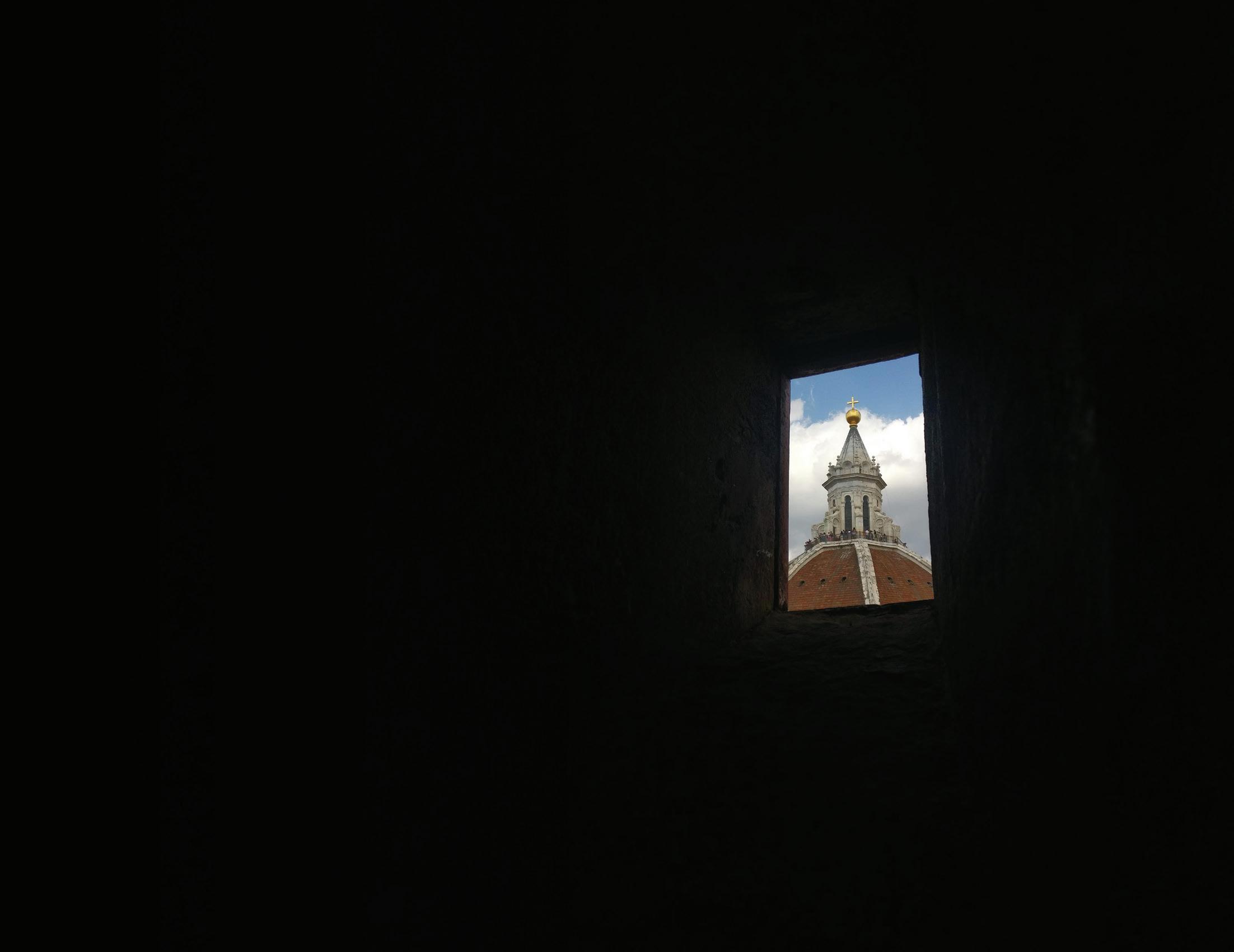 THE DUOMO FLORENCE, ITALY
THE DUOMO FLORENCE, ITALY
